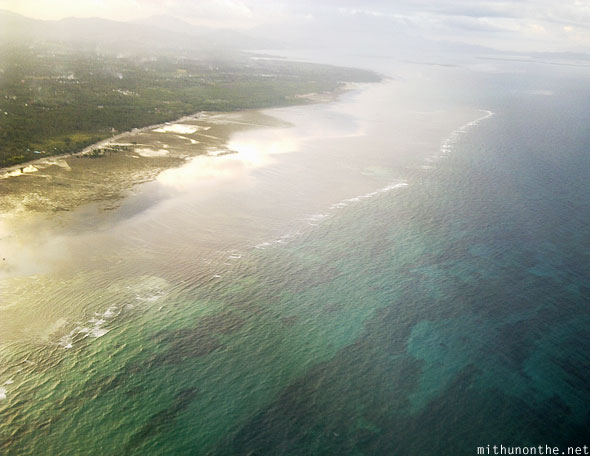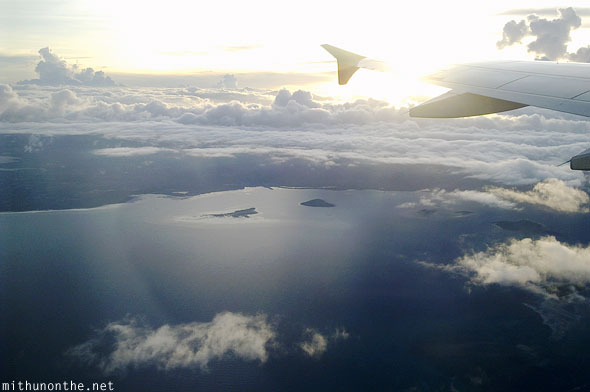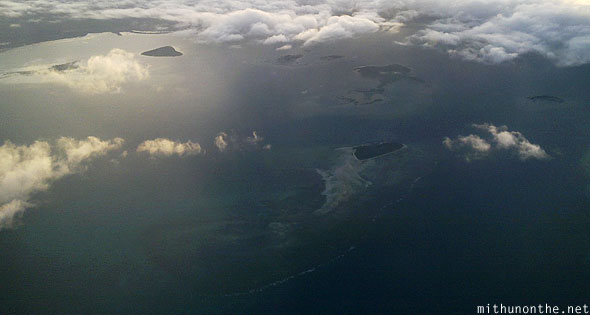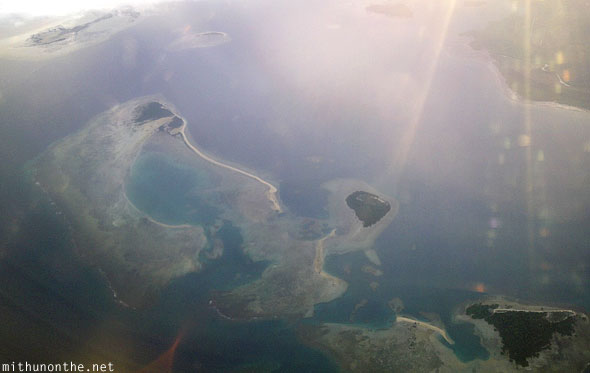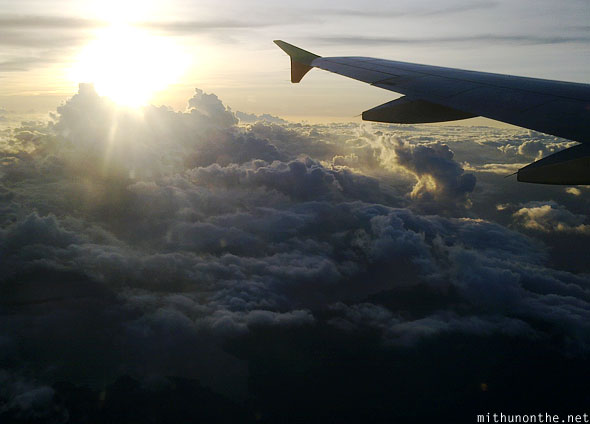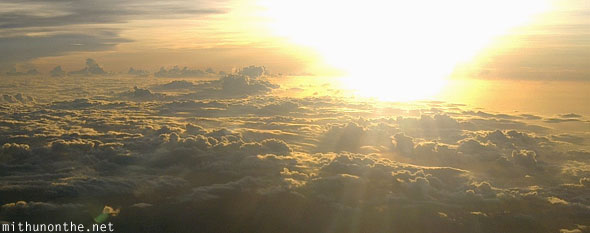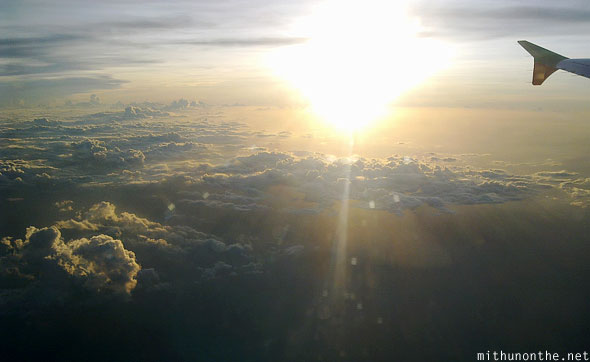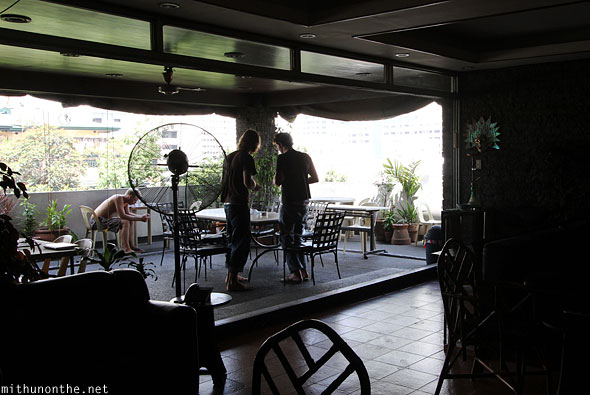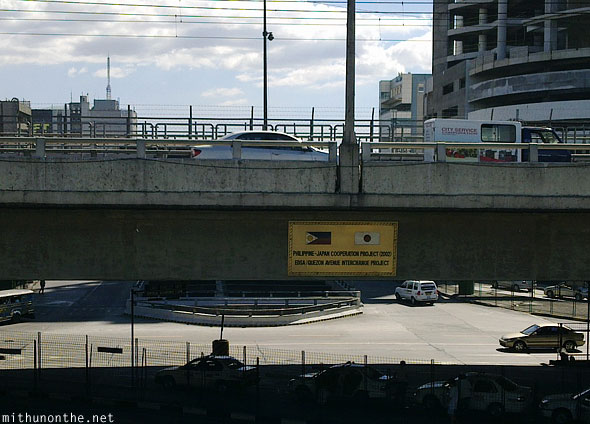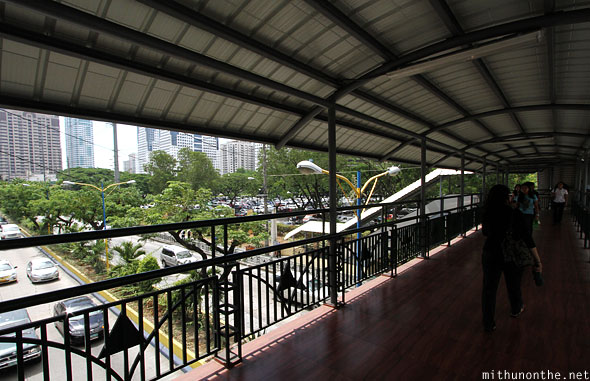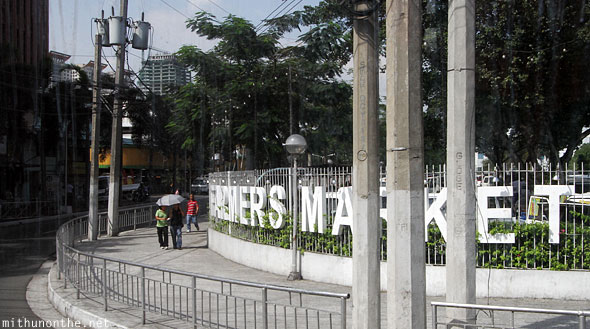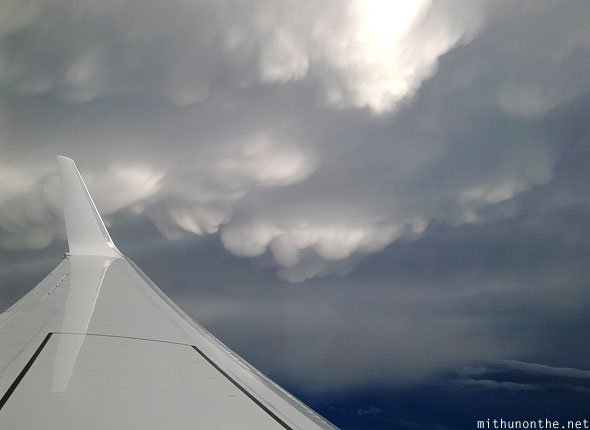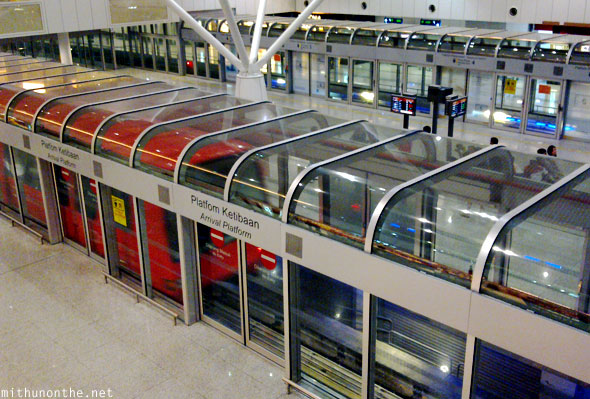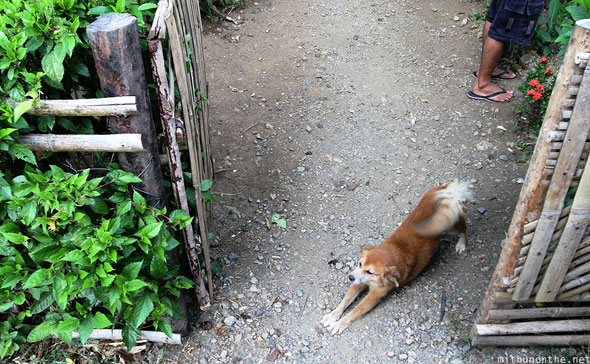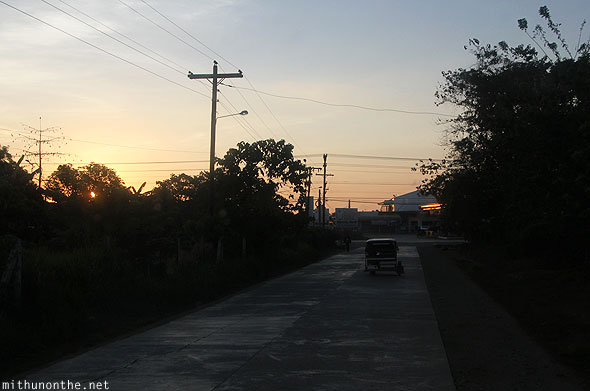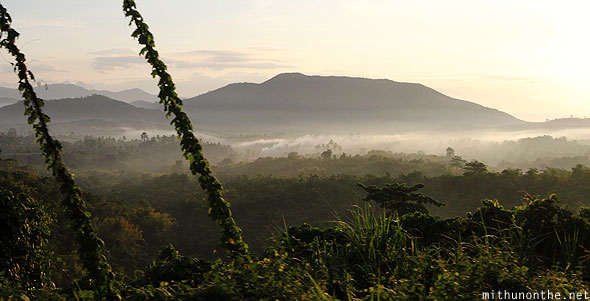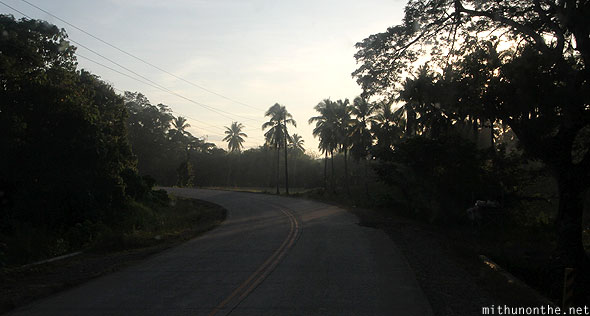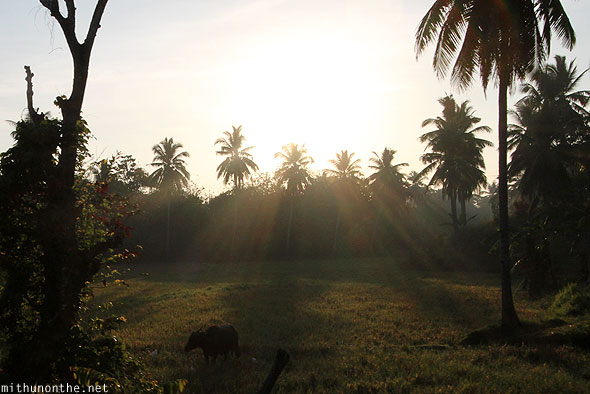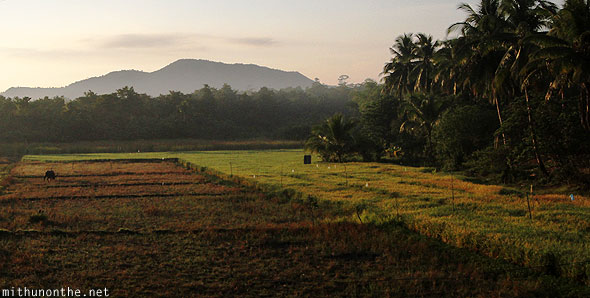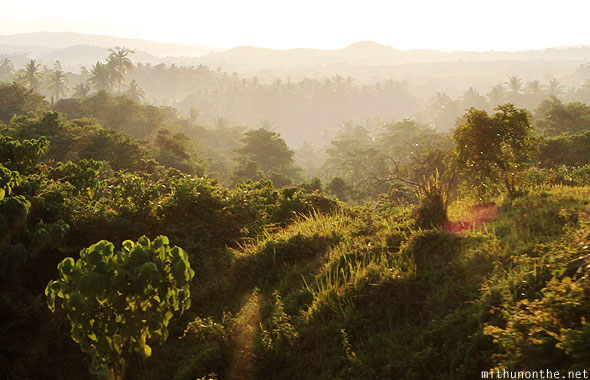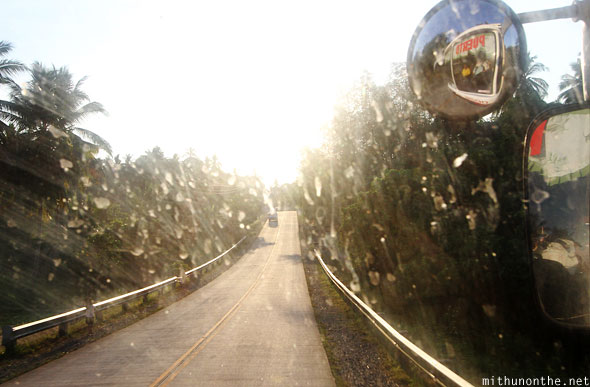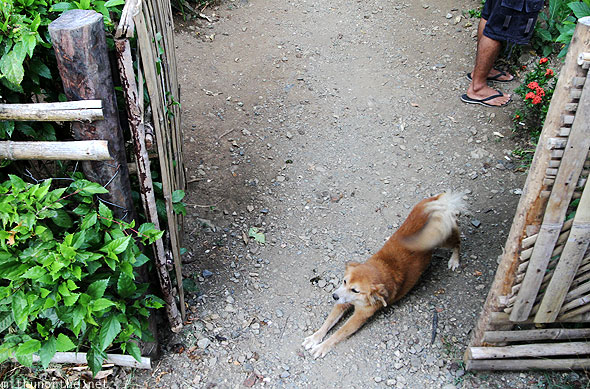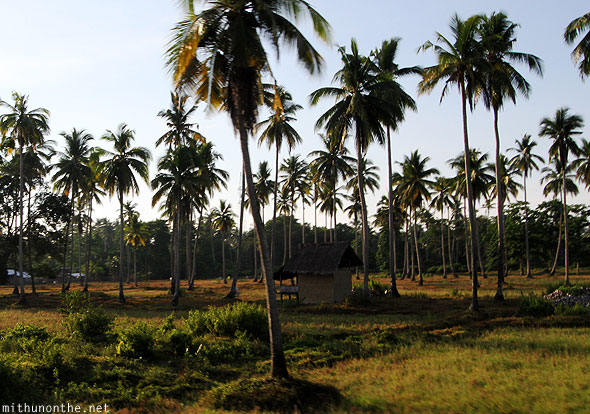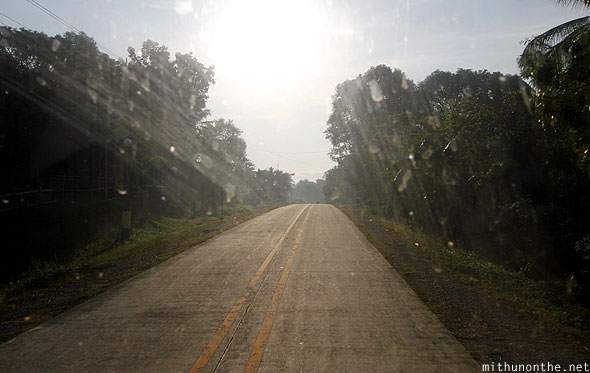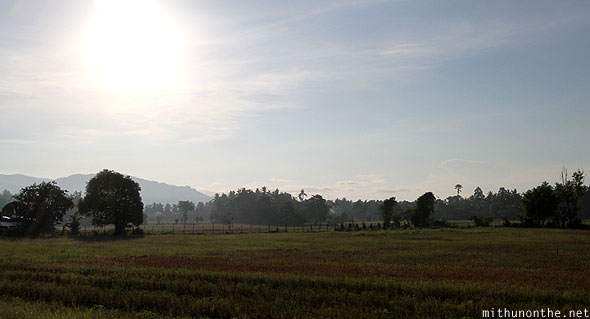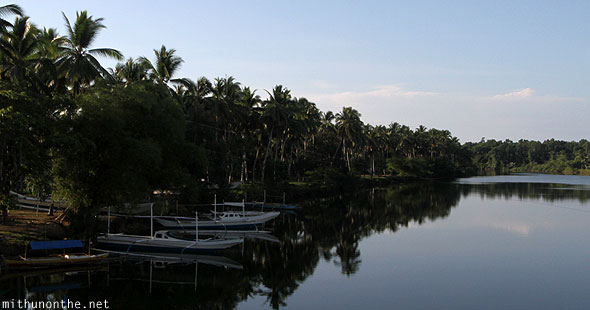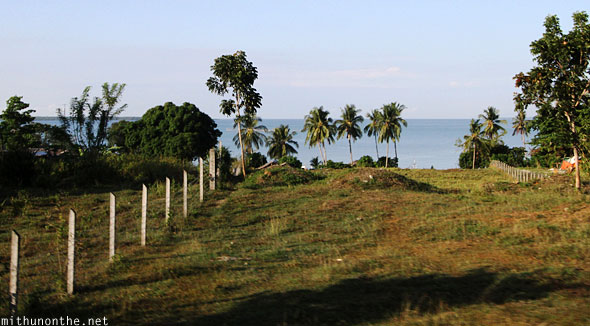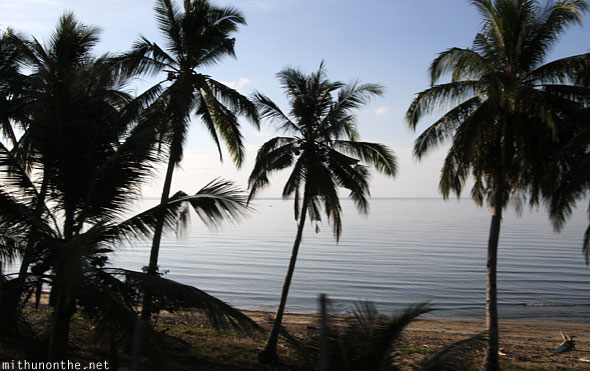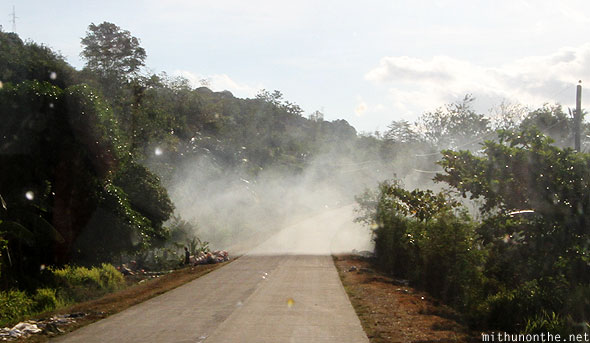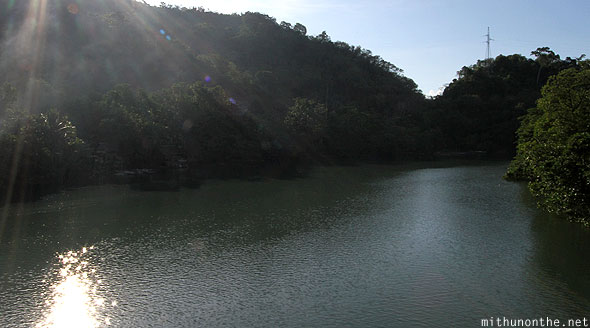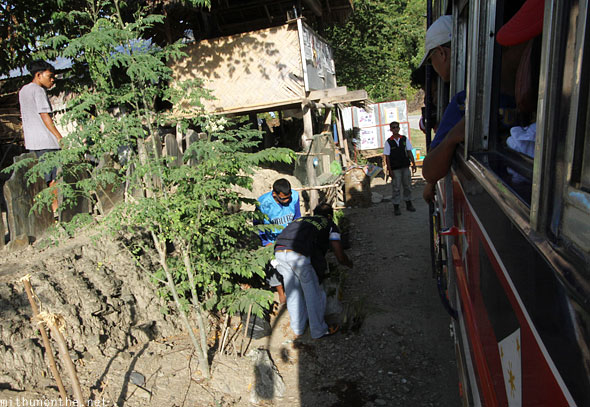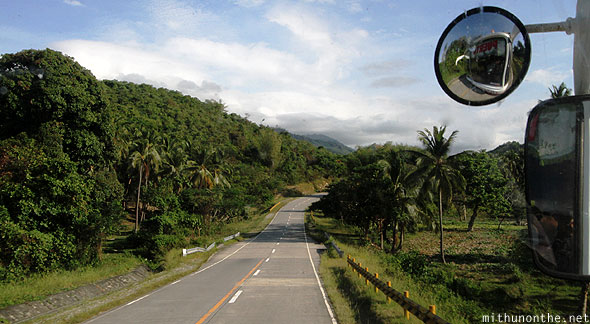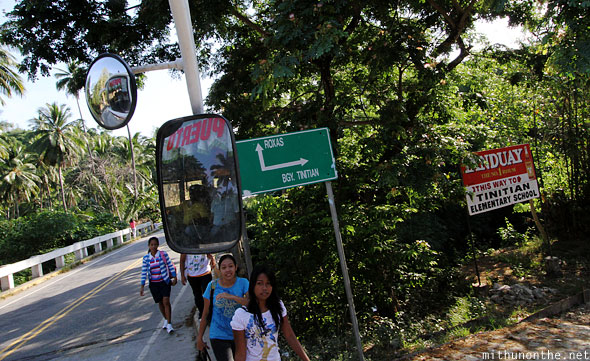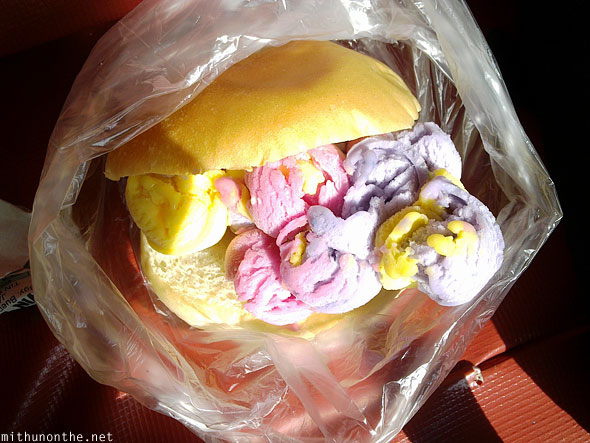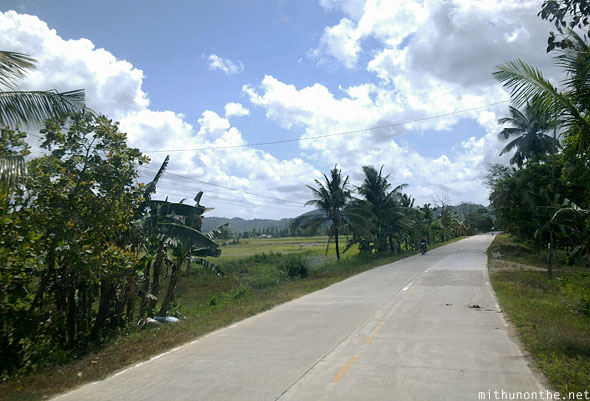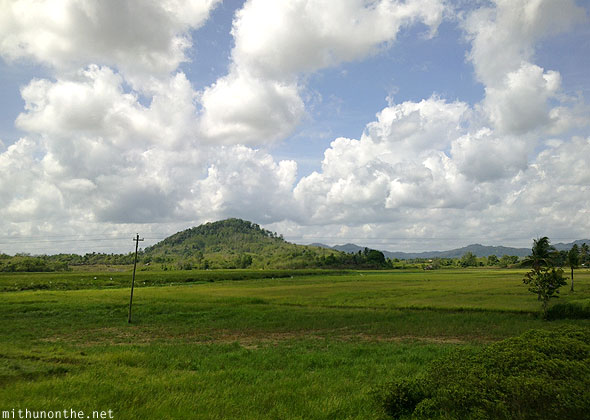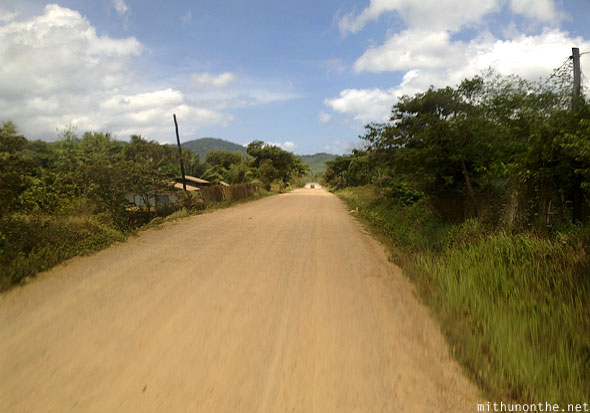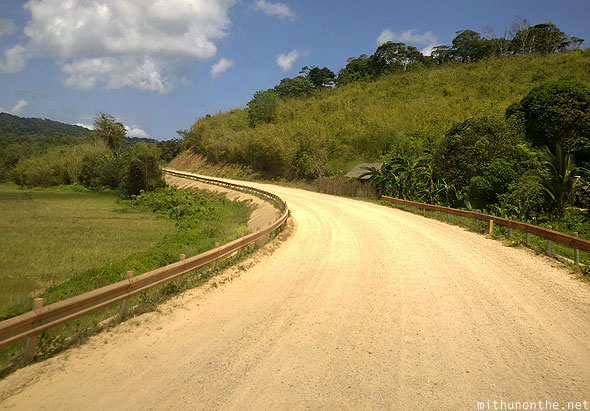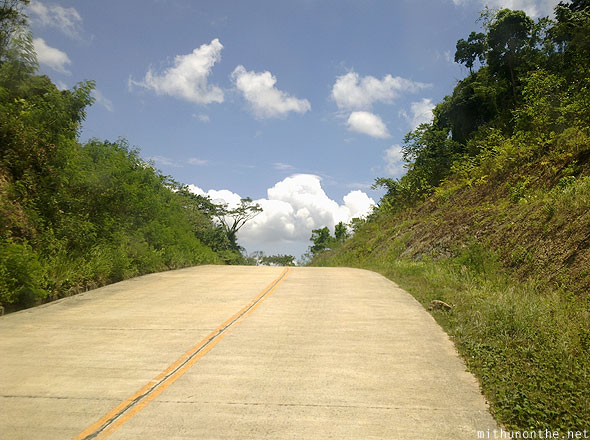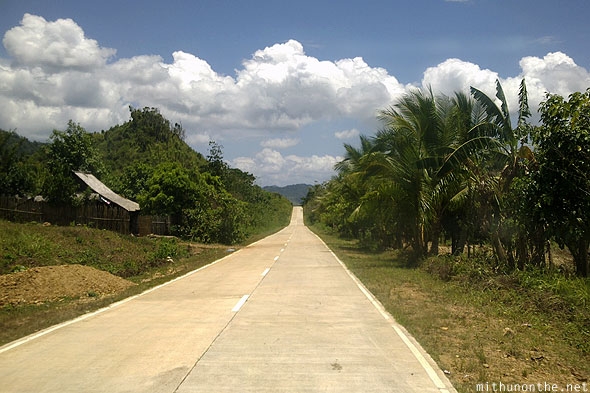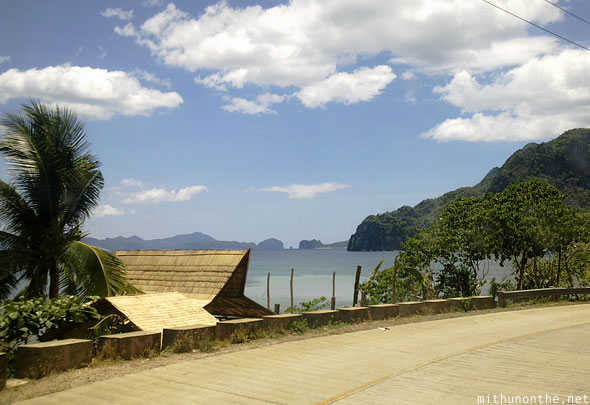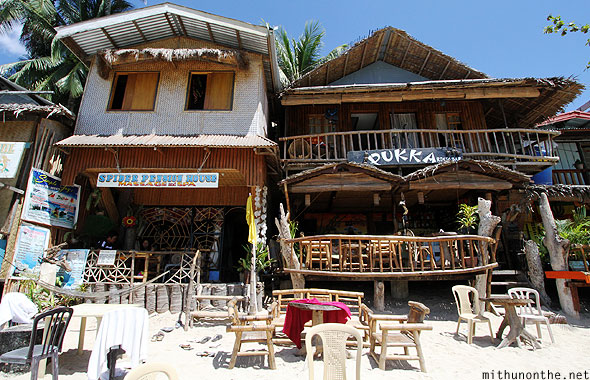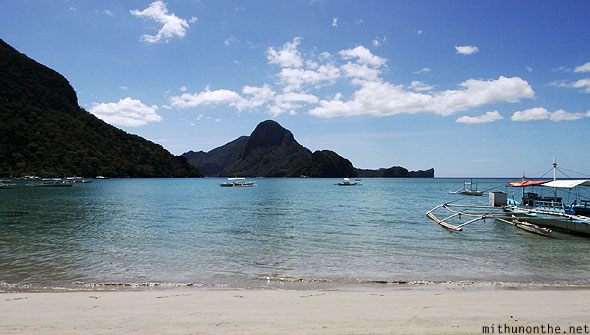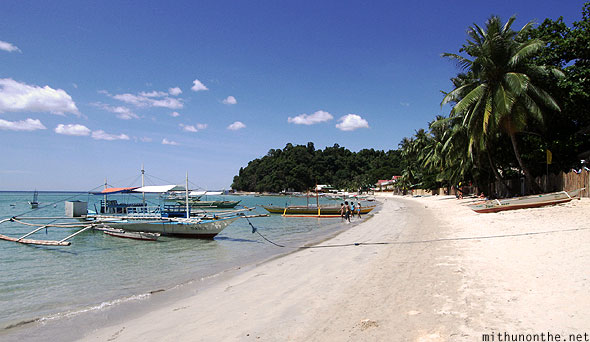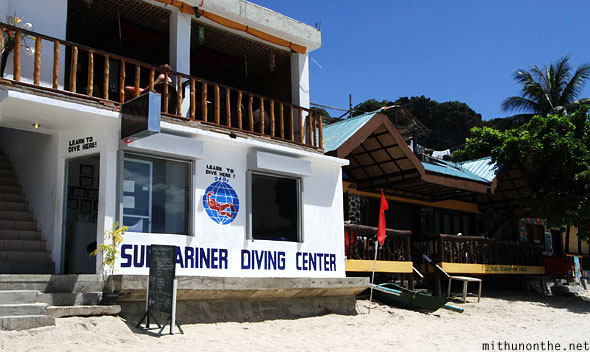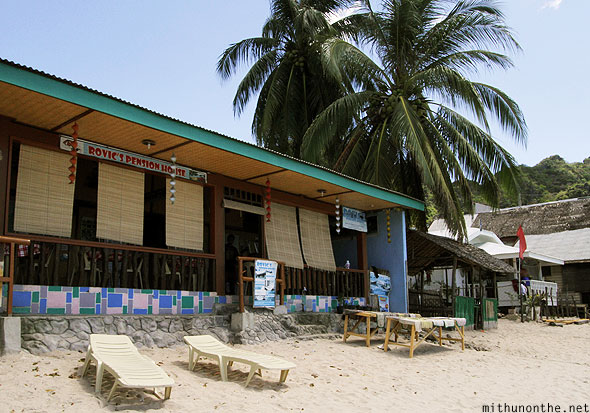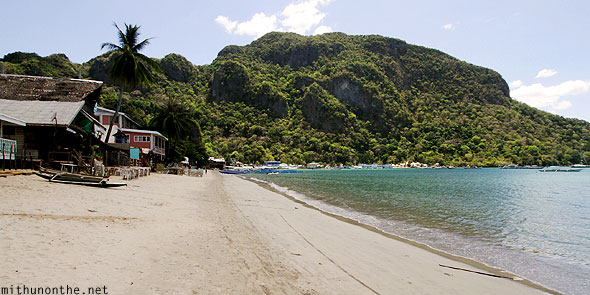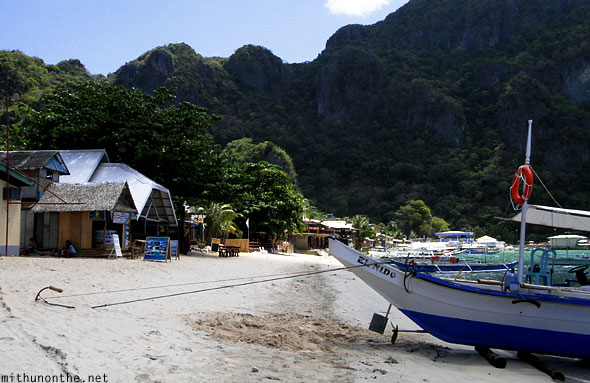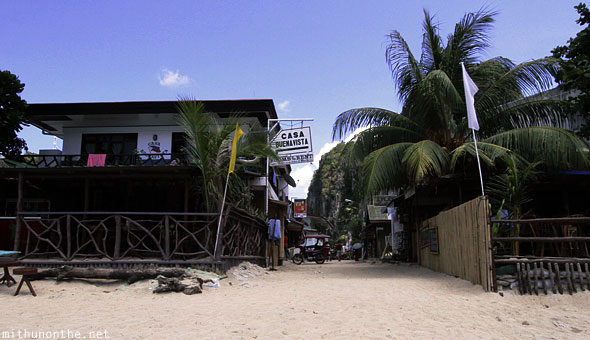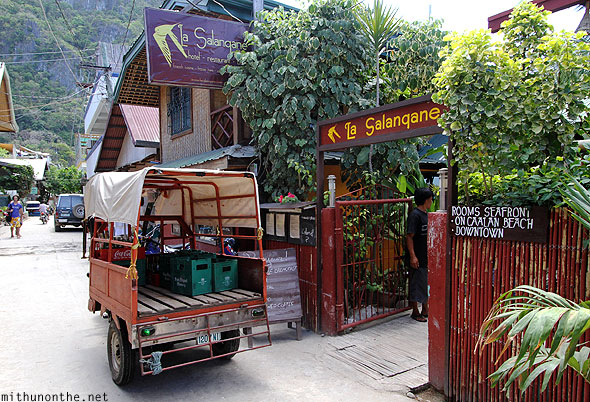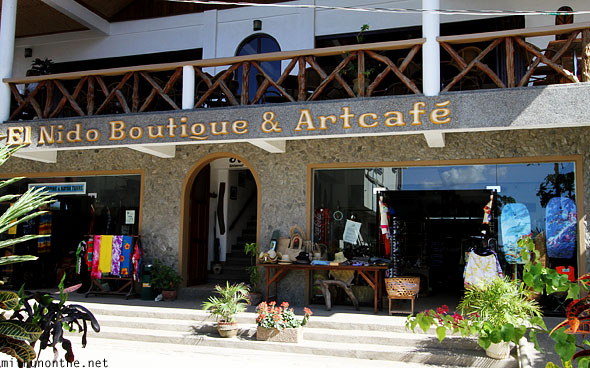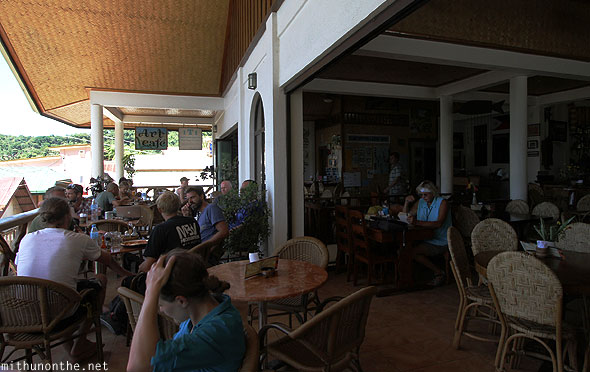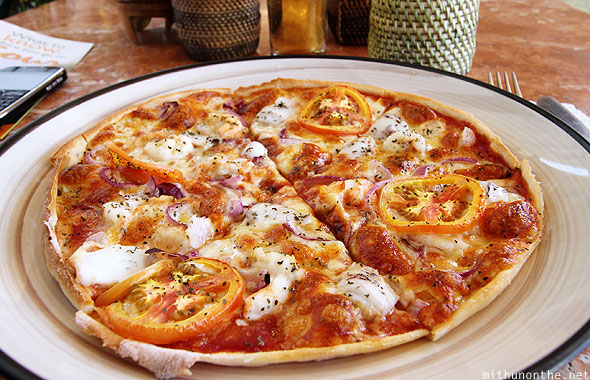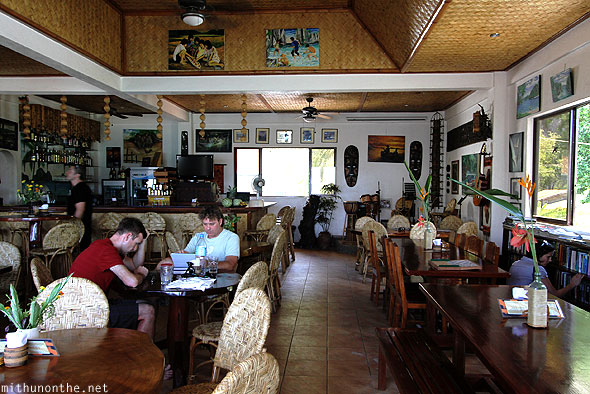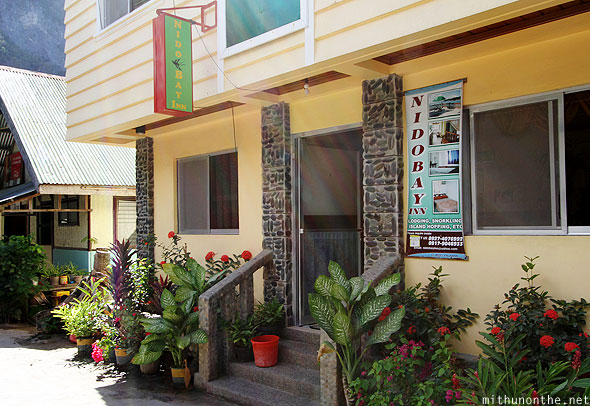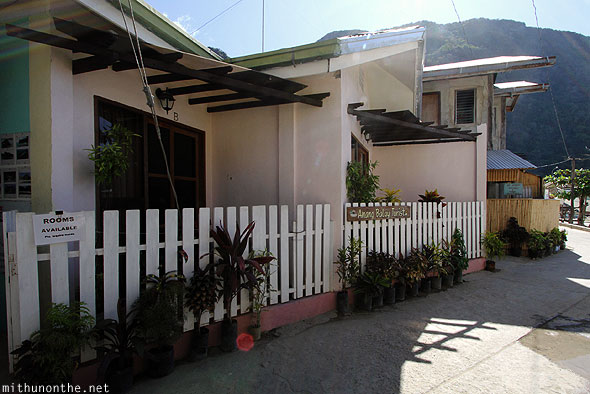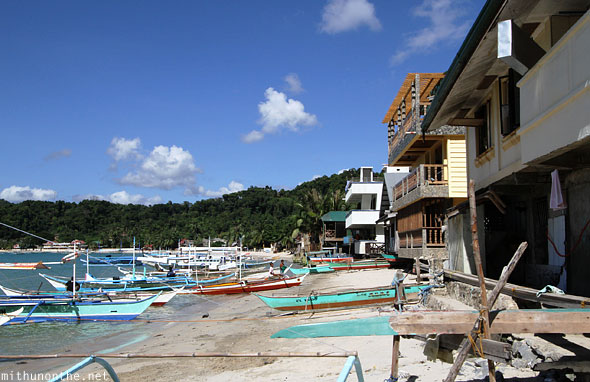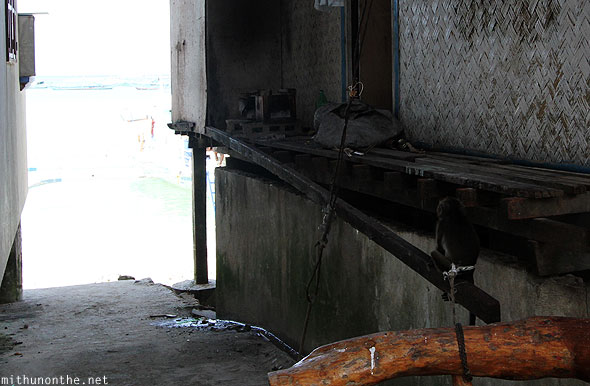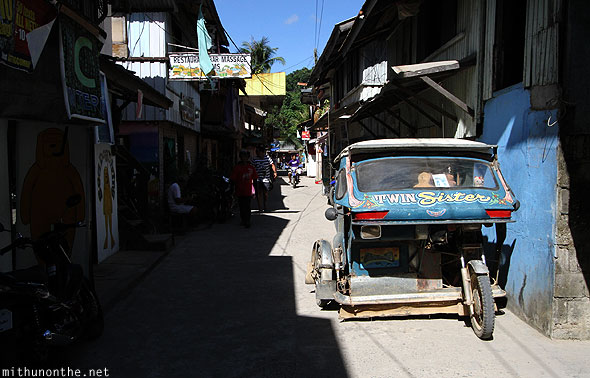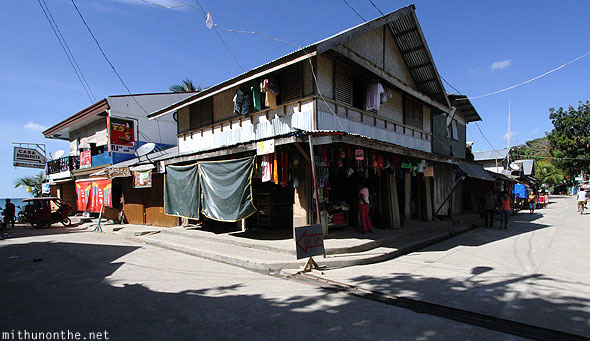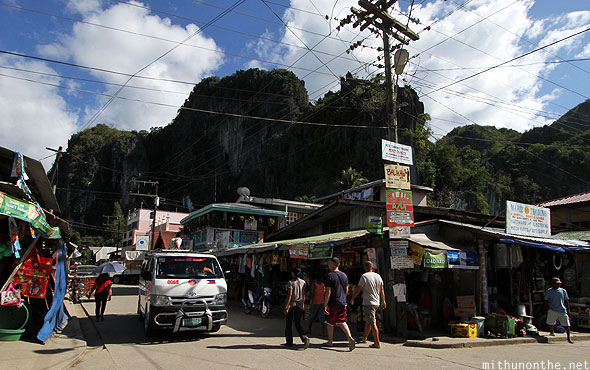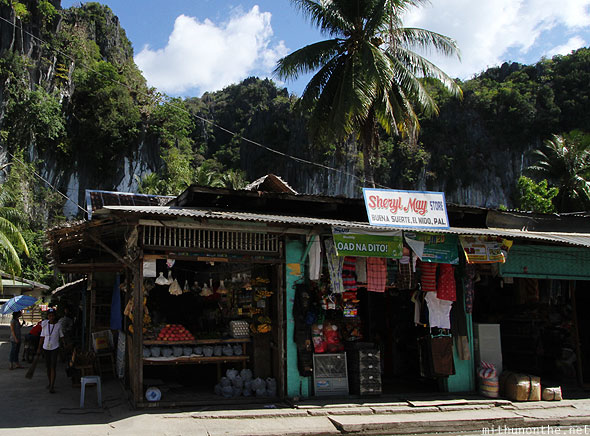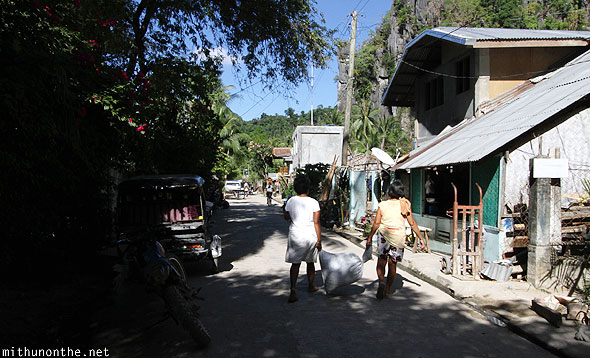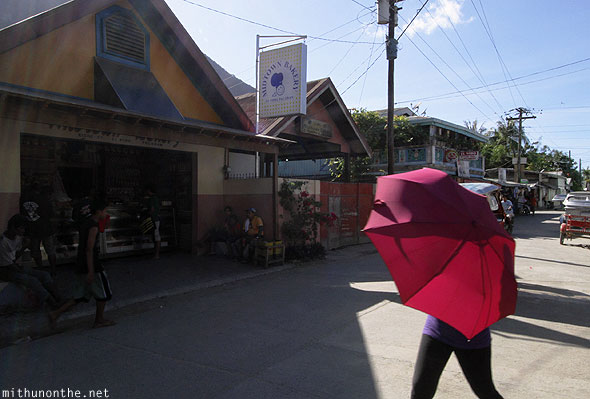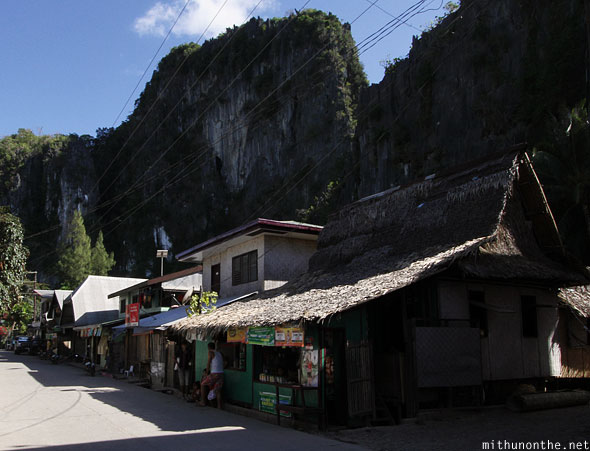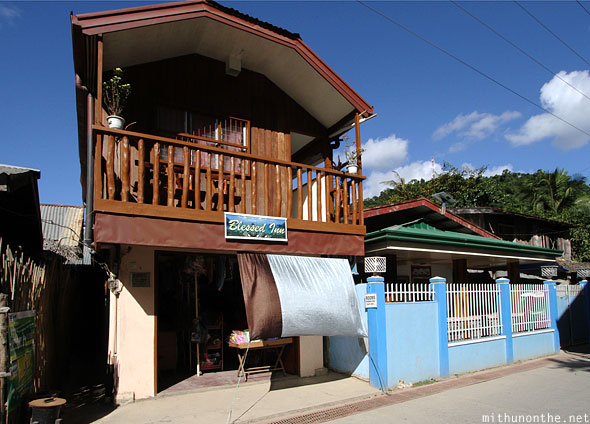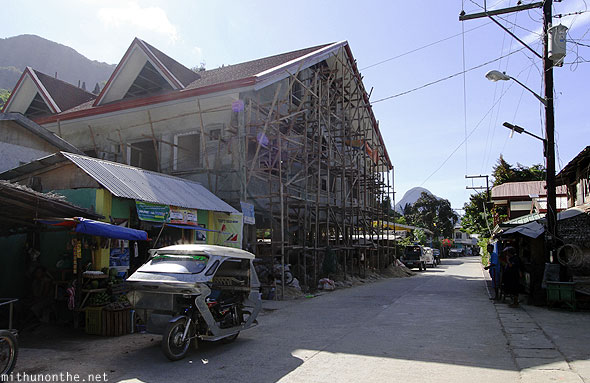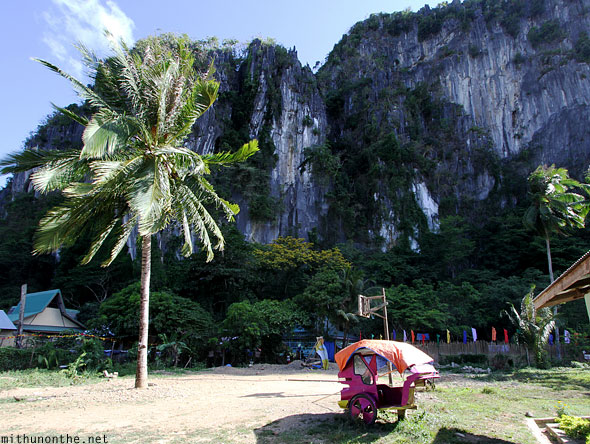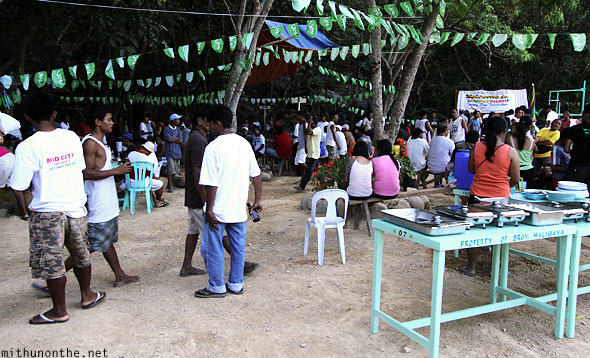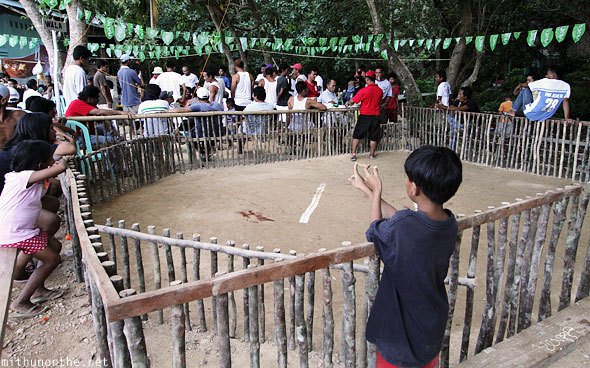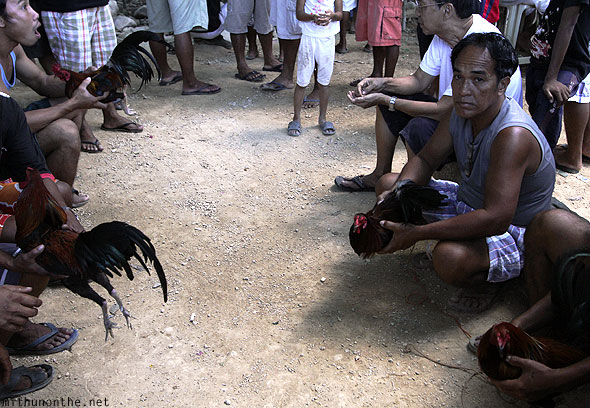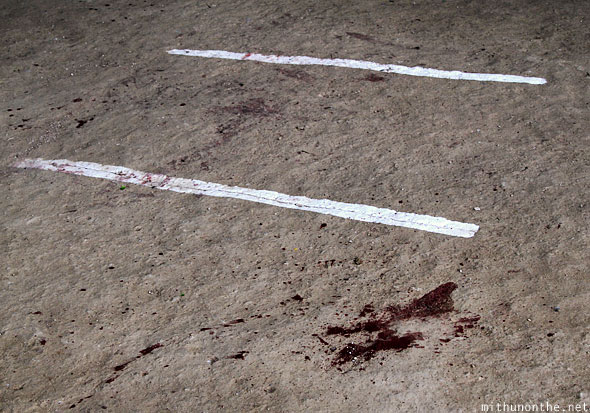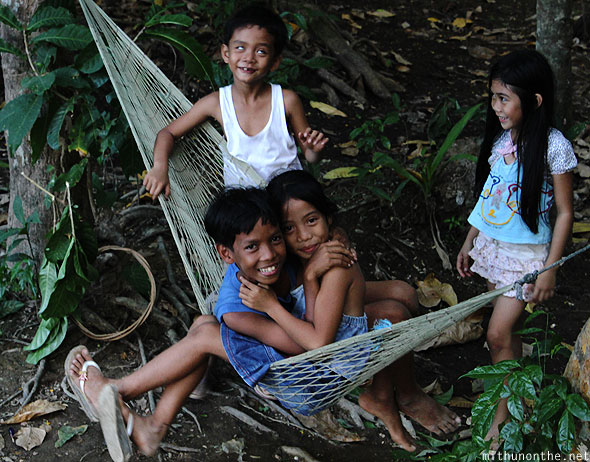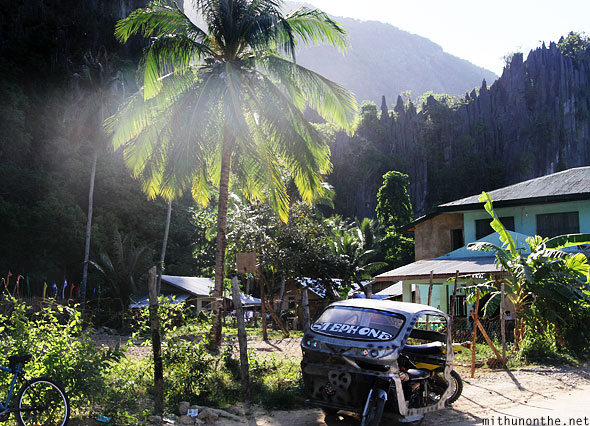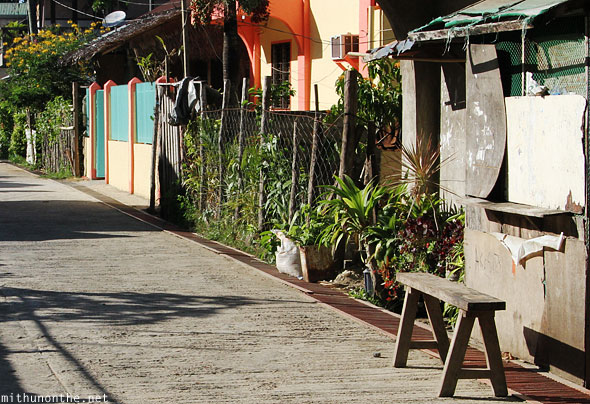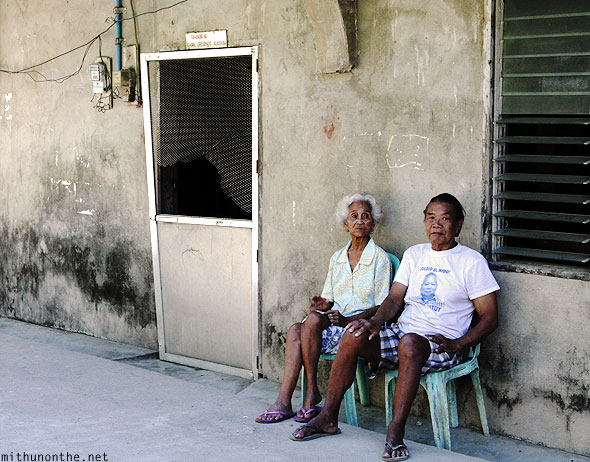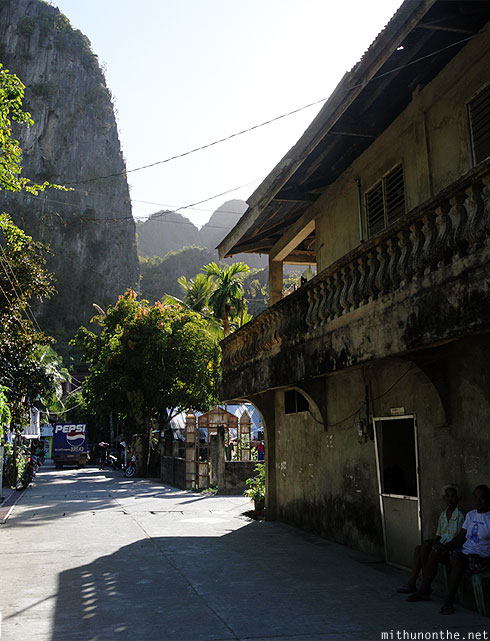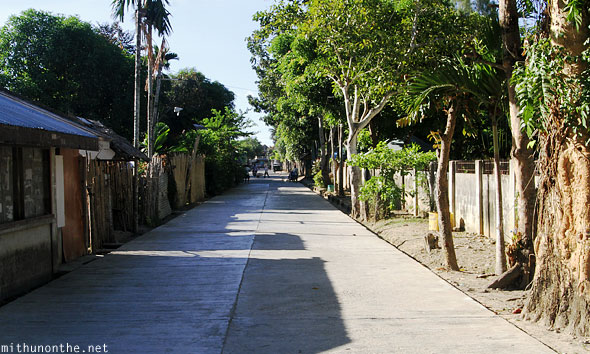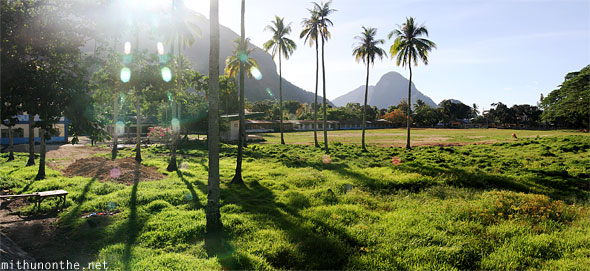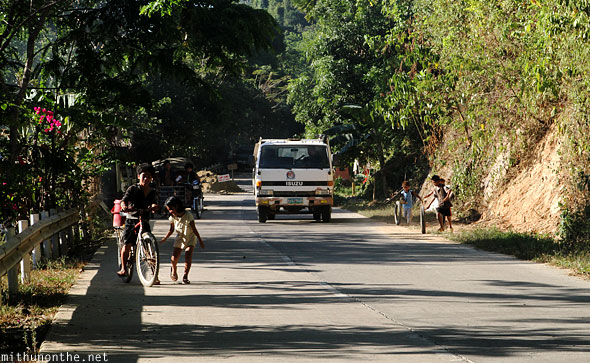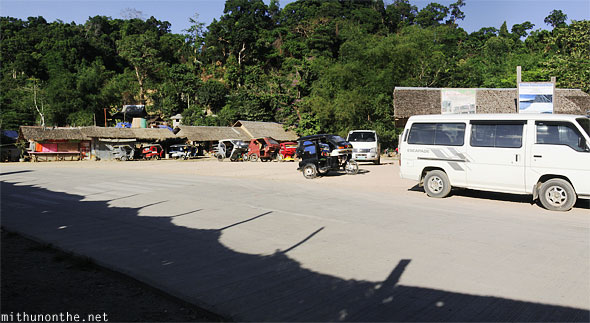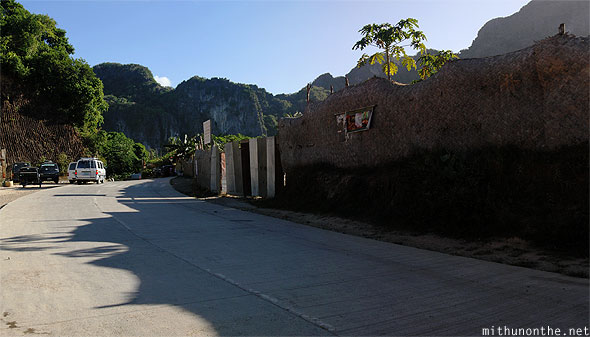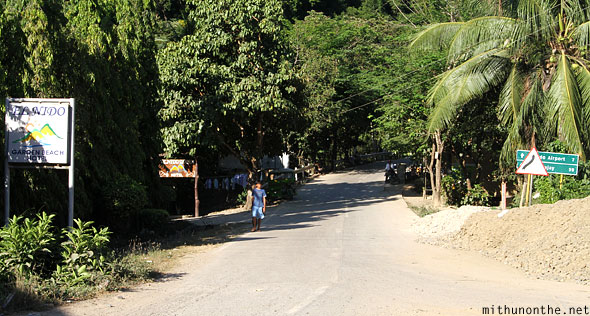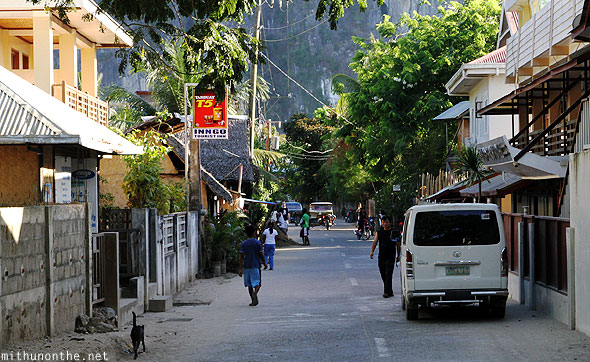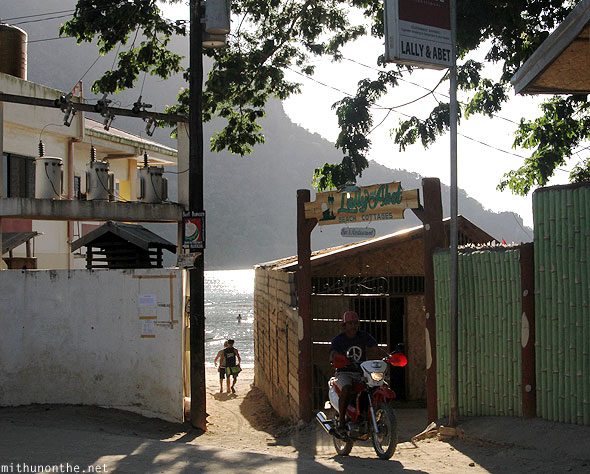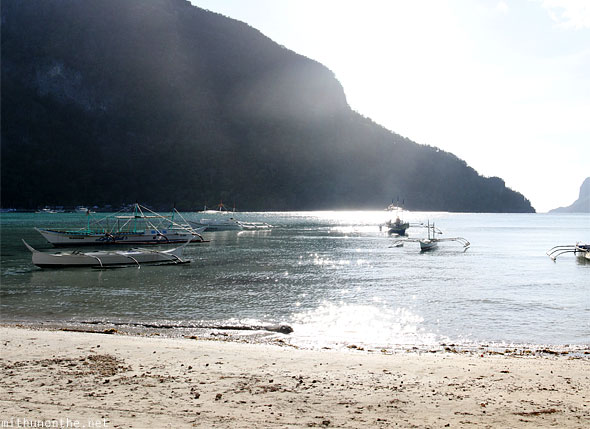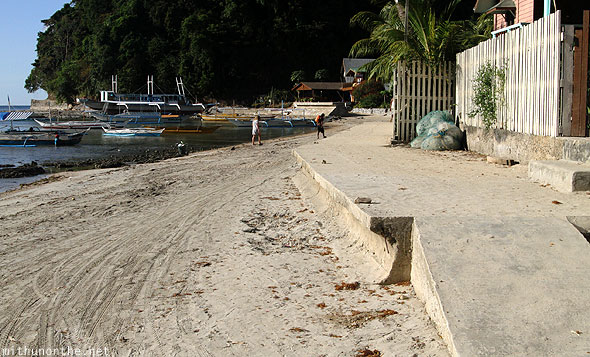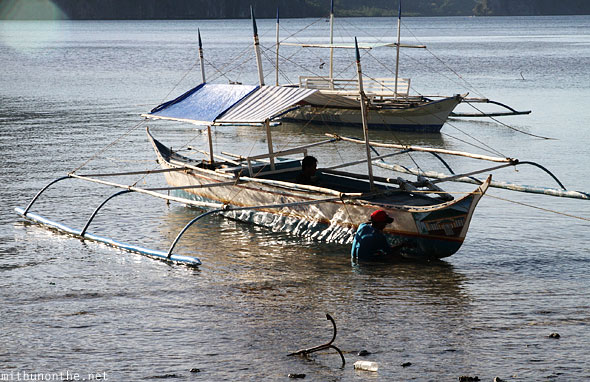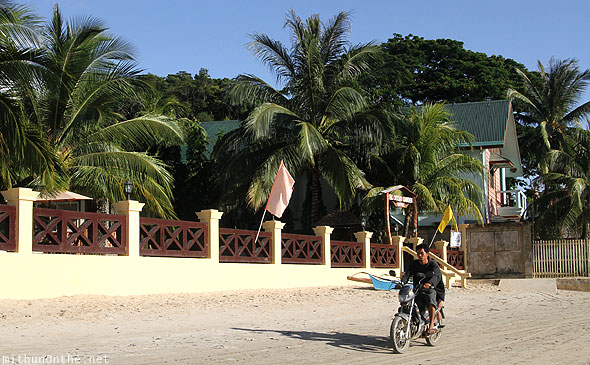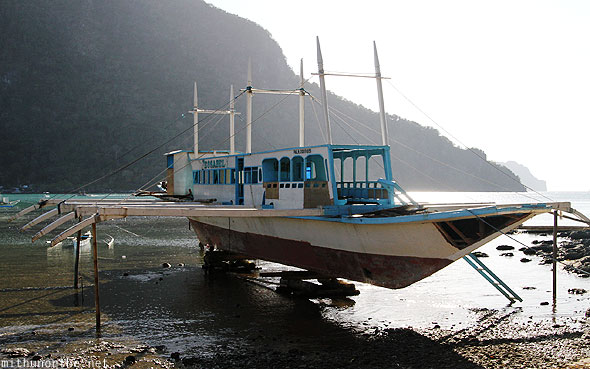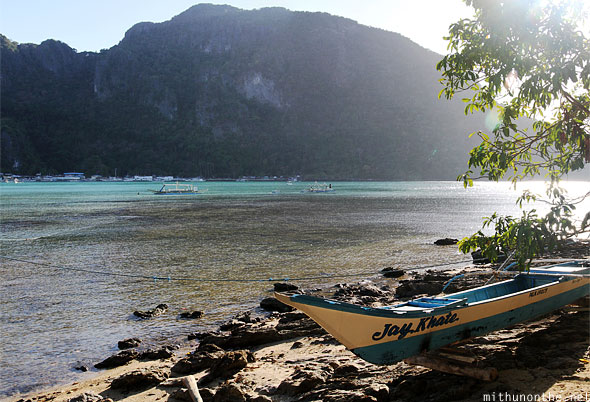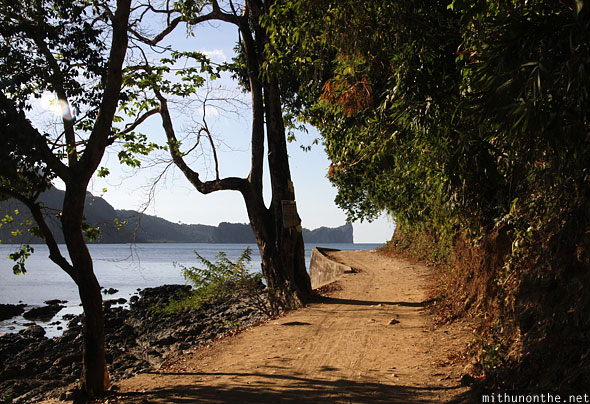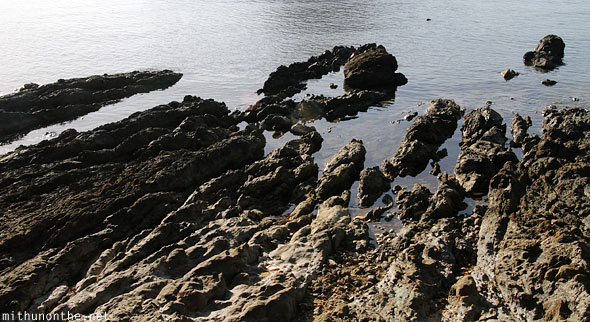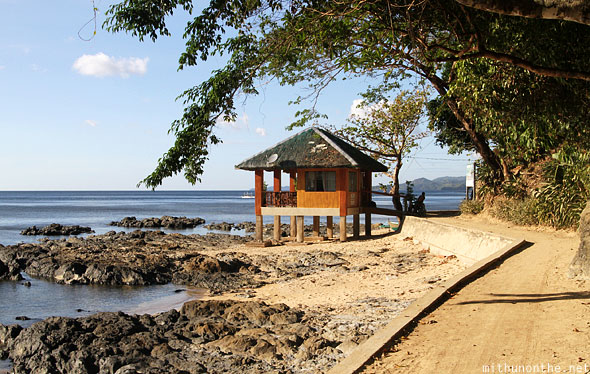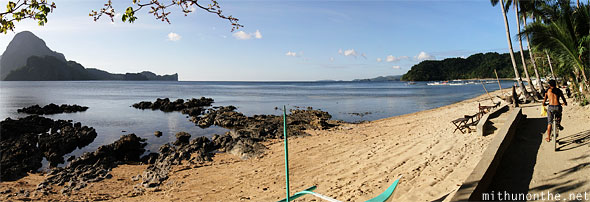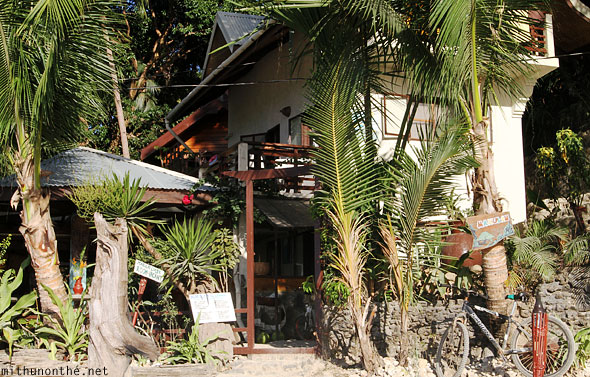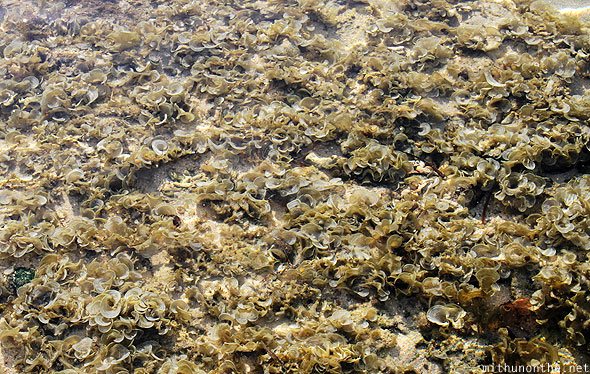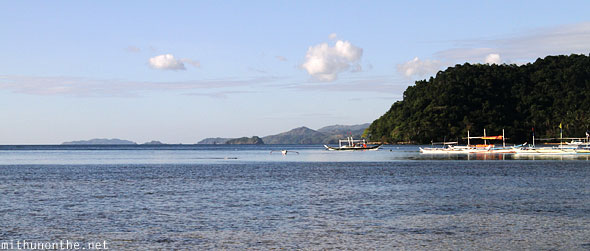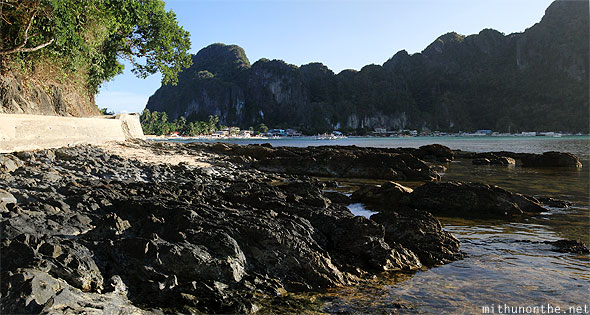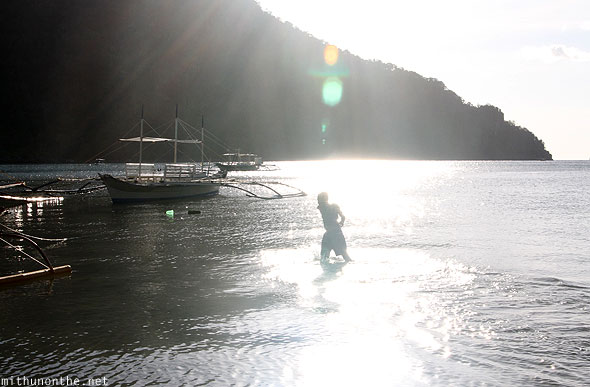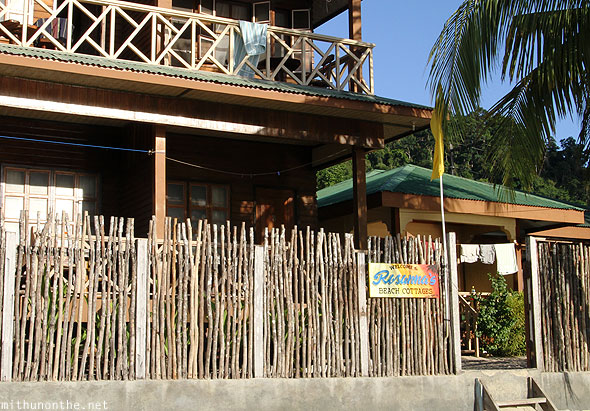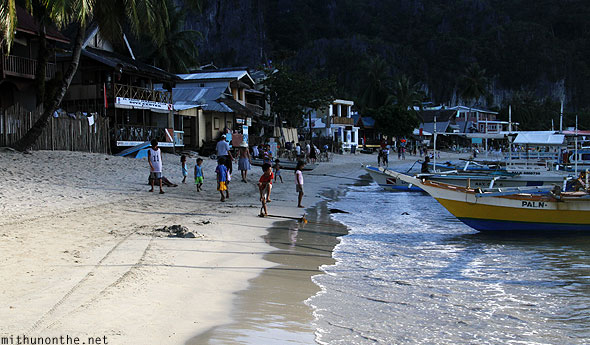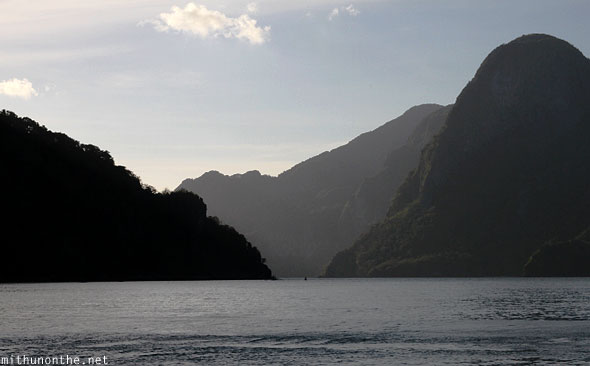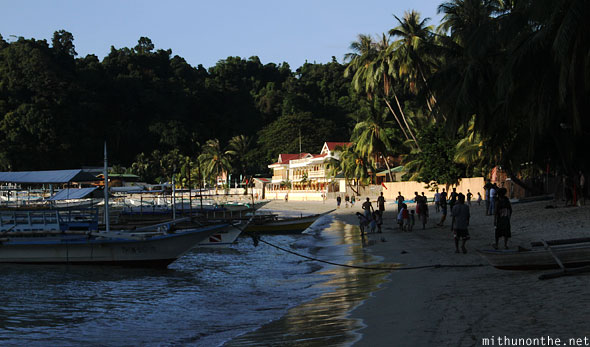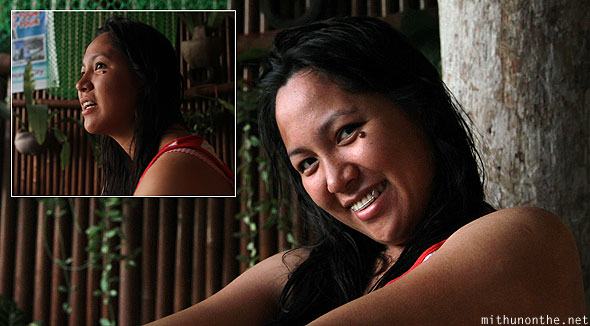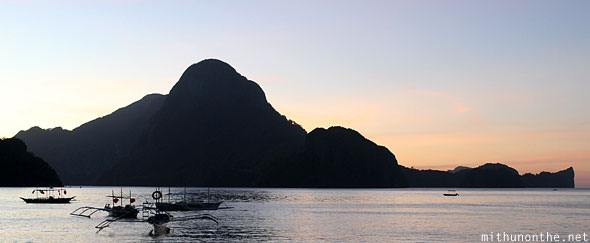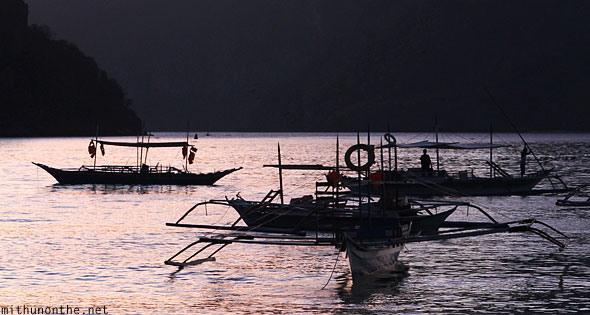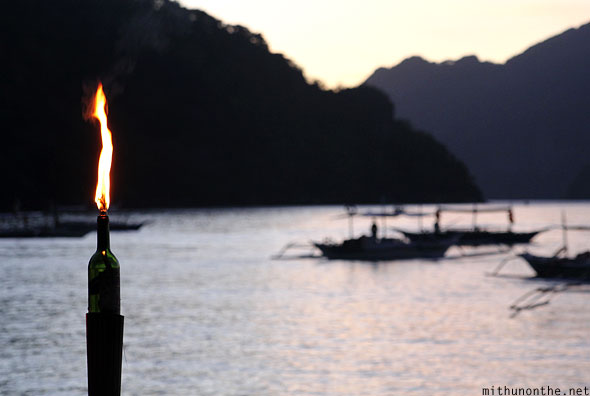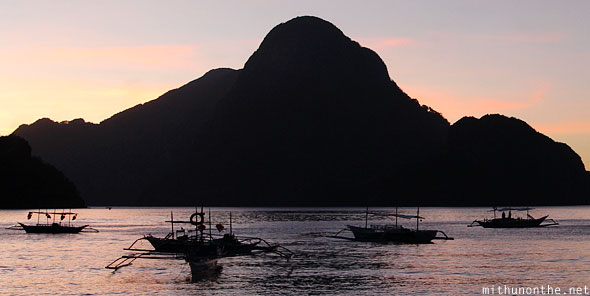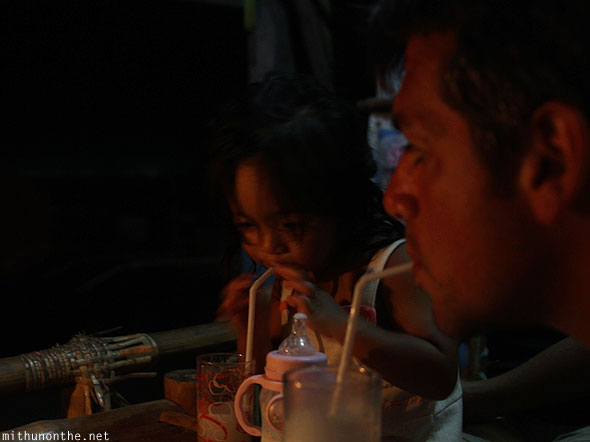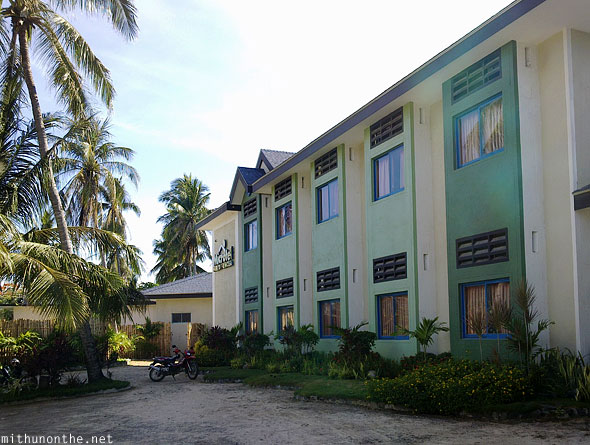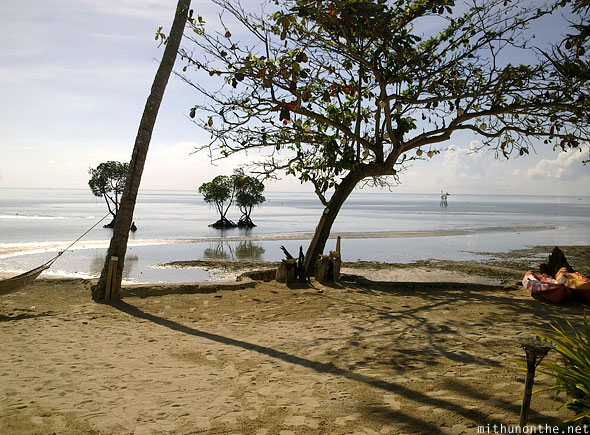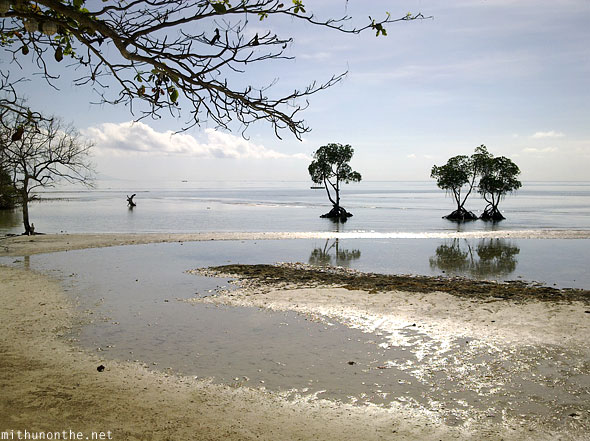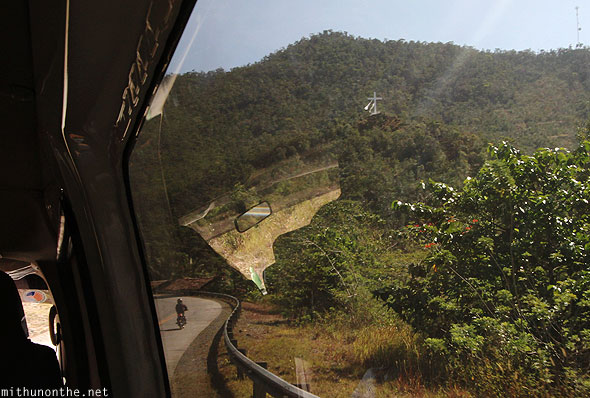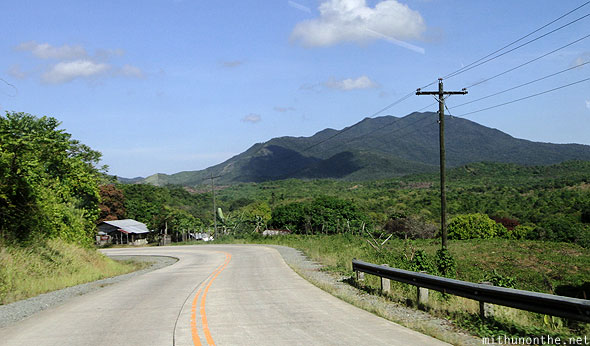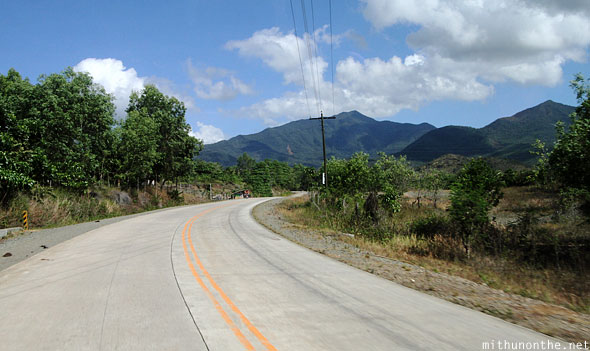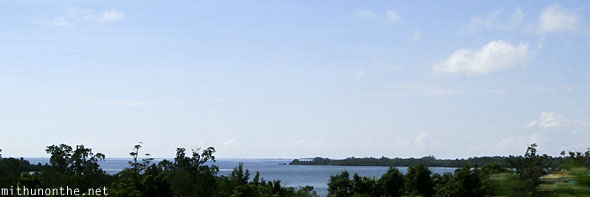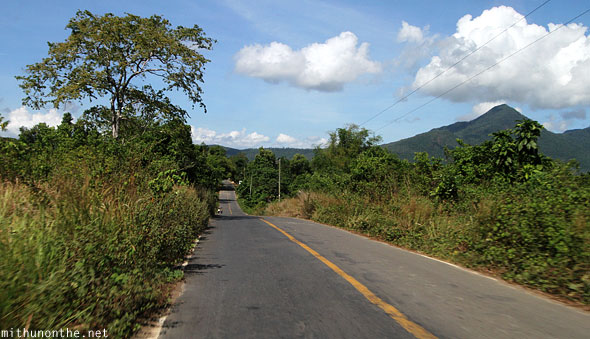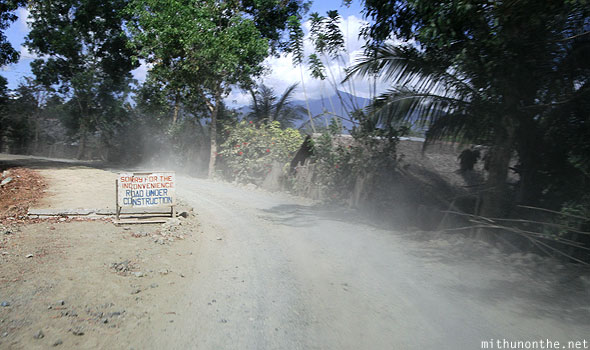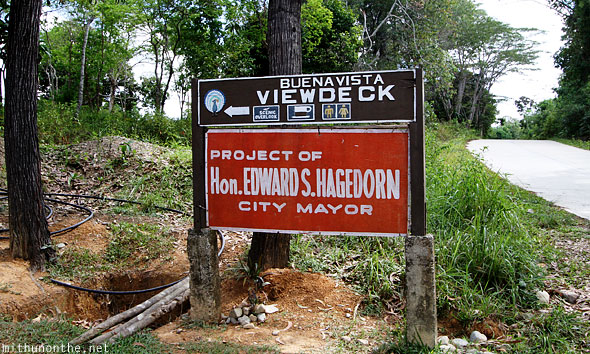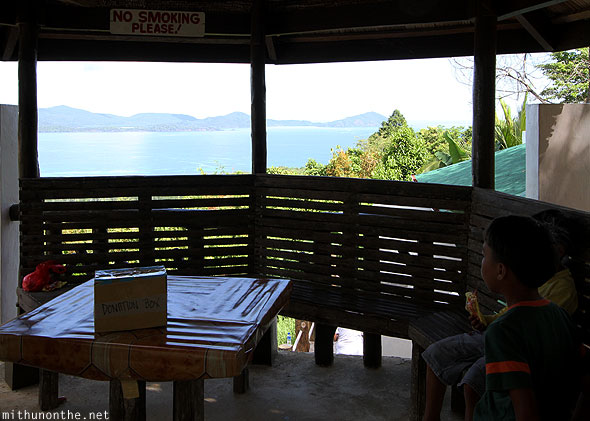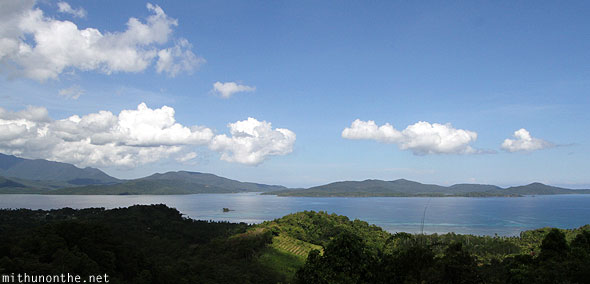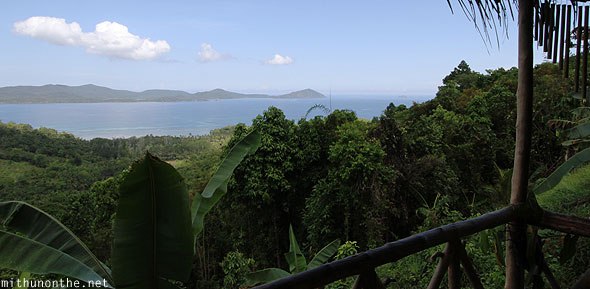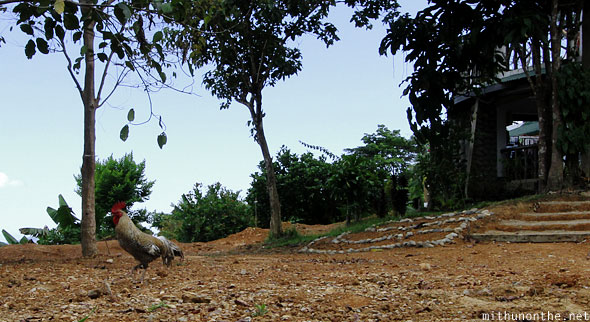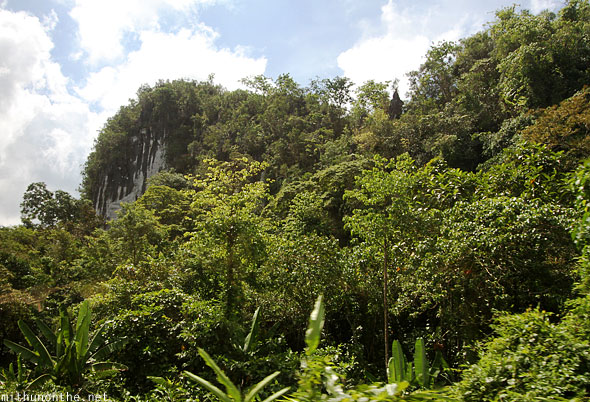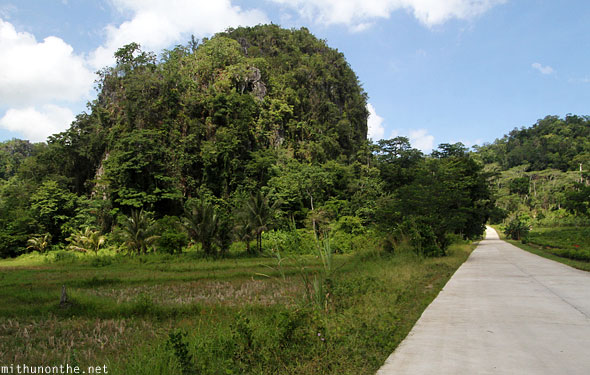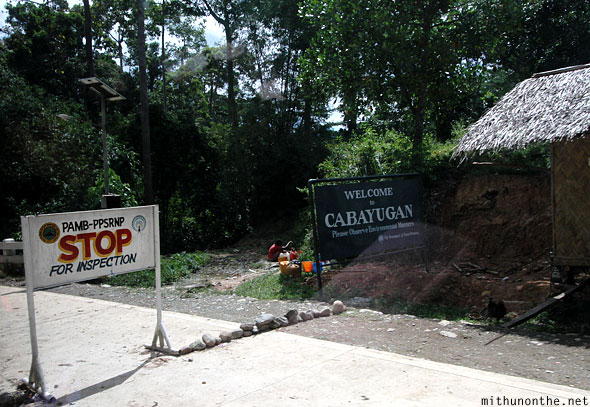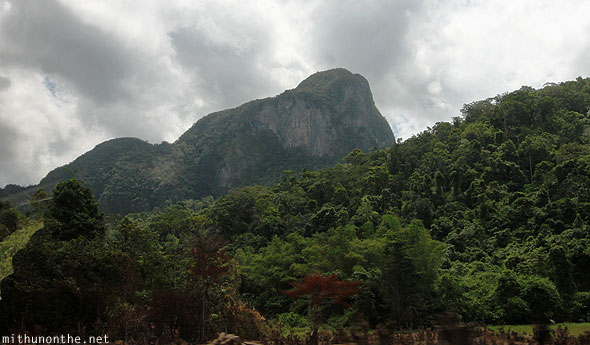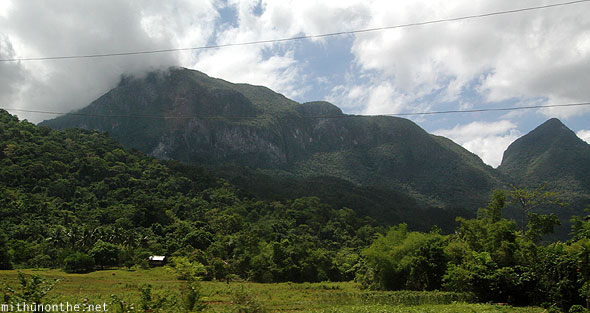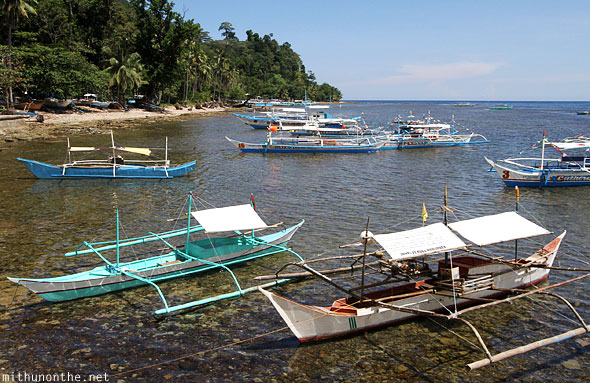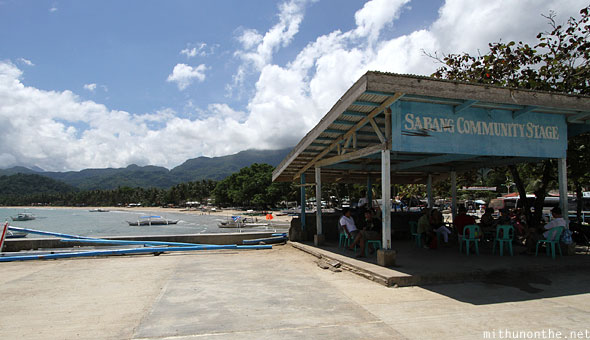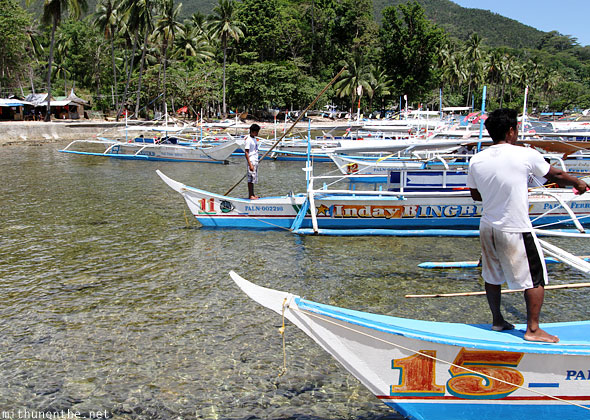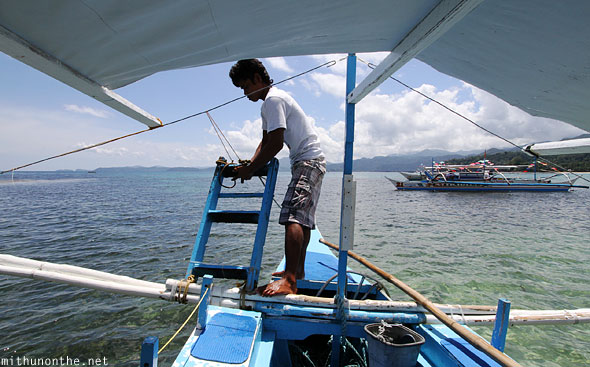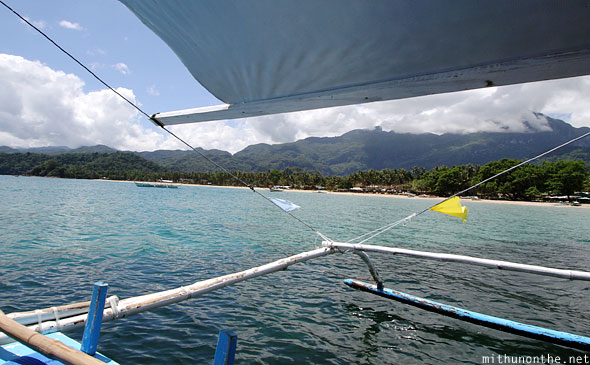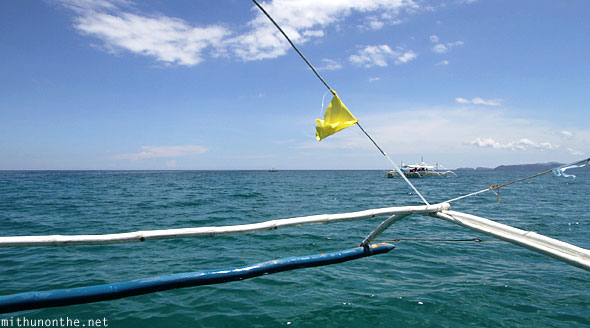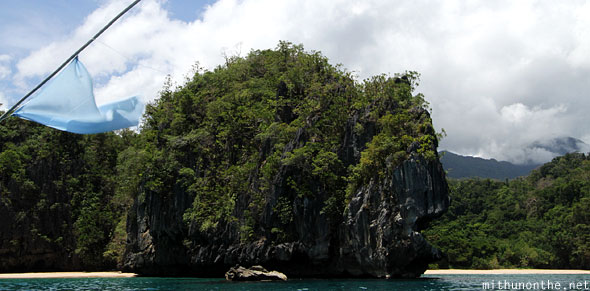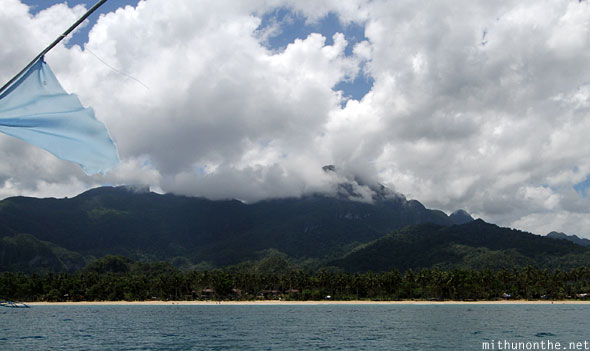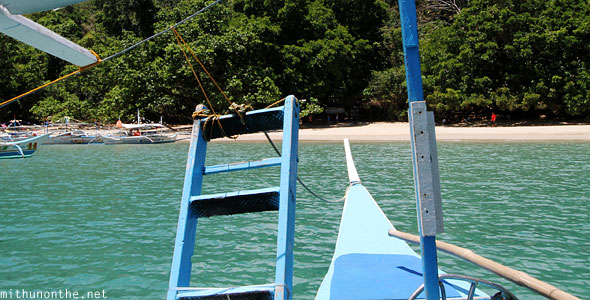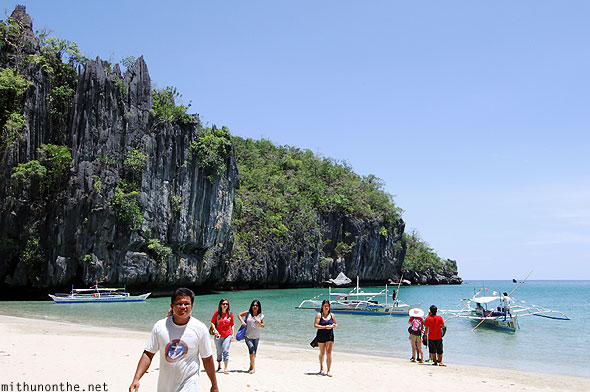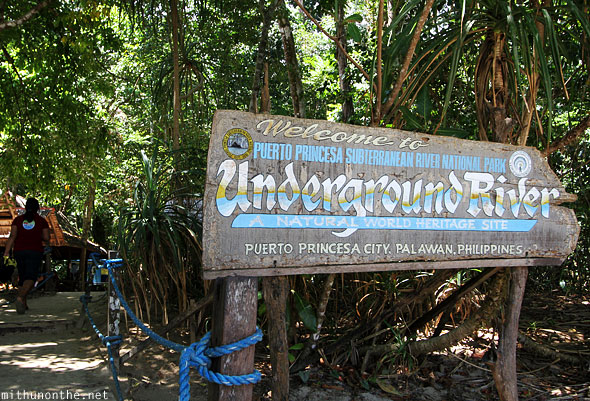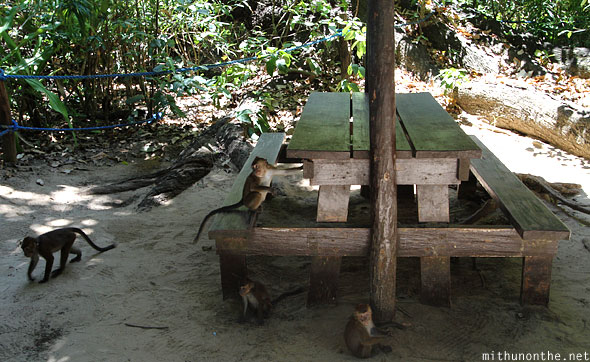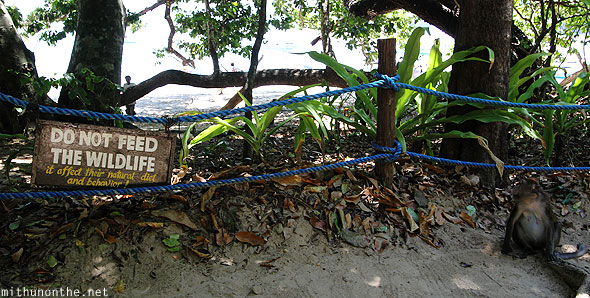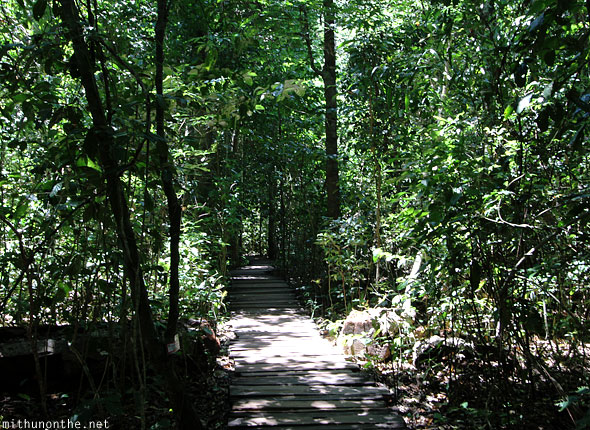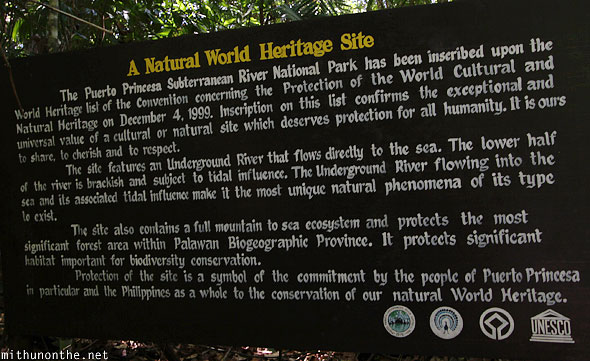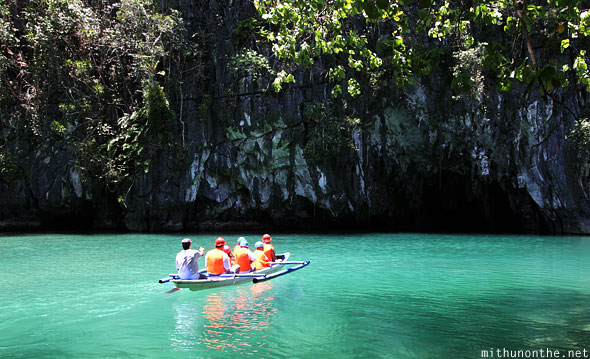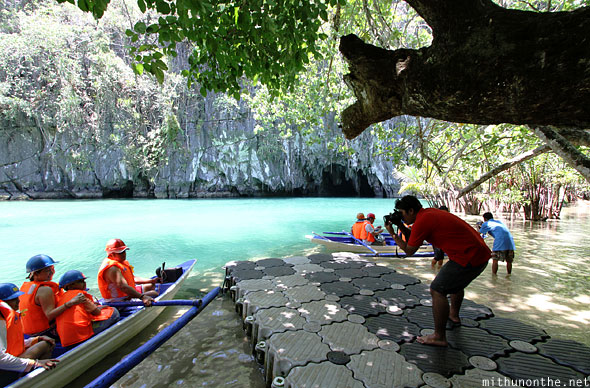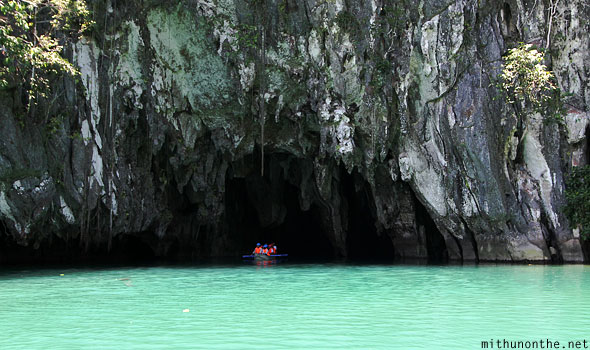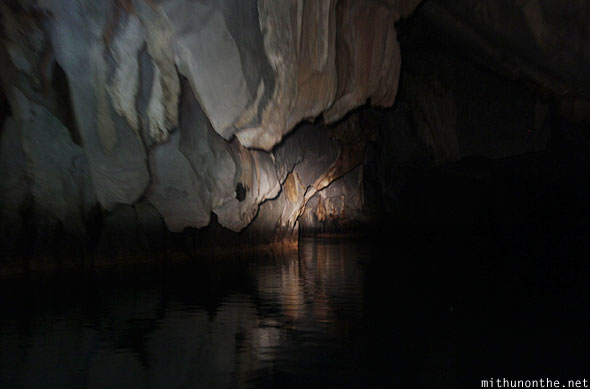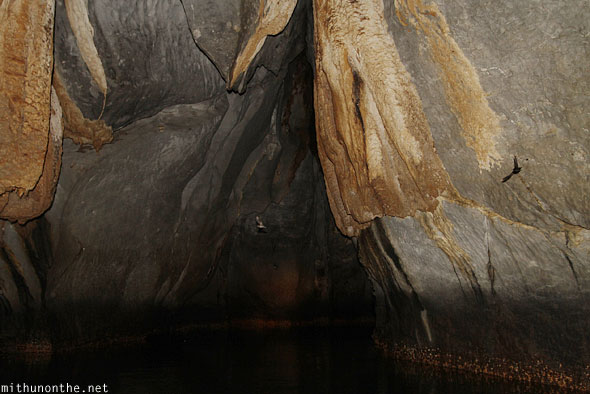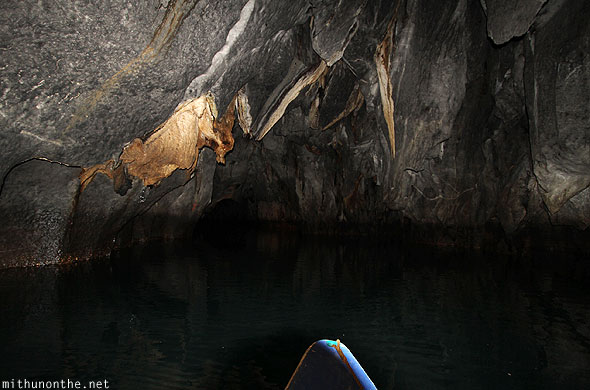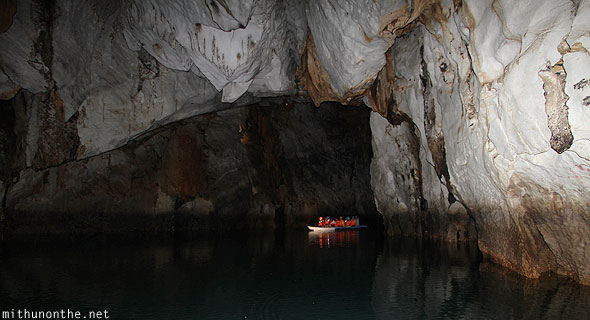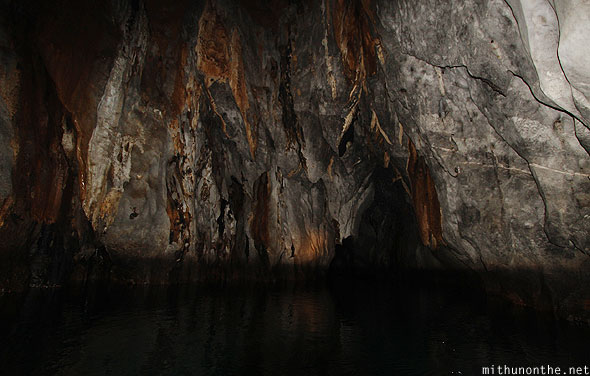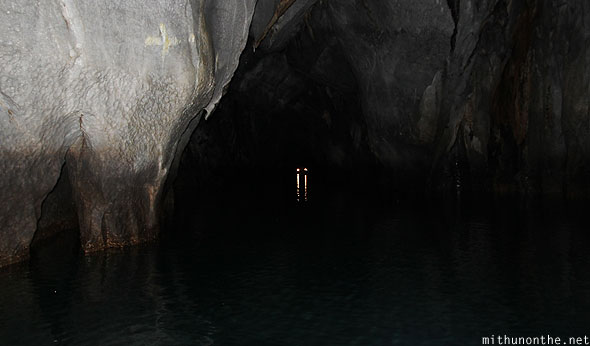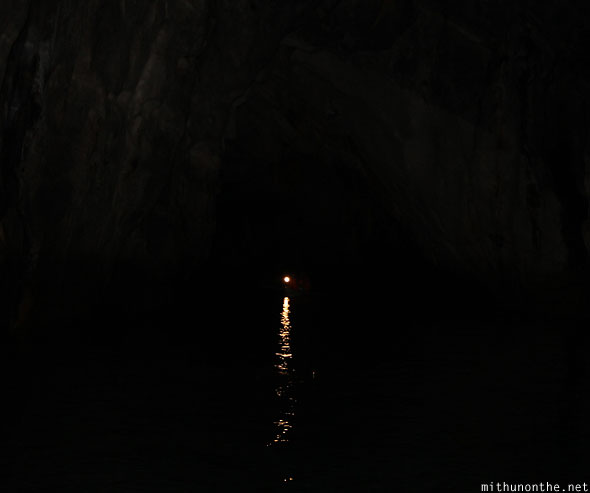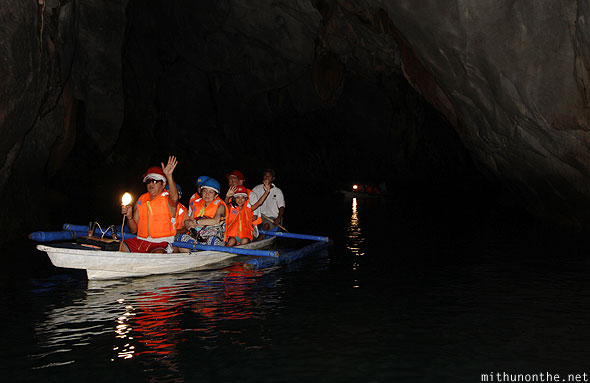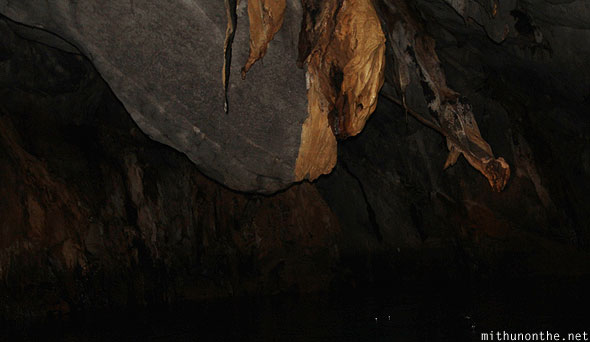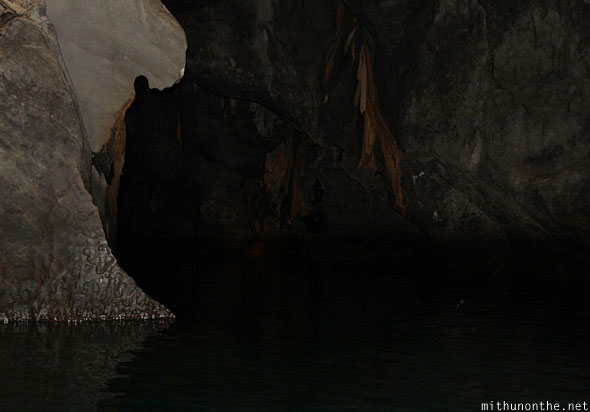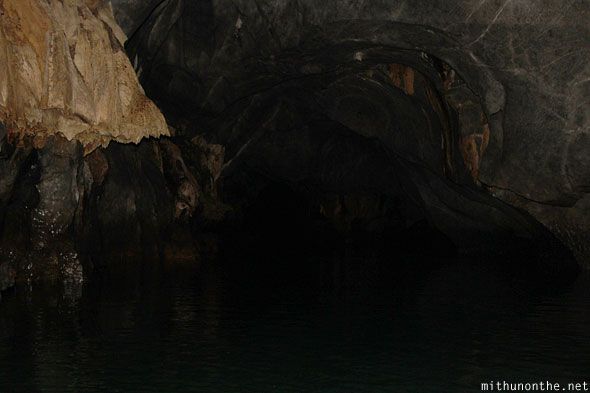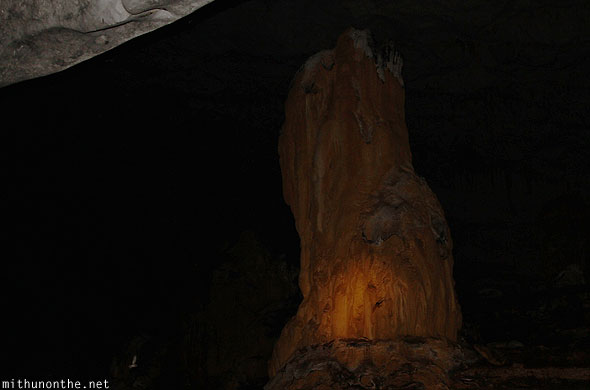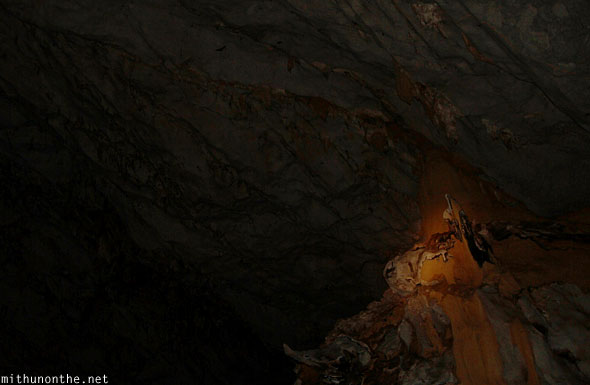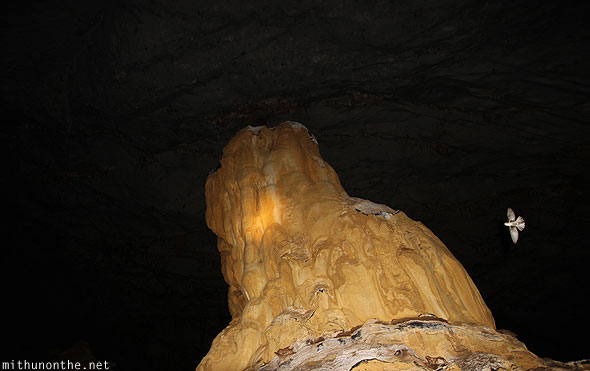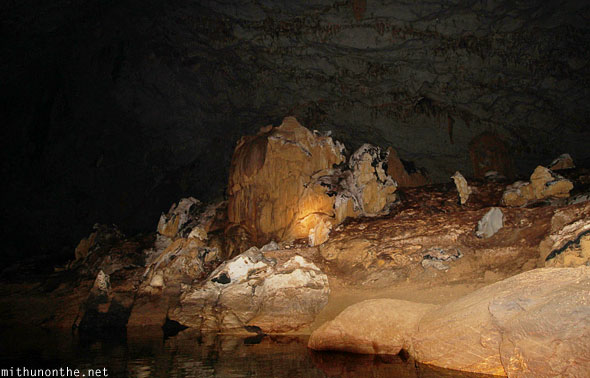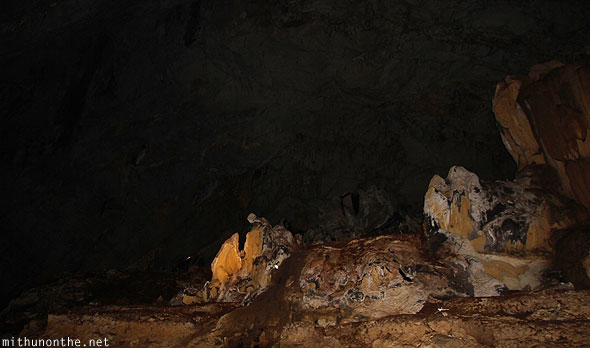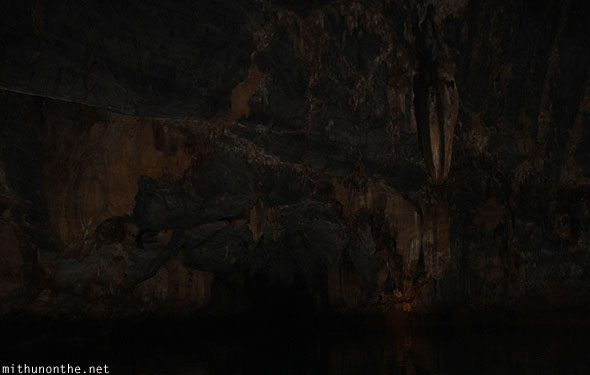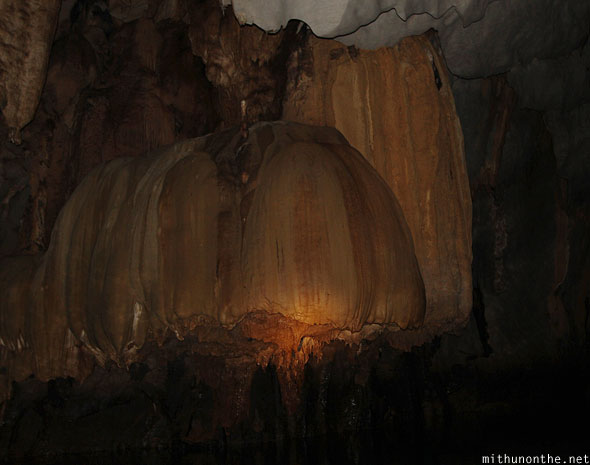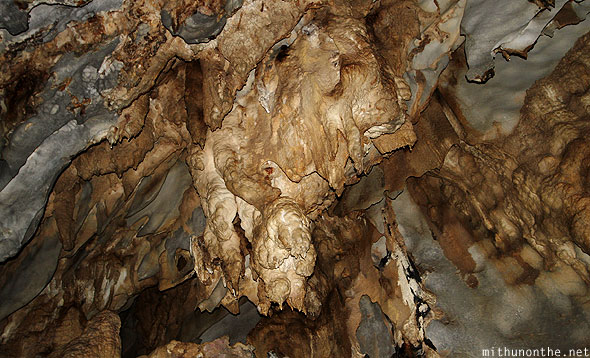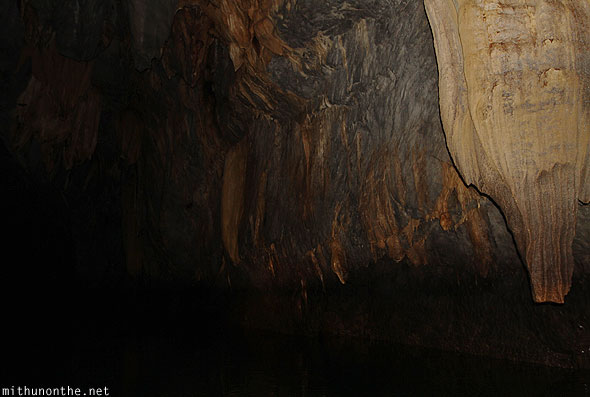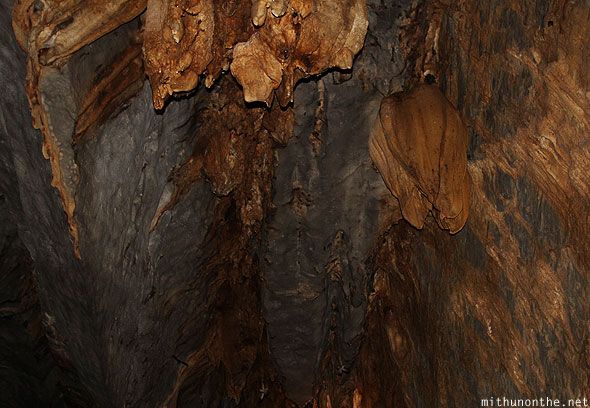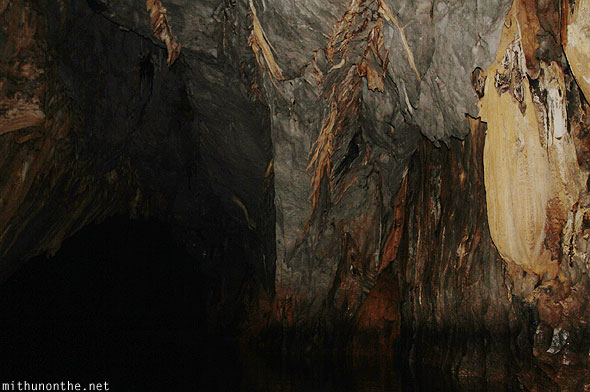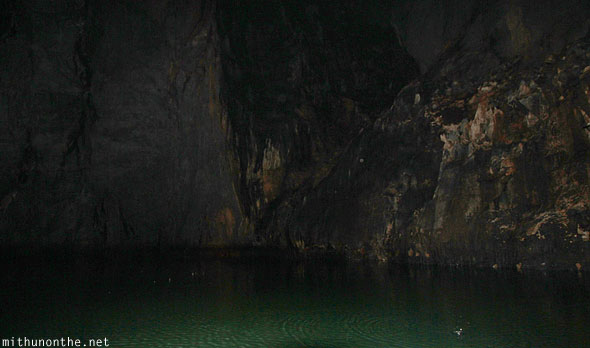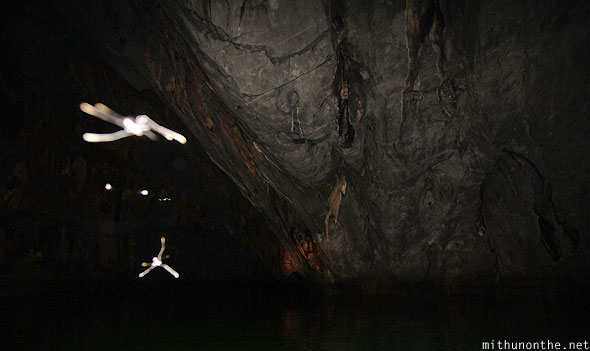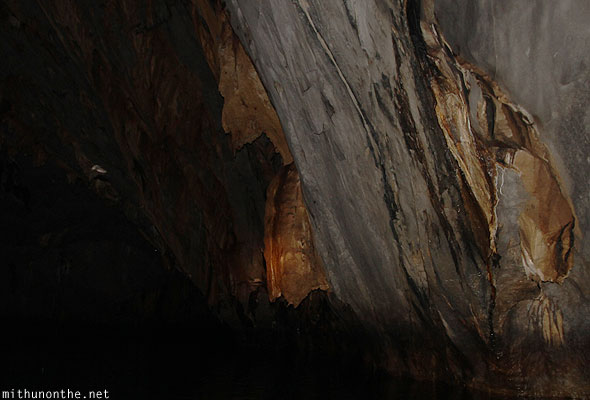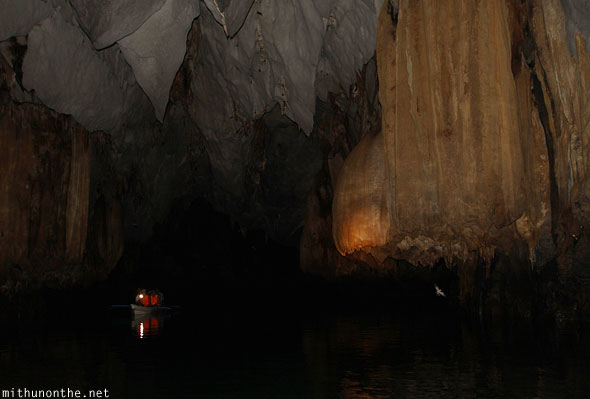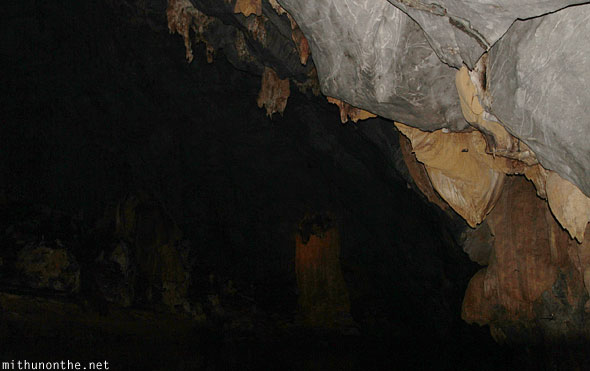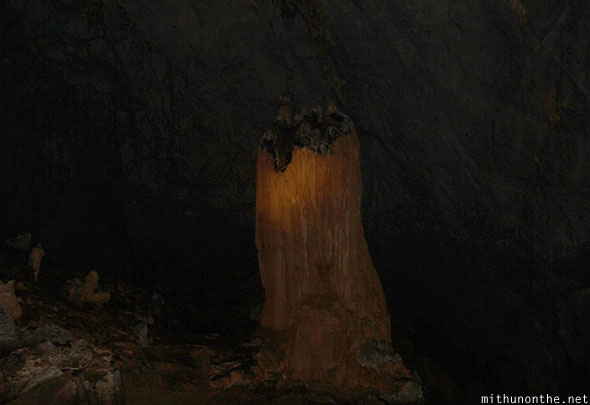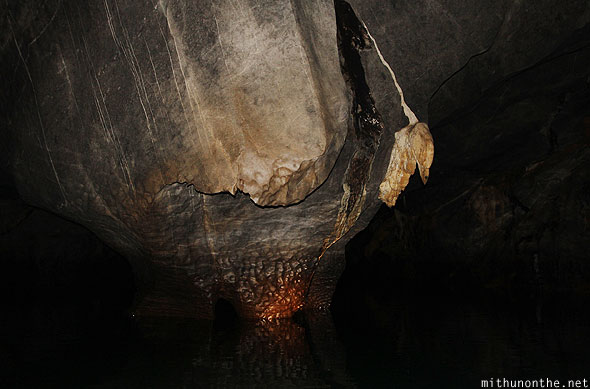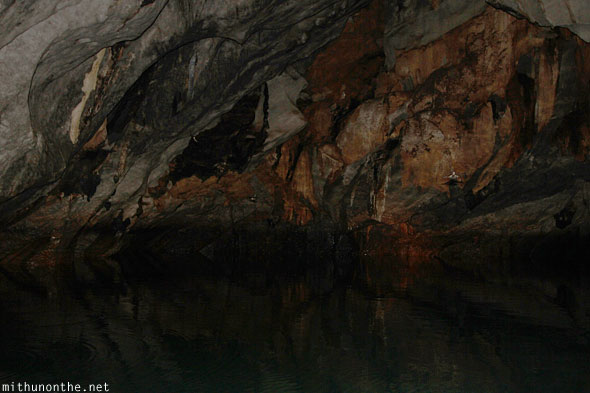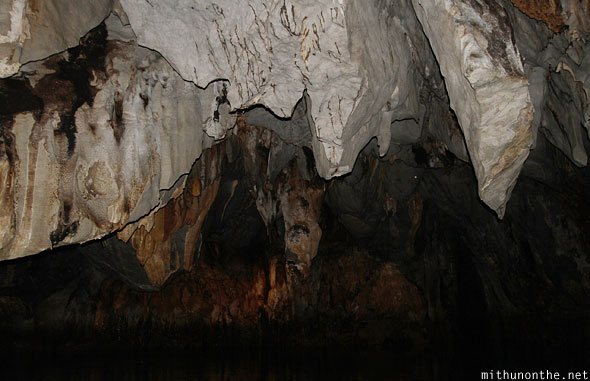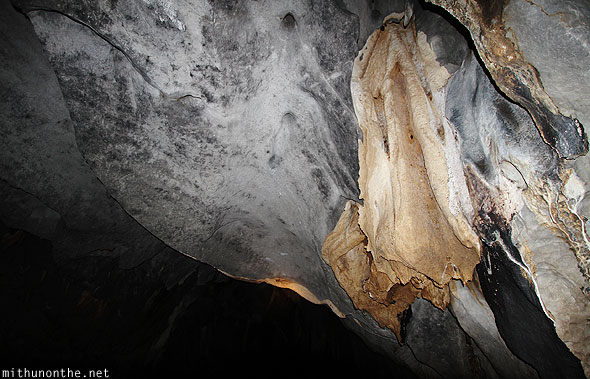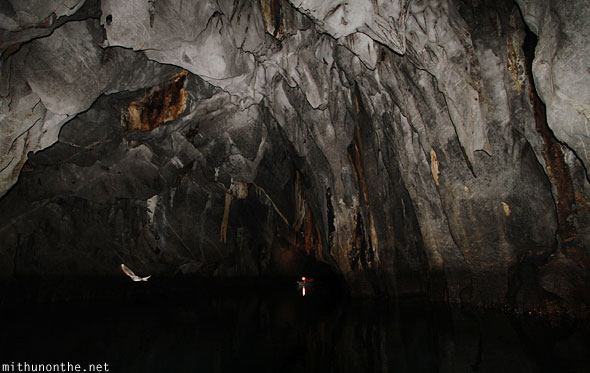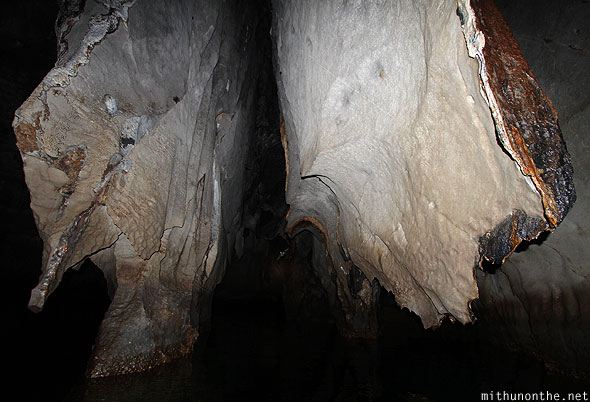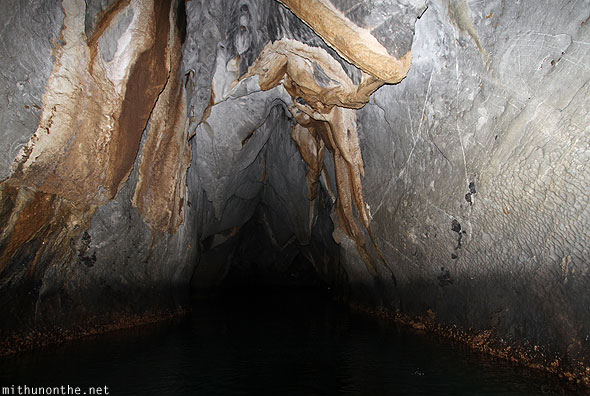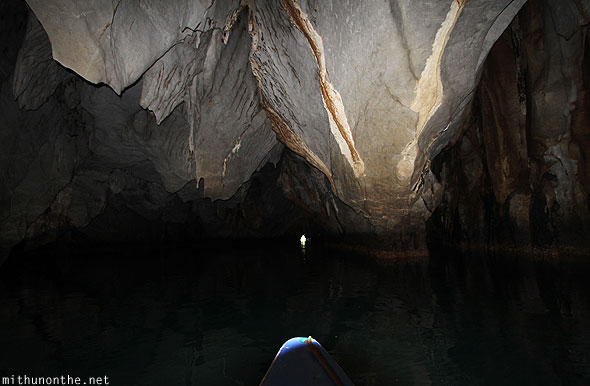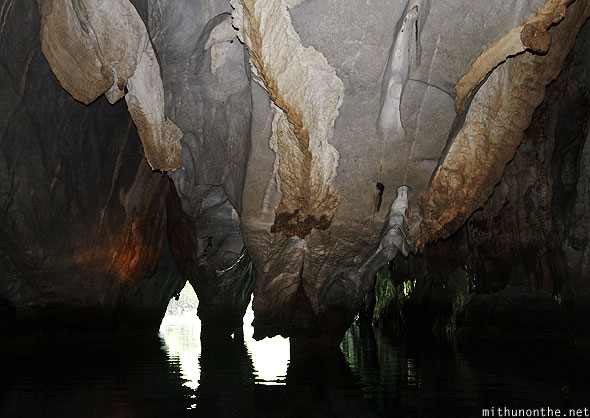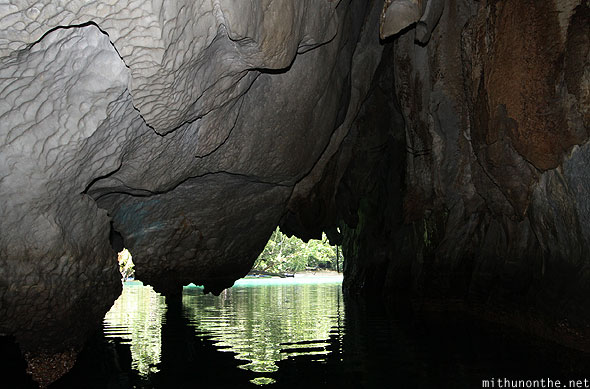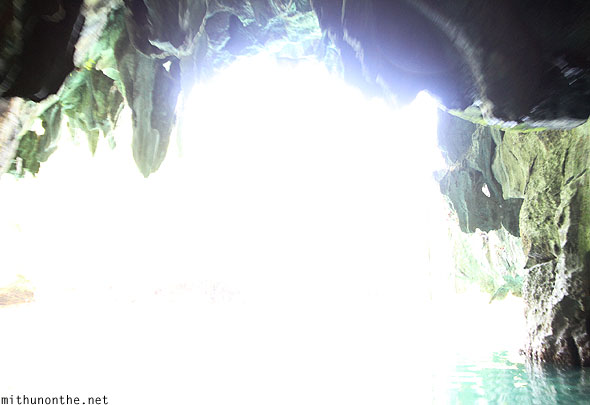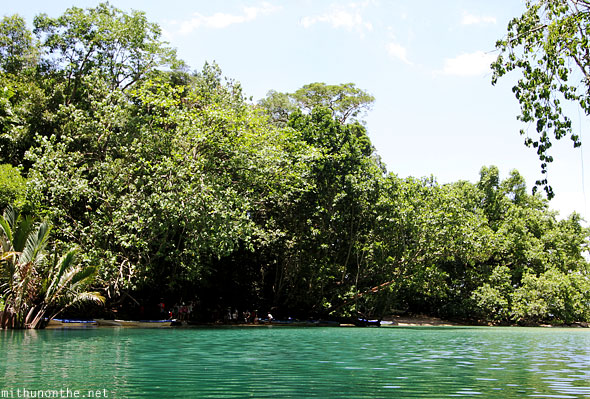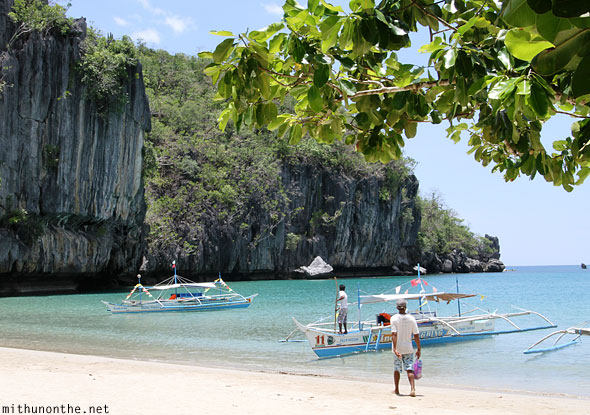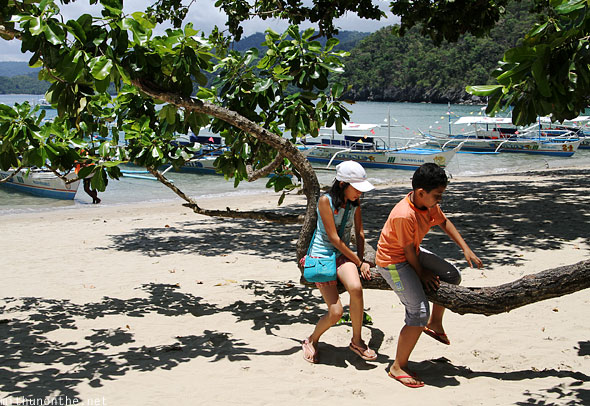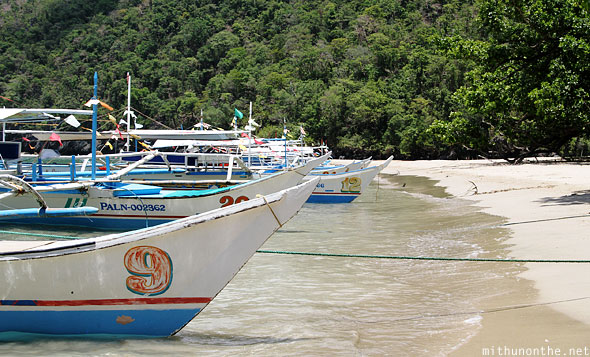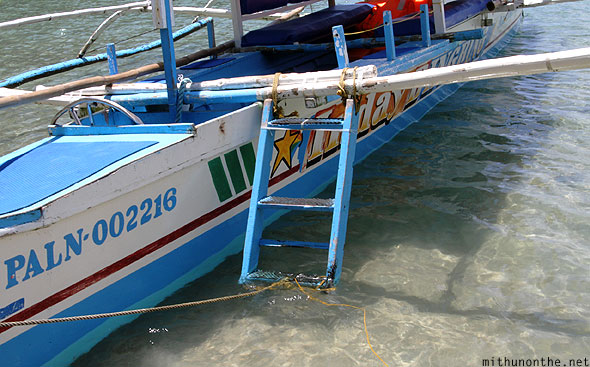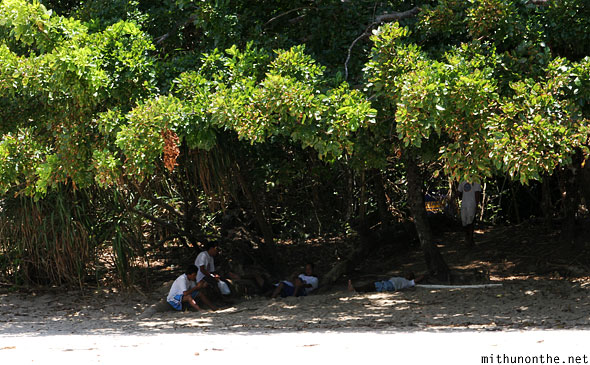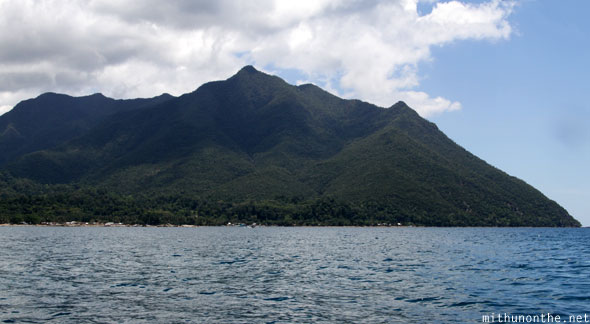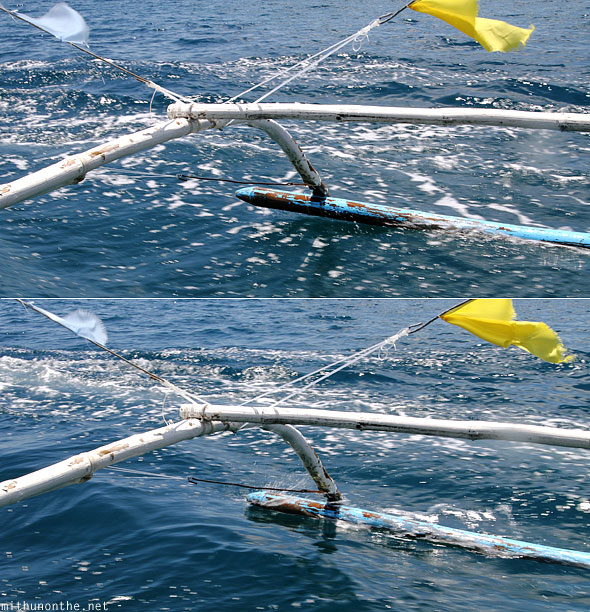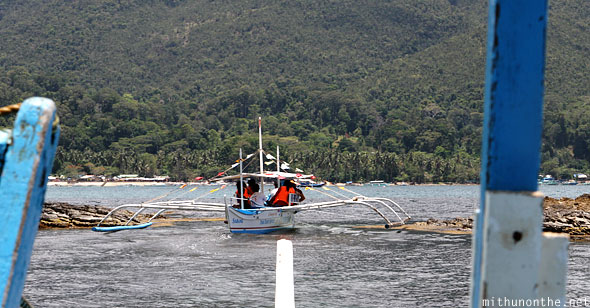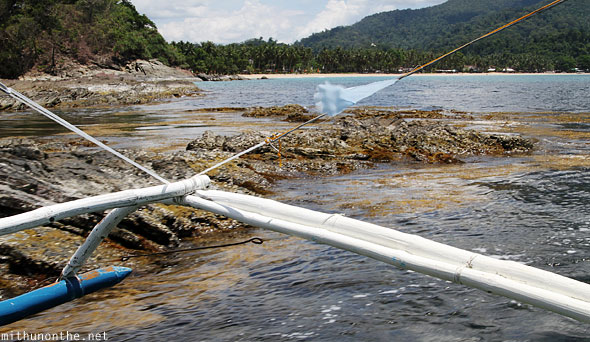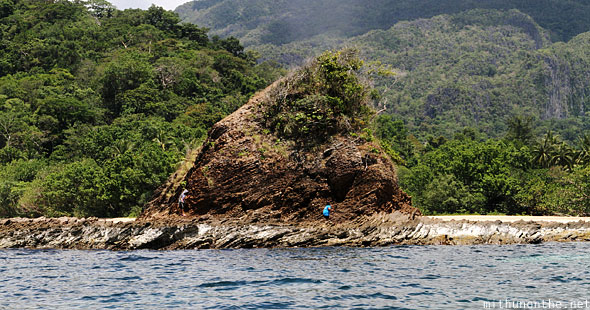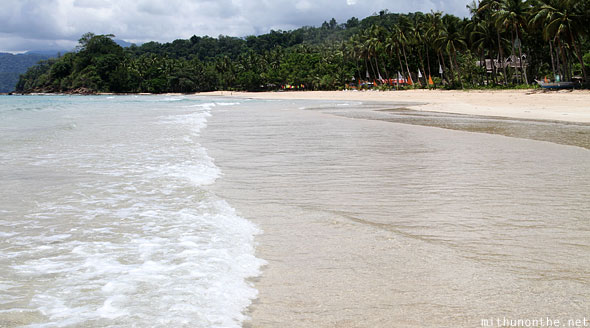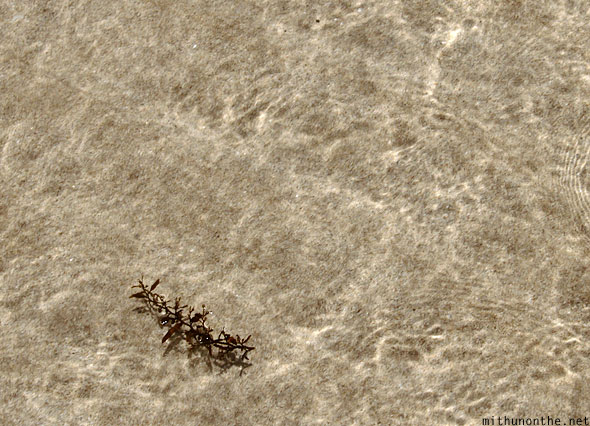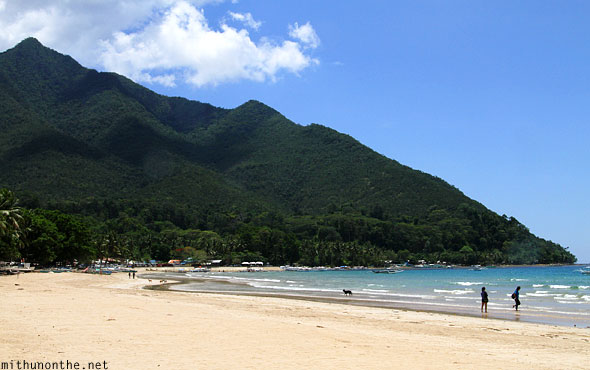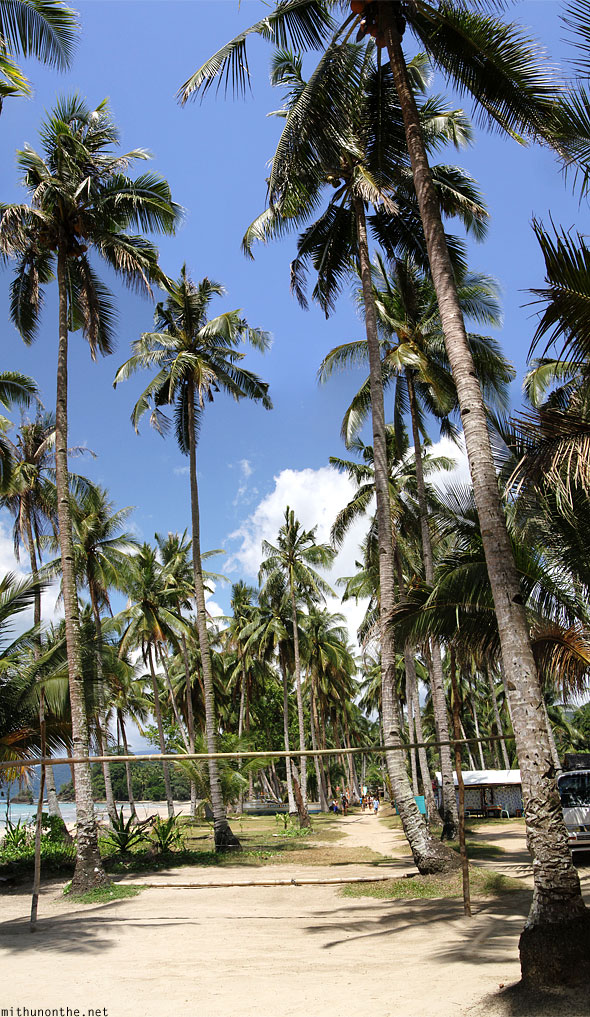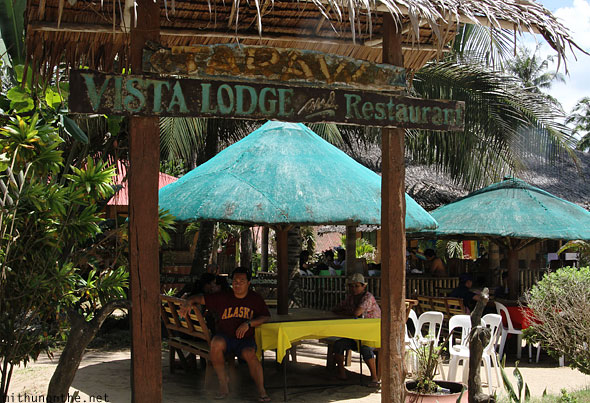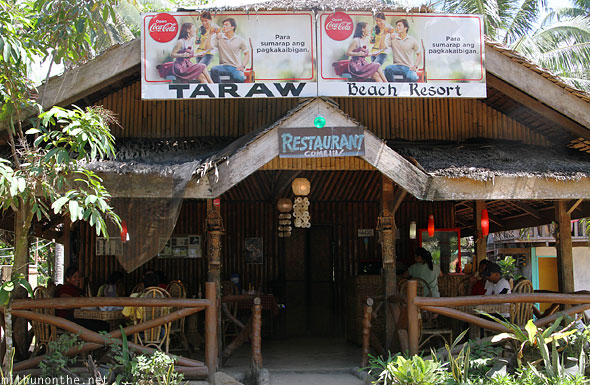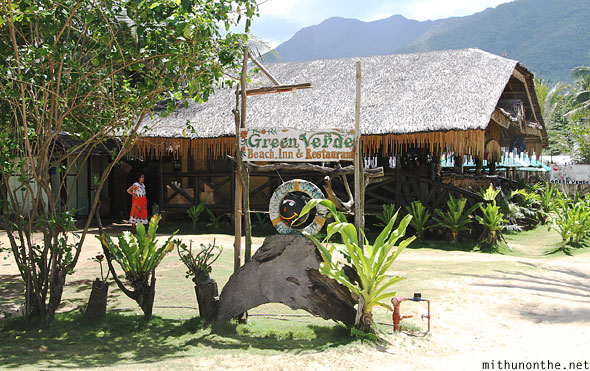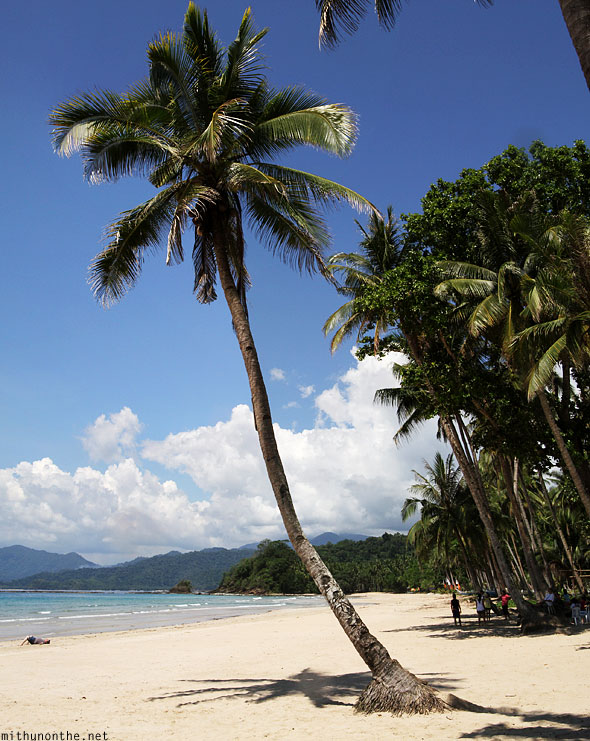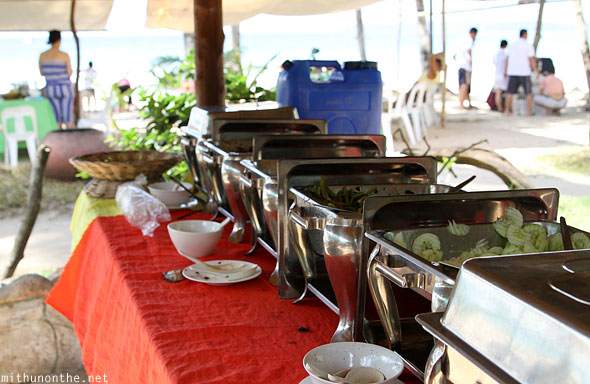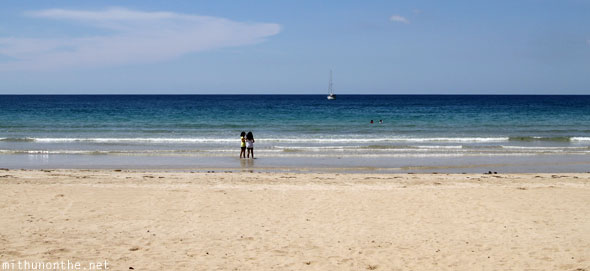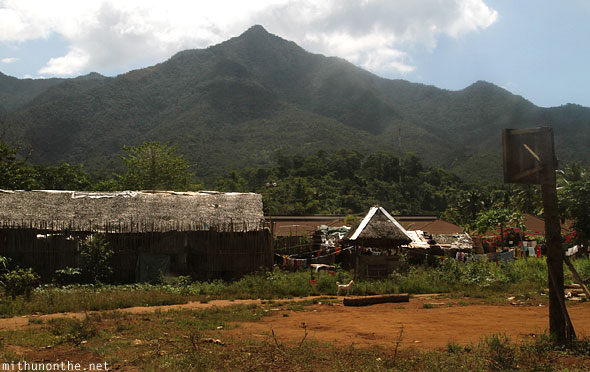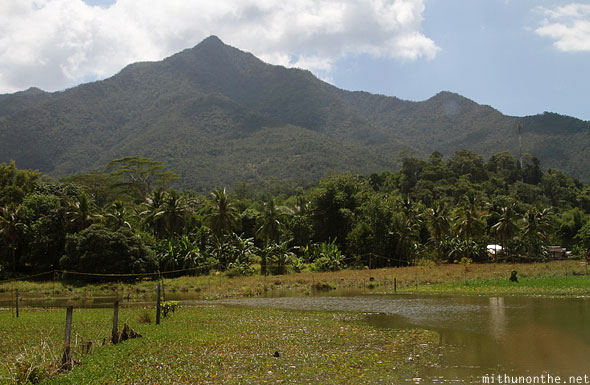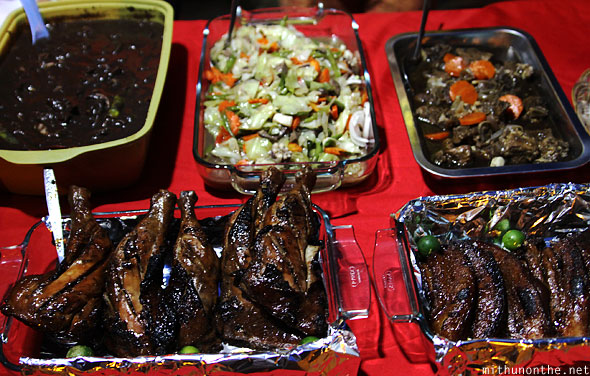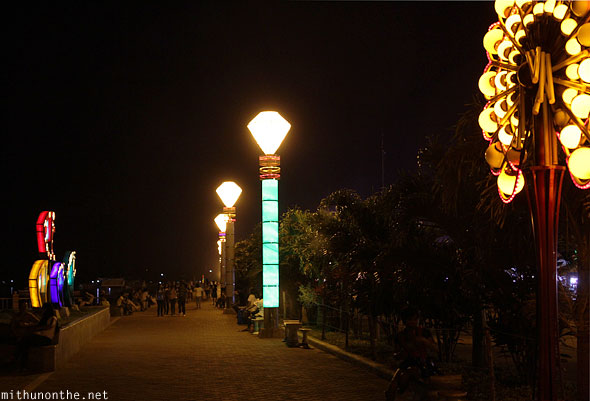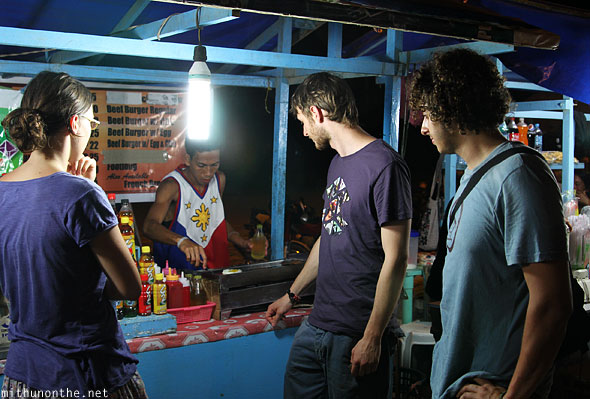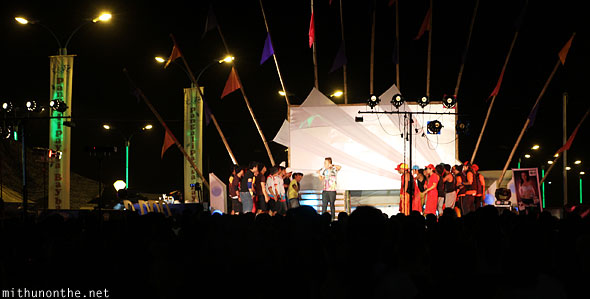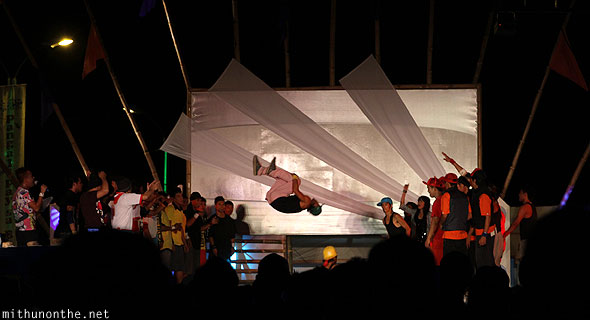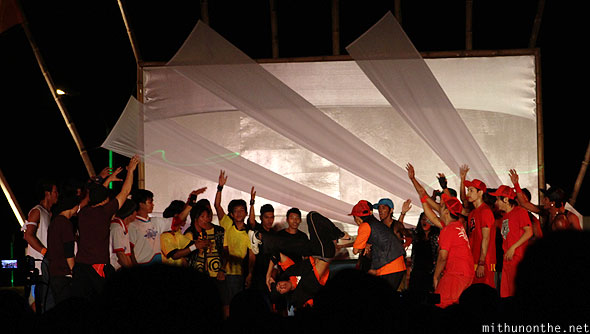Date: May 1st, 2011
Woke up at 6am, for the same reason I woke up yesterday at the same time — no electricity. Anyway, I had to get ready and reach the transport station in a few minutes.


I boarded the van and was joined by the two Italian girls who were part of my tour group yesterday. The van left El Nido at 7am and the journey to Puerto Princesa would take around 5 hours (cost ₱500/$11/€8). I chose to take a van taxi instead of the bus because I didn’t want to risk missing my 5:25pm flight back to Manila.
I didn’t bother taking any photos throughout the journey because I was behind tinted glass and also, I just didn’t feel like holding my camera. I have taken enough photos the past two weeks! 
The van reached Puerto Princesa just before noon and dropped passengers off at different spots. Myself and the two Italian girls got down at the van company’s office, which was the last stop. Our flights were both around the same time, so we placed our bags at the van company’s office and decided to have lunch together.
We sat at a nice looking restaurant located along the road leading to the airport.
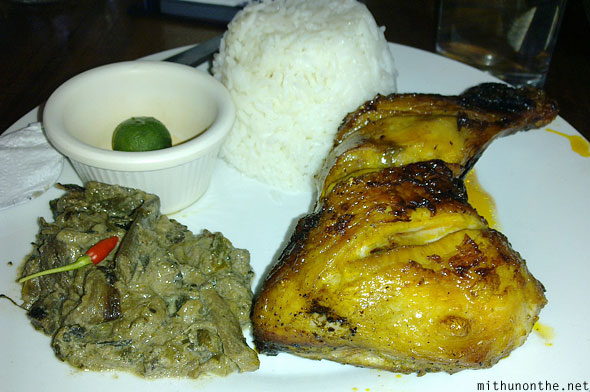
Post-lunch, the three of us collected our bags and took a tricycle taxi to the airport. But because we were rather early for our evening flights, the airport security said they would only allow passengers in at 3pm.

Good thing I had the company of the two Italian girls (well, one of them anyway… the other girl dozed off). We chatted away until it was time for us to go in. Once inside, I checked in and got my window seat. The Italians were on a Cebu Pacific flight, which was delayed by a little, but my Zest Airways flight was on time, so I boarded first.
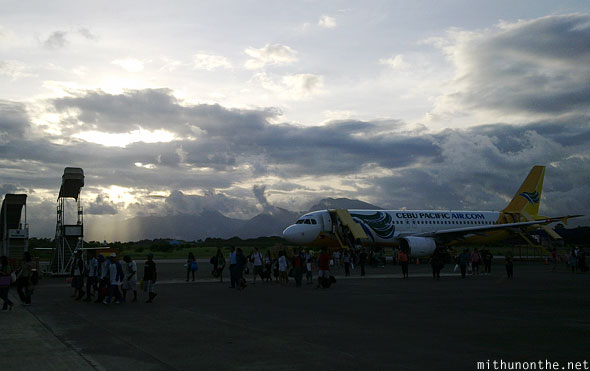
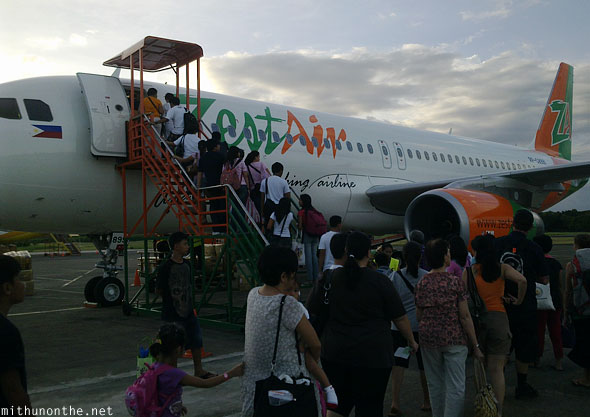
The following was why I insisted on getting a window seat:
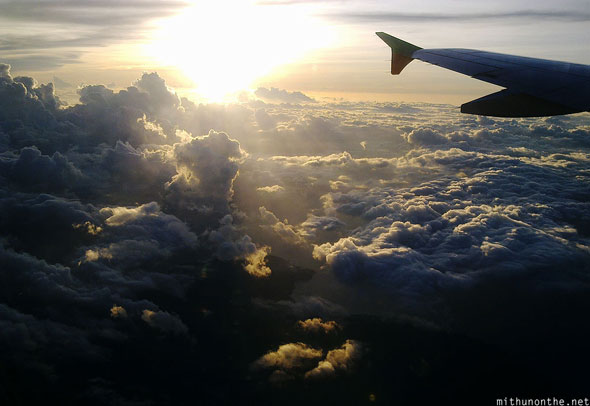
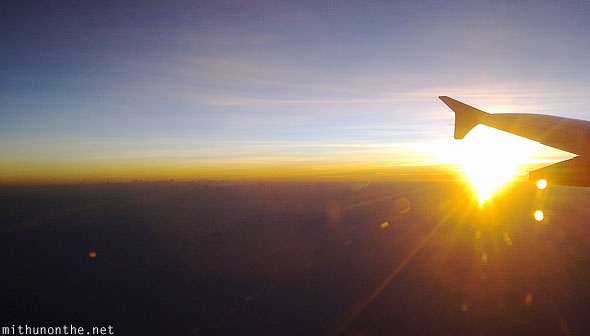
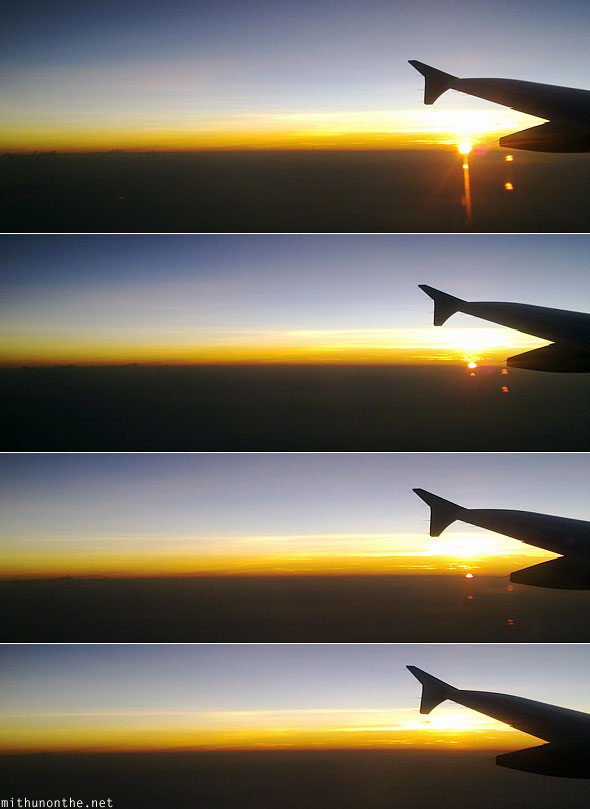 As I sat looking out the window, in some ways I felt a sense of relief heading back to Manila. No more waking up early! I had nothing really planned for my last few days in Manila besides shopping and meeting my friend Aimee.
As I sat looking out the window, in some ways I felt a sense of relief heading back to Manila. No more waking up early! I had nothing really planned for my last few days in Manila besides shopping and meeting my friend Aimee.
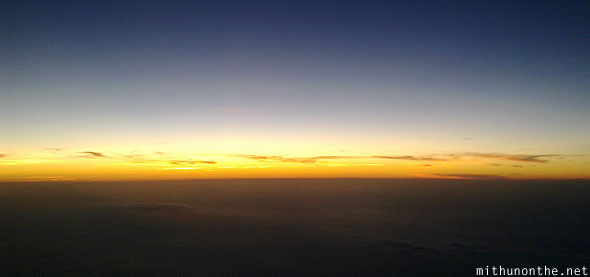
I landed in Manila as it got dark, just past 7pm. Collected my bags and exited the airport. I approached a taxi, but the driver quoted a rate which was too high and he wouldn’t turn on the meter. I had to walk outside of the airport and hail a passing taxi from the main road.
The last two times I landed in Manila, I chose to stay at the Kabayan in Pasay, but this time I chose to be in a more touristy area. I had asked Aimee to book me a place in Malate, near Robinsons Place and out of the two shortlisted backpacker hostels – Malate Pensionne Inn and Friendly’s Guesthouse – she ended up reserving a bed for me at Friendly’s.
Once I got to Malate (the taxi fare came to ₱110), the roads were busy as this area has a lot of clubs and restaurants. And when I mean clubs, I mean mostly KTV lounges catering to the Japanese and Koreans. Friendly’s Guesthouse and Malate Pensionne Inn are both located on Adriatico Street, and both are close to each other. It wasn’t easy to spot Friendly’s Guesthouse because they didn’t have a glowing sign outside, but after I did find the building, I got into the elevator and got off on the fourth floor.
The guy and girl manning the reception weren’t great, to be honest. But when they showed me to my dorm room, I would say I was a bit disappointed. There were a group of young Americans who were already talking loudly, high on booze, making plans to go out for some more drinking (they were English teachers in S. Korea apparently). The room was a bit messy too. The staff then pointed to my upper bed. Now, this peeved me off a bit, because I had specifically asked for a lower bed at the time of confirming my reservation via e-mail. I told the staff about it, but they said they couldn’t give me a lower bed because they were full.
Frustrated, I decided to just shower and then go out in search of another room. The bathroom wasn’t very clean either, but I was literally itching to take a proper shower. The luxury of a good hot shower eluded me while in El Nido and I needed to get all that coastal sweat off me. A lot of soap, shampoo and a clean shave later, I felt so much fresher.
I stepped out and went straight to Malate Pensionne Inn, but their dorms were full too. So I walked around and decided to check the other hotels in the area. A tout on the street then approached me, asking me if I wanted a girl. I said “no”. Then he asked me “guy?”. Definitely “no”. Then he asked me if I needed Viagra, Cialis or other drugs. I told him at my age, “no”. “Cigarettes?”. “No”. He finally gave up and asked me what I was looking for and when I told him I was in search of another room, he then went “Ah!” and told me he would show me around.
After visiting a few small hotels, nothing was as cheap as Malate Pensionne or Friendly’s. Just about every other ‘pension inn’ cost nearly a ₱1000 and above, while the rest were all star hotels in the area. Eventually, I slowed my pace of walking and decided to just manage a night in Friendly’s and try again tomorrow. Now I know why these two hostels were very popular among backpackers — there is no other choice!
All this while the tout was still beside me. I used the opportunity to ask him about the clientele at most of the KTVs in this area. He told me it wasn’t uncommon for Japanese men to spend $300-$400 on average a night(!), and that’s just to sing karaoke and enjoy the company of the women sitting beside them. If they want to take the girls out, that will cost them extra. $300 was my weekly budget, so no way was I eligible to enter these nightclubs.
The tout eventually gave up and left me alone after realizing I wasn’t going to give him any business for any of his (many) services. The one good thing about being in a touristy and popular area was that there were a few restaurants available that didn’t only serve Japanese and Korean cuisines. I had my dinner at a Persian joint and went back to my room.
I had a lot of sleeping to do!
Date: May 2nd, 2011
Woke up around 9am I believe. Lazily got out of my bed and decided to go upstairs for coffee. Also thought you guys would want to know what Friendly’s Guesthouse looks like.

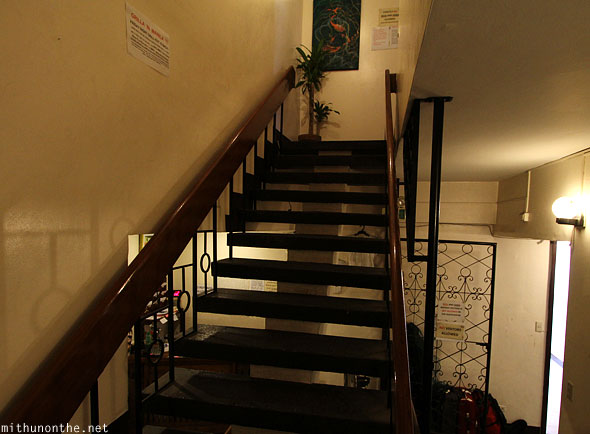
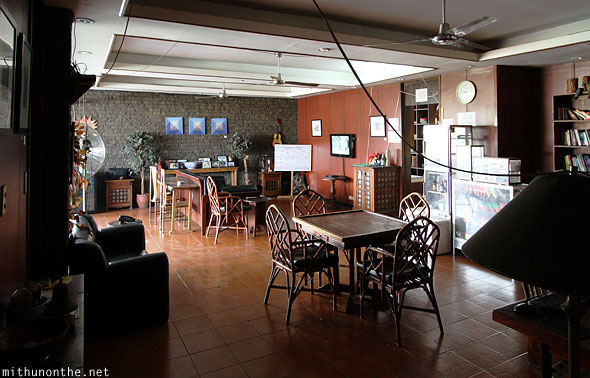
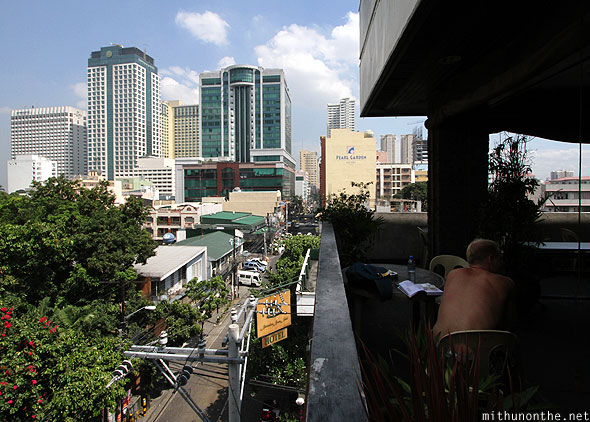
When you consider the facilities, and the location, paying ₱375 ($8/€6) a night for a bed in an air-conditioned dorm room is really good value. I went back to my room, where the staff were cleaning the toilets. I ultimately decided to just manage at Friendly’s for the next two nights.
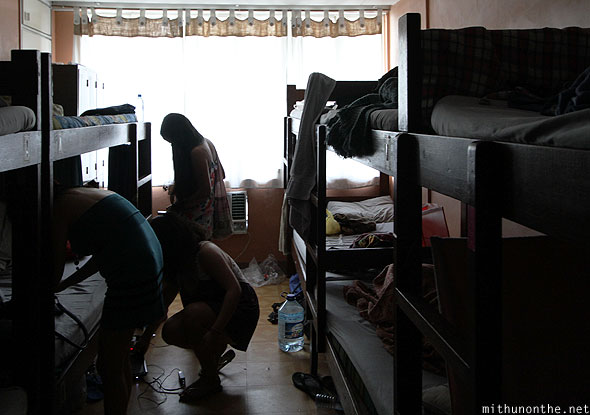
I spent some time online and basically took it easy. Spoke to Aimee before finally deciding to step out. Aimee had some work, so we decided to meet tomorrow. I told her I was going to check out Quezon City, which she told me was the former capital and currently the largest city in Manila province. I looked at my map and only noticed Quezon Memorial Circle as a notable attraction worth visiting. So off I went… without my DSLR. For once, I wanted to walk around without carrying my heavy camera bag. Only phone camera today. It felt so liberating!
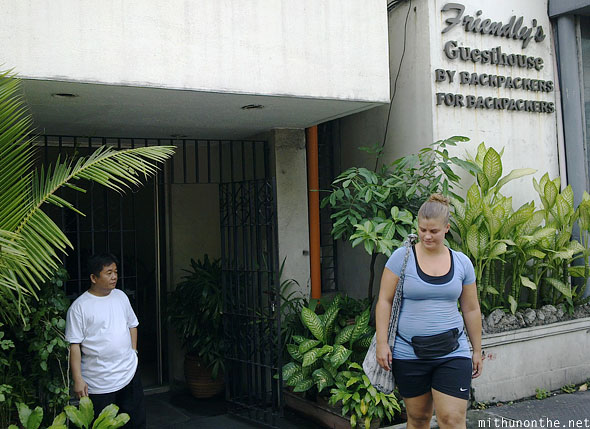
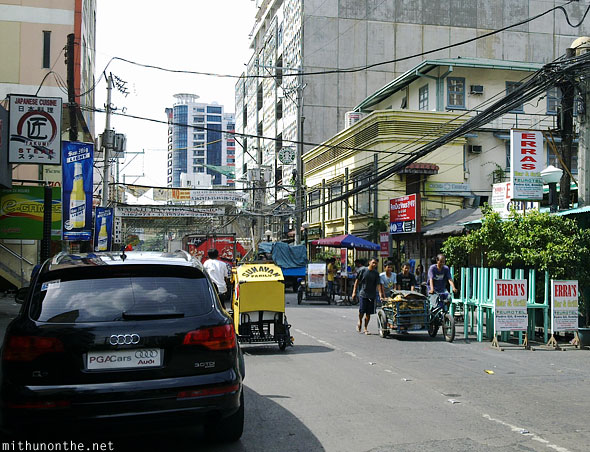
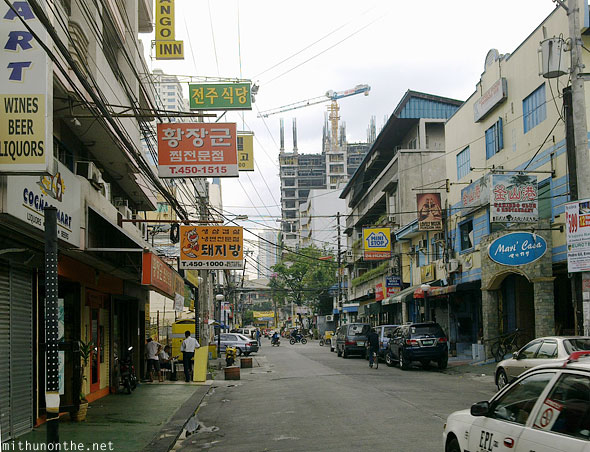
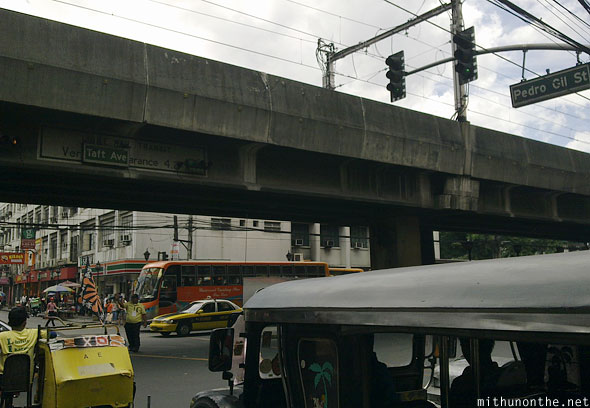
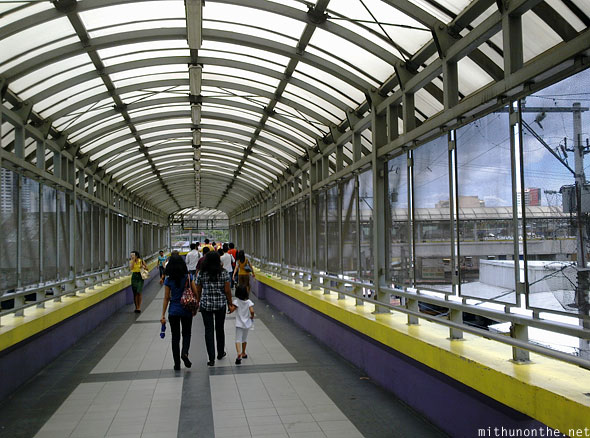
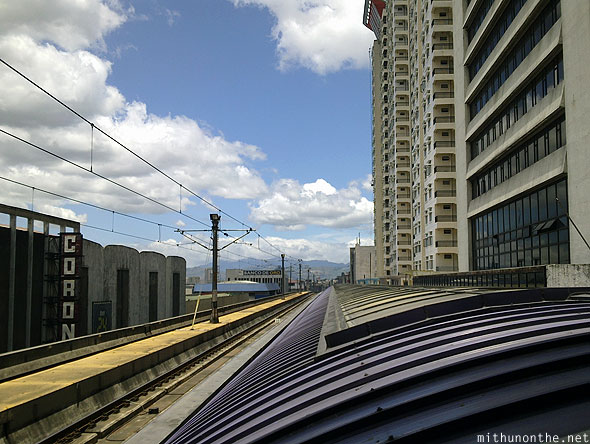
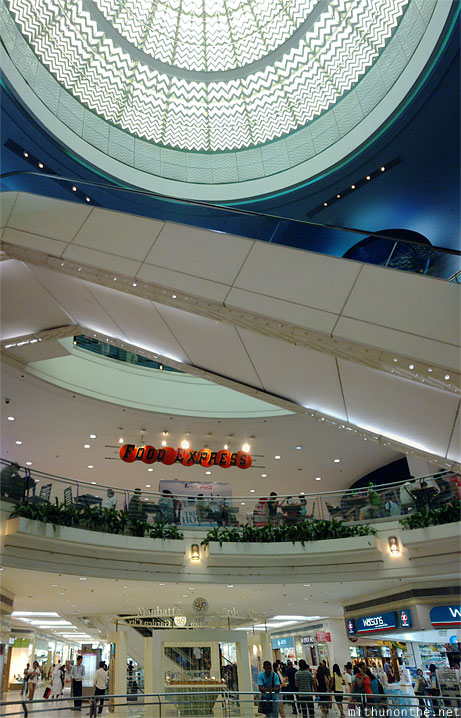
Comics Alley, a chain selling mostly Japanese ‘otaku’ merchandise and anime toys, were having a sale at their branch at this mall and I picked up Domo-kun plush toy for ₱250. I soaked up some more air-conditioning before going up to the food court for lunch.
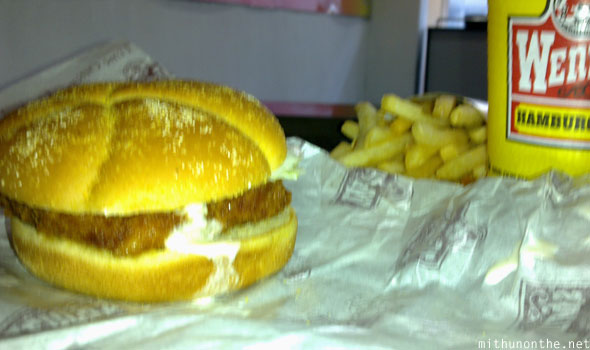
Lazily, I got up and left the mall. I did walk around a bit, then looked at the map and decided I needed to go up Quezon Avenue. I got into a jeepney and got down at the busy Quezon Avenue.
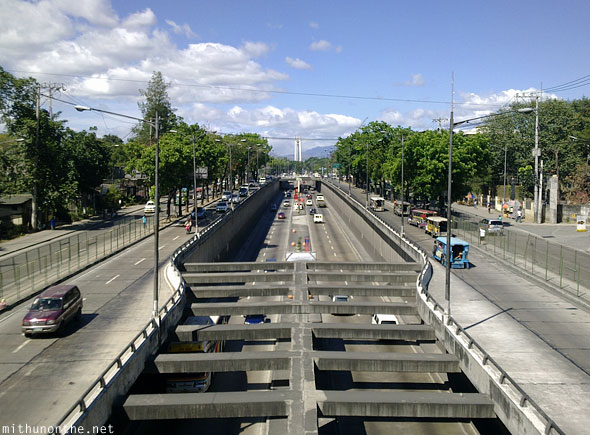
It was really hot today, and even though I had sunglasses on, the heat was getting to me. I stopped to have some ice cream and bought some more water. As I walked up Quezon Avenue, I noticed a man helping people cross the busy Elliptical Road.

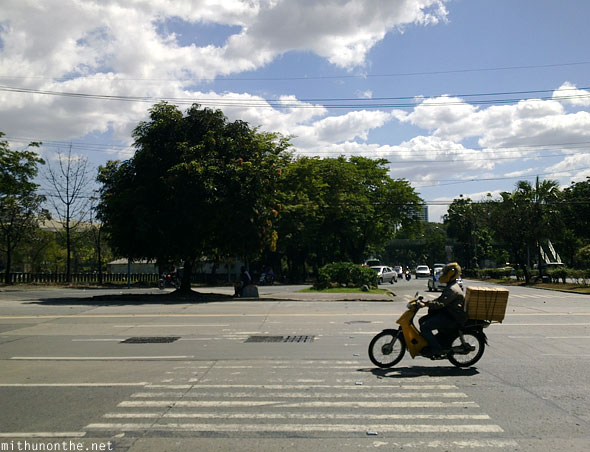
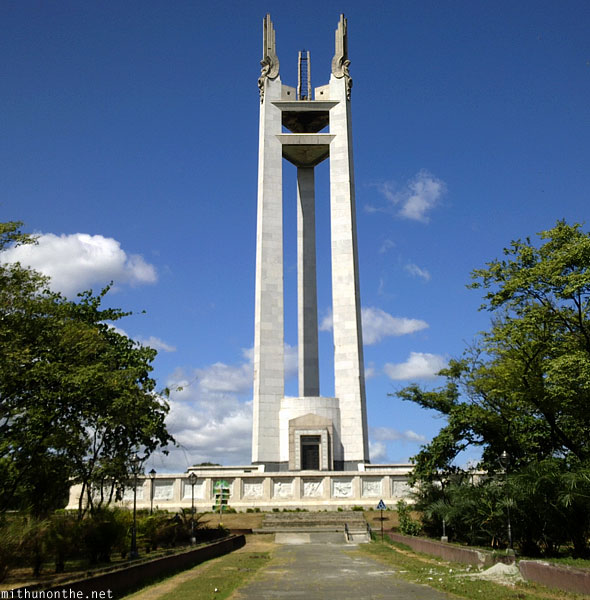
The Quezon Memorial Circle is both a national park and a shrine, which features a mausoleum containing the remains of Manuel L. Quezon, the second President of the Philippines. But I somehow was not in the mood to go any further and check it out… don’t know why. Maybe it was the heat.
I crossed the busy road, which itself was quite a challenge as nobody slowed down even as pedestrians were on the zebra crossing.
Once across, I kept walking further down Quezon Avenue in the hopes of seeing what life is like in this part of Manila.
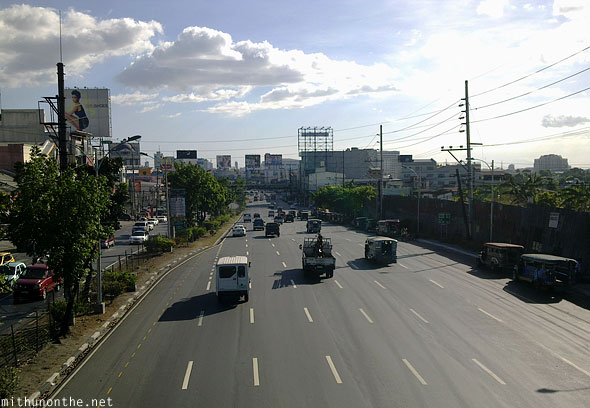
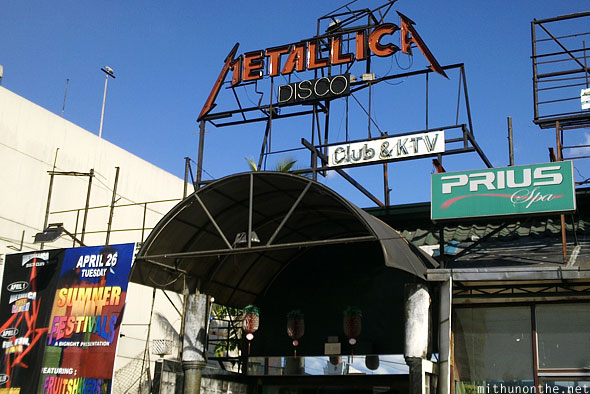
In fact there were many large clubs/KTV lounges all along Quezon Avenue, none of which were open at this time though. The poshest one I saw, judging by all the high end vehicles parked there, was the Pegasus Club, which Aimee later me told is where the rich and famous (men) hang out. Also where a few girls working as ‘guest relation officers’ ended up turning into future actresses and models.
After going down the road a bit, I took a left turn as I wasn’t seeing anything besides gentlemen’s clubs and fast moving vehicles.
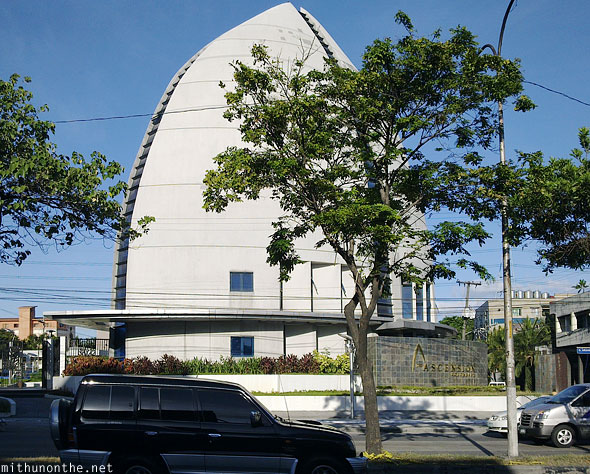
Other than that, all I saw were businesses dealing in automotive parts, a few bakeries and other general stores.
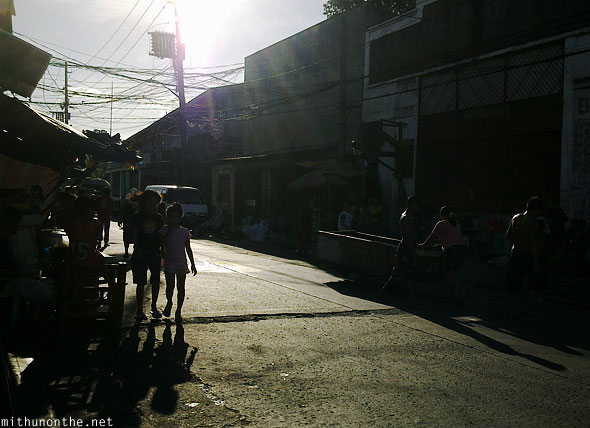
I called Aimee and asked her if I was in the wrong part of town, but she was sleeping, so I didn’t want to disturb her and cut the call short. I kept walking until I reached a metro station.

(Plug: Do check out Journey’s new album ‘Eclipse,’ it’s brilliant!)
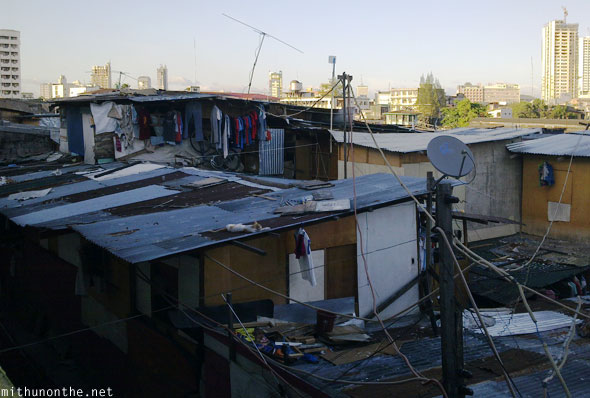
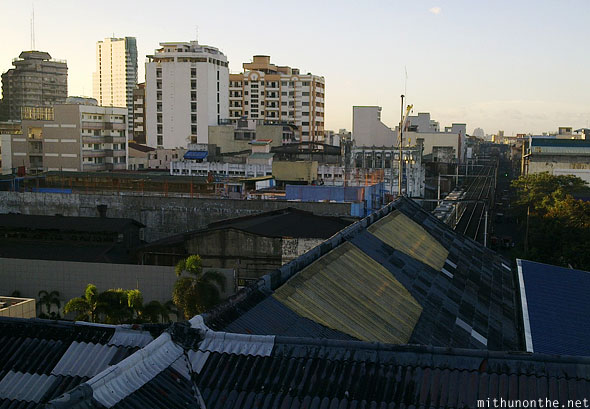
Back at Pedro Gil station, I walked to Robinsons Place mall.
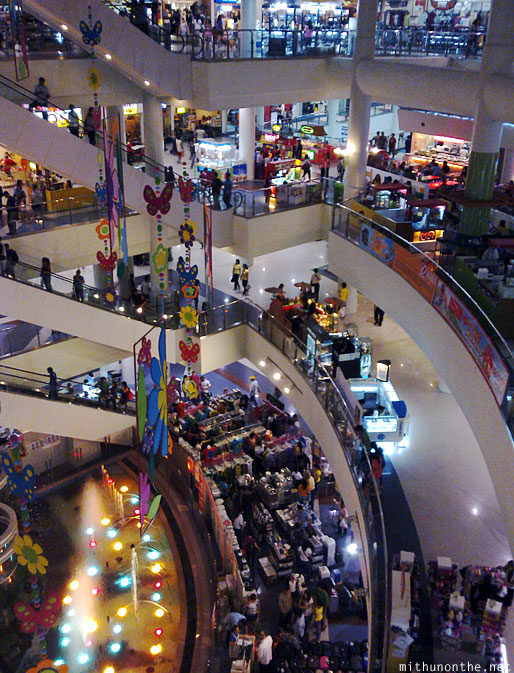


After hanging around the mall for a while, I decided to have an early dinner from here itself and then head back to the room.
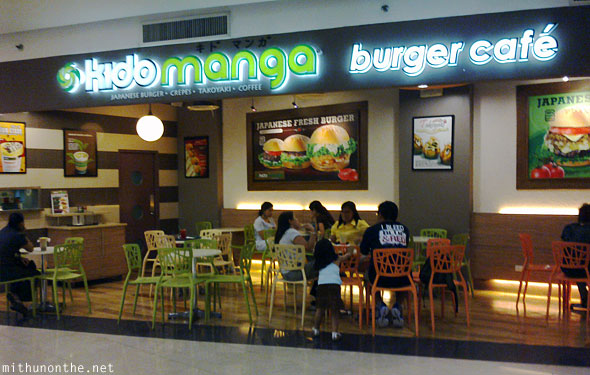
Being the curious foodie I am, I decided to give it a try. I ordered their shrimp burger meal (which at ₱150 cost the same as Wendy’s) and sat down, since the order was going to take 10 minutes (guess this restaurant isn’t what you would call ‘fast food’).
When the burger eventually came, you could say I was disappointed. I didn’t like the yellow sauce they put in the burger (don’t know if it was some sort of mayo, but it was a tad sweet). The burger patty was smaller than the one at Wendy’s and overall, it just wasn’t all that great. The fries were alright though.
Back in the room, I spent the remainder of the night talking to other backpackers who had just checked in to Friendly’s and later worked on some of my photographs.
Date: May 3rd, 2011
Today I was going to meet my friend Aimee. She was going to show me around Ortigas and then take me to Greenhills for some shopping.
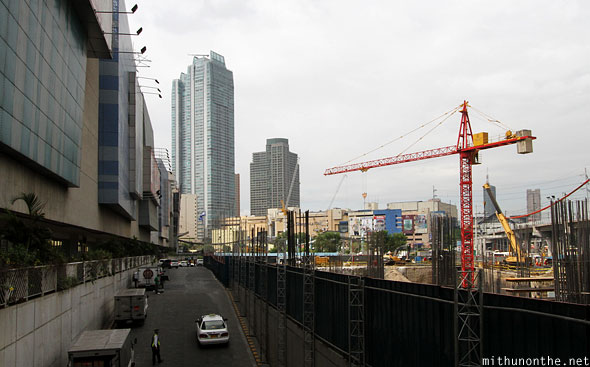

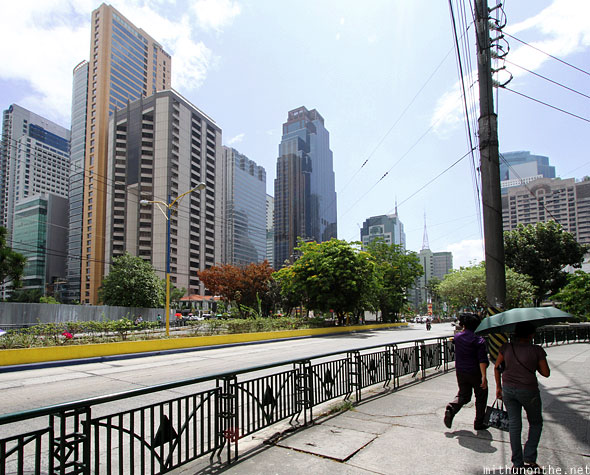
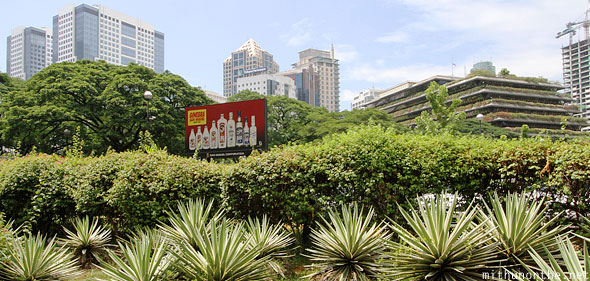

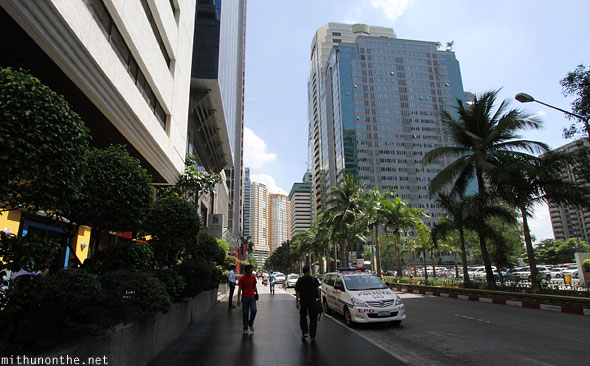




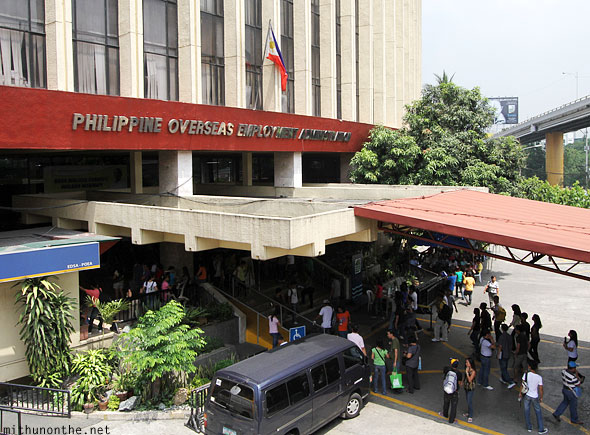

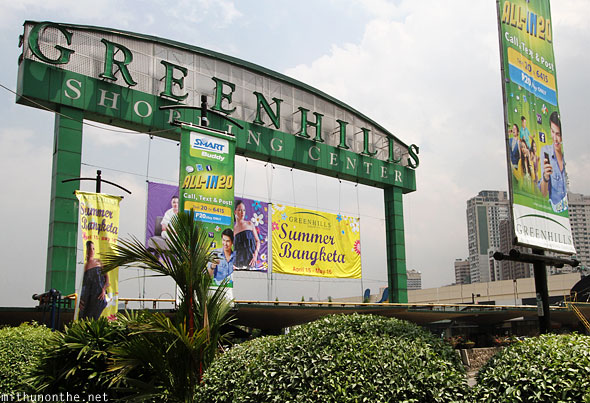
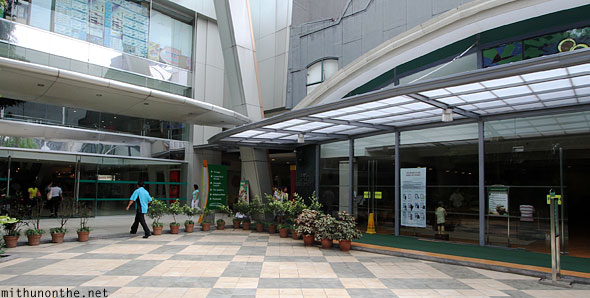
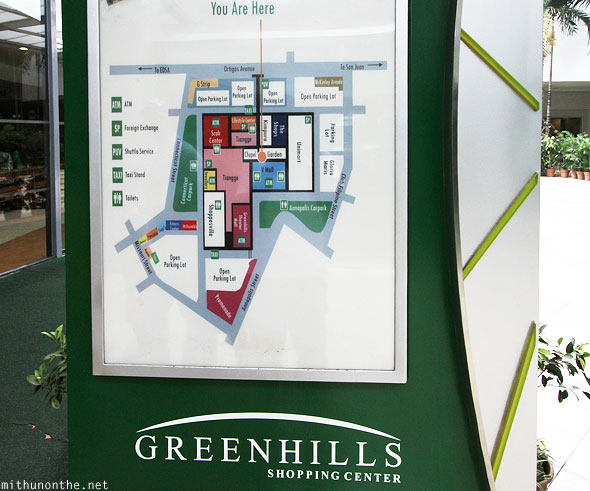


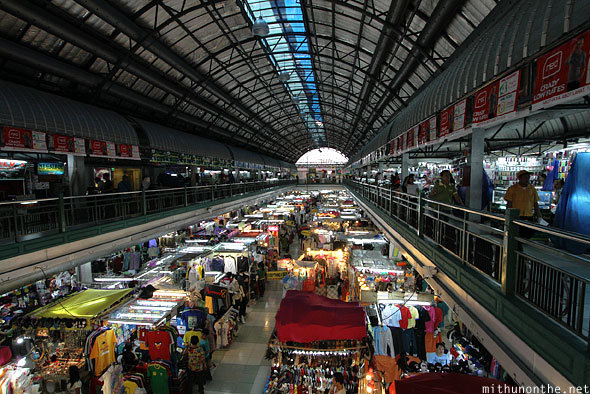
But after much walking around and checking out a few stores, none of the offerings were as good as the ones I saw in Bangkok. I guess Bangkok’s street shopping experience is still the best in South East Asia.
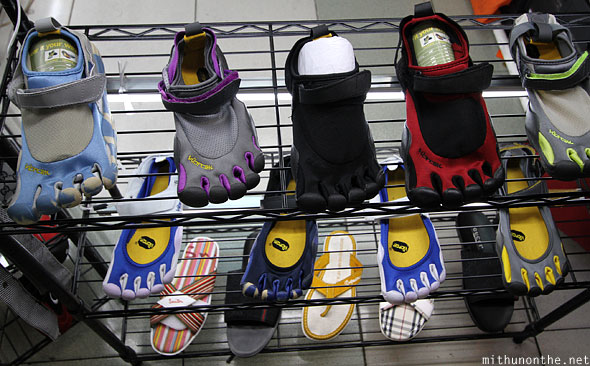
After an hour spent at Greenhills, and not finding anything worth buying at all, Aimee and I took a van taxi back to SM Megamall.


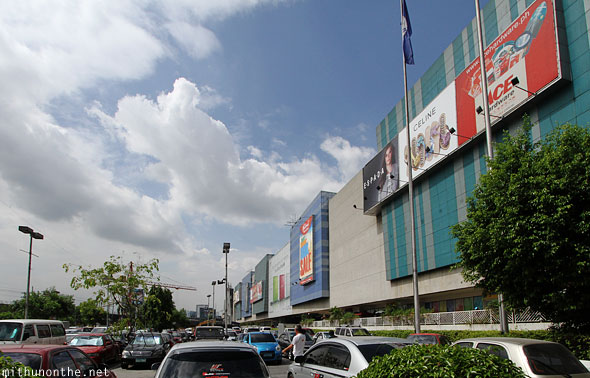

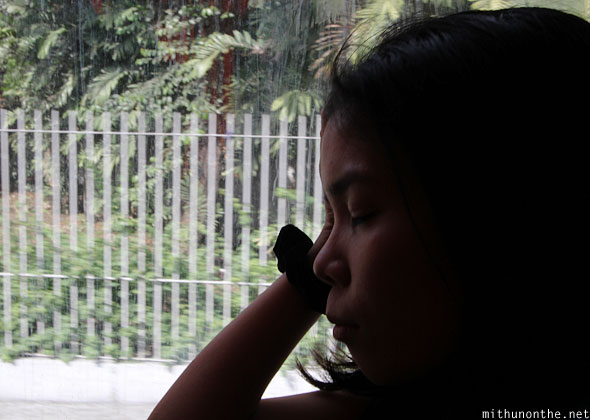
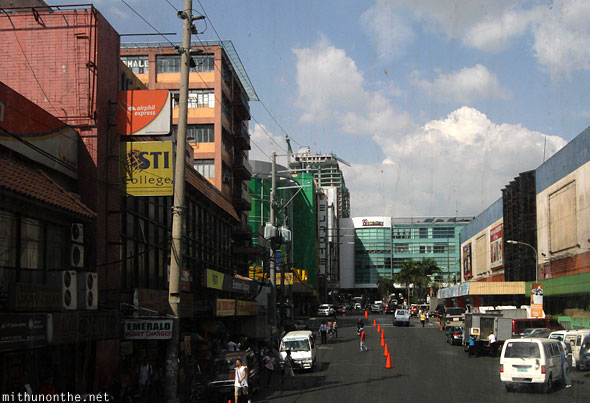
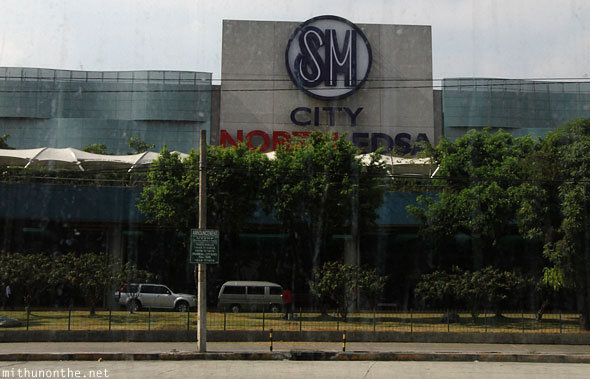
I walked Aimee back home, and we said our goodbyes as this would be the last I’d be seeing her. I was leaving Philippines tomorrow. It started to drizzle very lightly, so I made my way back to the main road to catch a jeepney to Monumento.

Unfortunately, what started out as a drizzle, eventually turned into rain.
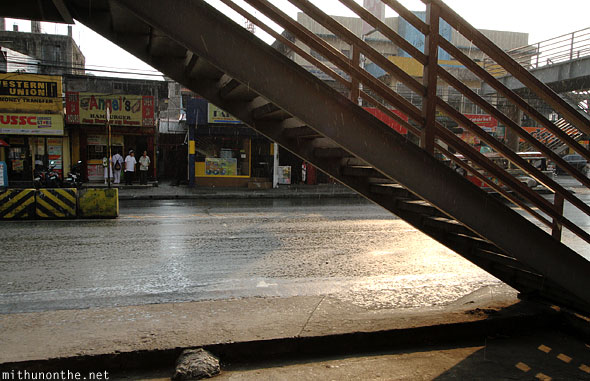
I took shelter in front of a Max’s Restaurant, but then, the rain got really heavy a few minutes later!
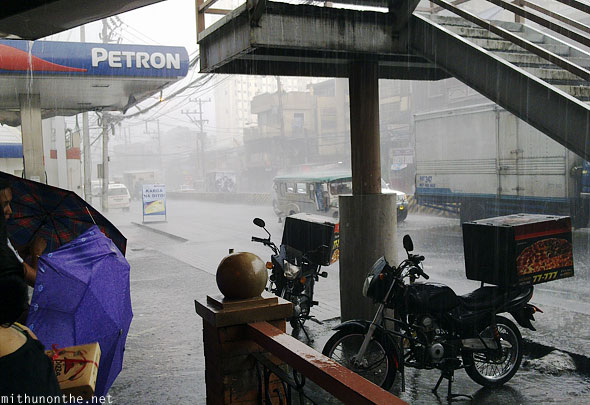
I waited nearly 45 minutes for the rain to subside. I managed to cross the road and caught a bus going to Monumento.
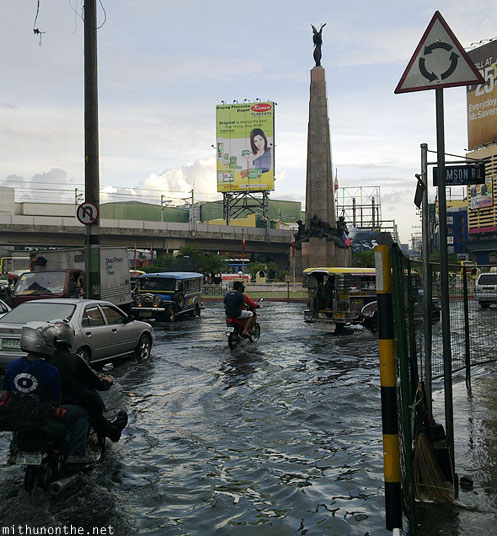
There were cycle taxis offering locals a ride to Monumento LRT station, but when I asked them ‘how much,’ their rate for me, a non-local, were ludicrous. So I just took a deep breath, hopped across the road — and got wet in the process anyway.
It was past 5pm and I still had some shopping to do. I got the train from Monumento and went to Pasay.
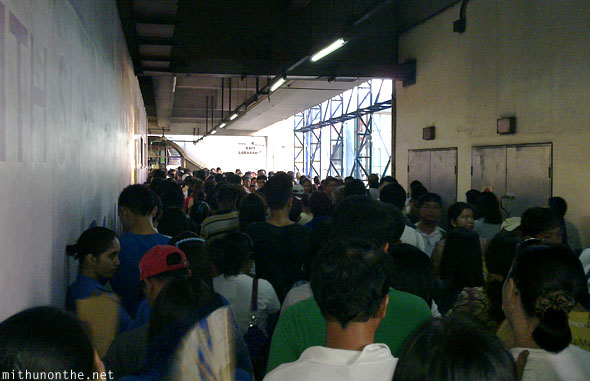
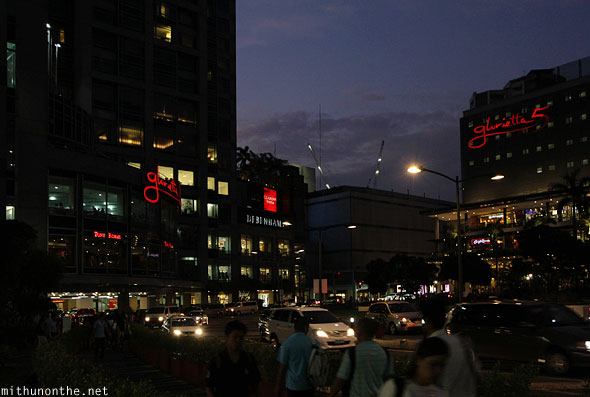
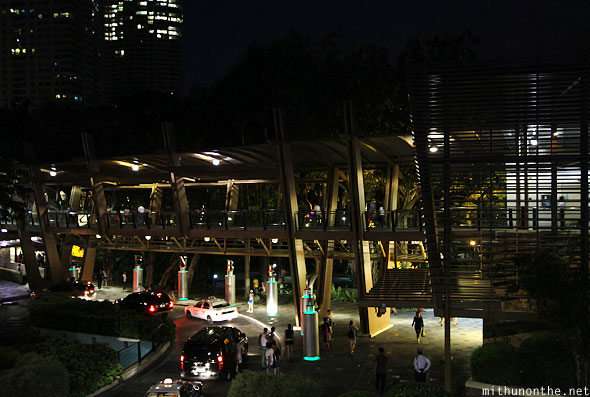

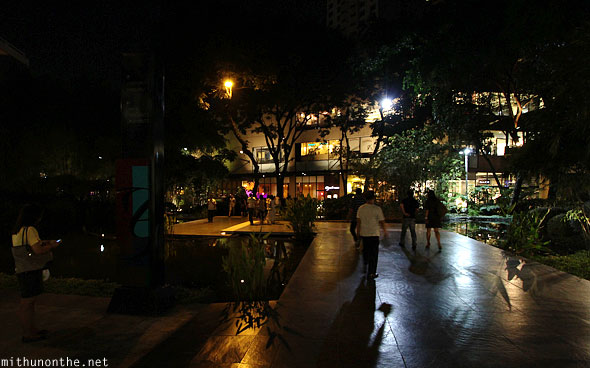
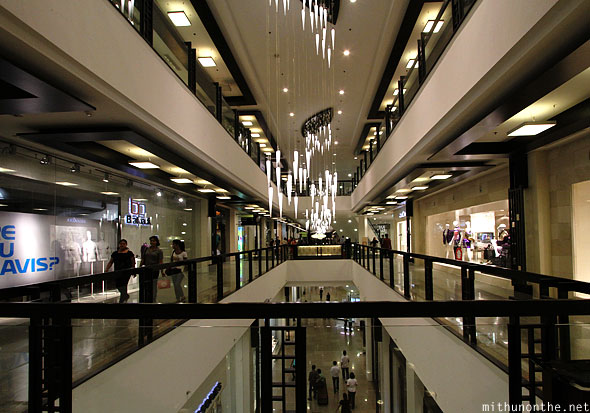
After window shopping in Greenbelt, I walked back to Landmark department store and ended up buying two K-pop CDs before walking all the way back to Ayala LRT station.
Once back at Pedro Gil, I wondered where to have my final meal in Manila. For kicks, Jollibee one last time was a consideration, but instead, I chose another chain owned by them which I had yet to try.
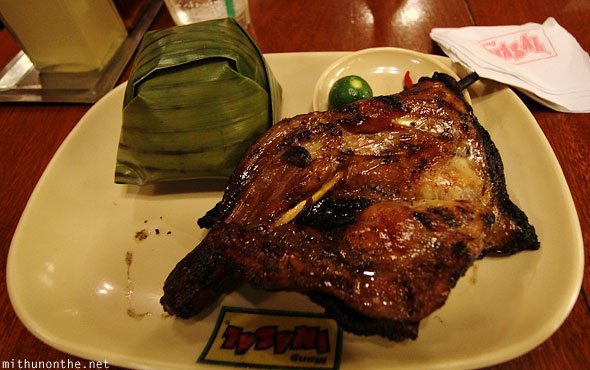
 (Cost ₱120/$2.7/€2)
(Cost ₱120/$2.7/€2)Date: May 4th, 2011 – Last day, lasting memories
I packed my bags yesterday night itself, just so I knew just how much space I had left to fill up with some last minute shopping. I still had a few things to pick up and so once I was ready, I walked to Robinsons Place one last time. The mall only opens at 10am, and I had to wait outside until it did.
Once inside, I quickly went up to the department store to see if they had any good t-shirts like the ones I picked up from SM’s department store yesterday. They did, really good ones too – retro gaming themed Mega Man and Mario t-shirts – all for just ₱200-₱250. I ended up buying five t-shirts for my brothers from Robinsons.
After that, I rushed downstairs to the supermarket, picked up some snacks and then stopped when I spotted a bottle of Absinth in the liquor store. Absinth is something I hardly find in most liquor stores, so I picked up a bottle for my friends back in Bangalore.
I rushed back to Friendly’s Guesthouse, adjusted my bags and checked out. I took a taxi to the airport – which stopped along the way to fill up fuel – leaving me cooking inside (no A/C in the car!). I still managed to reach NAIA Terminal 1 in time.
~~~~~~ What this Indian has to say about the Philippines 
Sigh. This was it. My epic two and half weeks across Philippines was finally coming to an end. In some ways, I was both happy and sad. Happy because this was such an amazing experience, and I saw pretty much every major attraction I planned to see. Hardly anything went wrong too.
Sad because, well, there’s still so much more I wanted to see! I still didn’t visit Davao – the second largest city after Manila, Boracay – the most popular island in Philippines, Mount Mayon – the most perfectly cone-shaped volcano, and of course the one place I really, really wanted to visit – the island of Batanes. I would love to return to El Nido, or even consider the islands of Coron even further north of Palawan, which people say are incredible.
I wish I could have stayed longer, but unfortunately, Indians are only given a 21 day tourist visa — that too, one that needs to be applied for in advance, something which cost me Rs. 3230 ($60) to get done. None the less, for a first visit to a country, I couldn’t be more proud of myself! Every Filipino who asked me where all I went had the same response: “Wow, even I have yet to go to all these places!”
In the end, it’s not just the natural beauty that appealed to me about the Philippines. As a Gulf-raised child from the state of Kerala in India, it was very easy for me to connect with many Filipinos I met. Especially when I stayed at Kabayan, where just about everybody was either coming from or going to Saudi Arabia, Qatar, UAE, etc. Bring up the Middle East, and it was a conversation ice breaker. I know what it’s like, and seeing Filipinos in the Middle East, I can now see how far they go just to make a living.
As a Keralite, I know my state’s greatest export isn’t coconuts — it’s people. Philippines isn’t any different. And that’s largely due to a culture (and religion) that encourages it’s people to be educated, but then, led by governments who wipe their hands clean when people were left with no choice but to leave the country in search of a better livelihood. It’s easy when all the government has to do is sit back and count the millionsbillions sent home by their own hard-working people abroad. The money from overseas workers is what fueled the local economy for decades. Some would argue it still does.
Things have started to change though. With a booming local economy, largely driven by the outsourcing movement, Filipinos now have an option. Work can be found in the country, it’s just that it may not pay as well as a job in the Middle East. The rising incomes of today’s Filipinos is what is fueling tourism within the country. I saw more Filipino tourists than foreign tourists at most places I visited. Which is not how it is in Thailand.
‘Brand Philippines’ isn’t well-marketed to the world either. Sure, San Miguel beer is now available in India, but I doubt the majority who drink it even know it’s Filipino. Yeah sure, there’s Charice and Arnel Pineda, but lets face it — only Filipinos make them appear ‘world famous’. What little most people know about Philippines is judged from its OFWs — Overseas Filipino Workers. Not exactly the best way to learn about the country and its people, especially if you go by the stereotype I hear from friends and family.
Fluency in English has given many Indians and Filipinos an edge over our Asian counterparts. There are over 10 million Filipinos working outside the Philippines, most of whom are in the Middle East. Many work as maids and sales people even in neighbouring Singapore and Hong Kong. But is it fair to draw a conclusion based on those Filipino workers? Not really. And just like millions of NRIs (Non-Resident Indians), especially those from Kerala, a large chunk of their income is sent back home to feed their families and hopefully one day, buy/build a home and retire.
Unless you have been on Philippine soil, your opinion about the Philippine people may remain skewed if you simply assumed every OFW is exactly the kind of people you will find back in Philippines. There are Filipino doctors too you know, they are just not as exported in the sheer numbers the nurses are. You have to come to Philippines to know what the modern day Filipino is like, not judge them based on the career choices they are forced to take up abroad.
All said and done, just like Kerala (and for that matter, all of India), Philippines suffers daily from its share of dirty politics. And what a history it has. Philippines was first colonized by the Spanish, turning just about everyone Catholic in the process. Then the Americans came, waged war with the Spaniards and took over the country. Philippine revolutionaries then fought the Americans. Then the Japanese invaded. Americans fought the Japanese (using many Filipino soldiers mind you) and the U.S. remained in control until Philippines finally gained independence in 1946. But like many countries post-independence, the nation’s headaches didn’t end there.
Post independence saw the struggle of Filipinos living under one corrupt government after another. The worst period being under GeneralPresident Ferdinand Marcos. Even as a kid growing up in the late 80’s, with little interest in world affairs, it wasn’t hard to not hear or come across the ‘Marcos’ name. Especially his infamous wife — just read her profile on Wikipedia and about Yamashita’s Gold — the wealth figures mentioned will leave you shell-shocked if you are non-Filipino who knew very little about Philippine politics.
Revolution after revolution, not much has changed in the political landscape. Or for that matter in society at large. The people may have progressed to a point where homosexuals are not victimized as badly as they are in other Asian countries, but stupid laws like the fact divorce is still illegal persist! Just like the majority of Indians, Filipinos hate their politicians with so much vitriol, reading any news article online about a high-ranking public official comes with its share of nasty comments.
Even the nation’s biggest celebrity, Manny Pacquiao, has joined political fray. How much of an impact will his political punches have? Who knows.
One thing I did find a bit annoying though were the many locals complaining about Manila. I still don’t think it’s as bad a city as they claim it to be. I’d like to see the very same people go to Mumbai – where real estate costs more than Manila – then come back and compare. Manila’s infrastructure still beats most Indian cities. Probably the very reason why Philippines has now overtaken India as the global call center hub.
Of course, not all infrastructure in Manila is worth bragging about. And there is no greater example of that than NAIA Terminal 1 — the terminal for most international flights. Also considered to be one of the worst airports in the world!
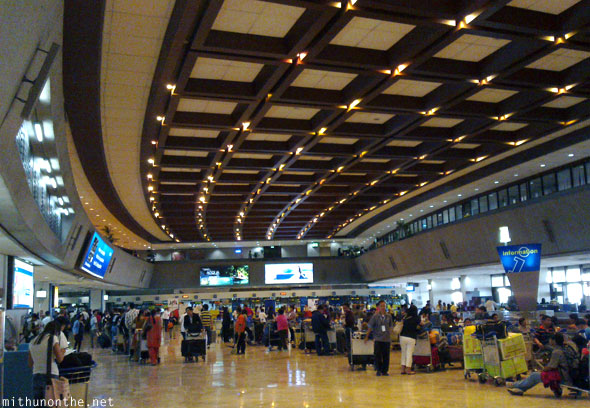
This terminal was built in 1981… and it still looks like that! I didn’t take any other photo besides the one above because it only goes downhill from there. Facilities are poor, and even though I didn’t face any issues, I have read about Filipinos who experienced corruption at their own airports.
Maybe it’s because I’m a tourist or a ‘foreigner,’ so the airport officials could be too ‘shy’ to try anything funny with us. But, there is one final slap-in-the-face/kick-in-the-groin every passenger gets for using this outdated terminal upon departure. Every airport I used within Philippines had an airport usage fee: ₱200 at Cebu and just ₱40 at Puerto Princesa, since both were for domestic flights. For NAIA Terminal 1 international passengers? ₱750 ($17/€12).
Now I know a lot of airports charge a user fee, and sometimes it’s even included in the ticket cost. Heck, even New Delhi International Airport has started charging passengers Rs. 1300 (₱1100) for international flights – which sucks. But, at least they began collecting this fee after they built, what is now, the 8th largest airport in the world.
Even as a non-Filipino, walking around this terminal after paying ₱750 made me angry. All I kept thinking about after I paid this ‘airport development fee’ was “how many years have they been collecting this?!” and “what the hell are they doing with this money?!”. When I think about my money going to waste or going into a suited up thief’s pocket, it makes my blood boil, be it in India or abroad.

As I looked around, I didn’t notice many Indians besides myself. There was one Indian couple, who looked Punjabi, but they didn’t look like the Punjabis I was used to seeing. They looked more like the Indians who came to this part of the world decades ago and tried best to keep their heritage. The ‘lost Indians’ so to speak.
Oh, I need to bring this up. In Manila, occasionally a few jeepney drivers on the streets would shout “Bombay!” to me. I assumed it was because it’s the only famous Indian city everyone knows, so I used to just smile back. But when I told Aimee about this, she told me that’s not why. Get this, Indians don’t have a good reputation in the Philippines (among the masses) because of certain “Bombays” in the country. It’s the slang term used to refer to several (illegal) money lenders, most of whom are of Indian origin, and have been in the Philippines for decades. Most of their ‘customers’ are often poor street vendors and stall owners, people who wouldn’t get much help from big banks due to the lack any of valid documentation. The “Bombays” approach such people, lend them money, but at very high interest rates. Of course, when things get bad, these “Bombays” show their nefarious side. You could say: “Well, how come they are allowed to operate?”. In a country where the police can be paid off, a lot can be ‘allowed’. They are basically ‘loan sharks‘. For more details, read this excellent research paper I dug up when I was curious to find out more about these “Bombays”.
I still didn’t see many Indians in the two and half weeks I spent in the Philippines. The few I did see were only in Manila and looked like they were here because of the BPO majors in the city — or were visiting from Singapore.
That said, I don’t expect many Indians to fly all the way to Philippines for tourism — because it’s a hard sell. I can show my friends the beaches of Palawan and they’ll say: “Doesn’t Thailand have such beaches?”. And it’s true. When Thailand offers most of what the Philippines also offers (nightlife included), chances are they rather take a 3-4 hour flight to Thailand than the 7-8 hours it takes to reach the Philippines. I can argue about how beautiful the beaches, the stunning rice terrace farms, and how less crowded Philippines’ tourist spots are in comparison, but it wouldn’t matter to the majority.
[Fun trivia: Some similarities between India and Philippines I observed — the mobile numbers are 10 digits long and all begin with 9; the men use the term “boss” a lot :)]
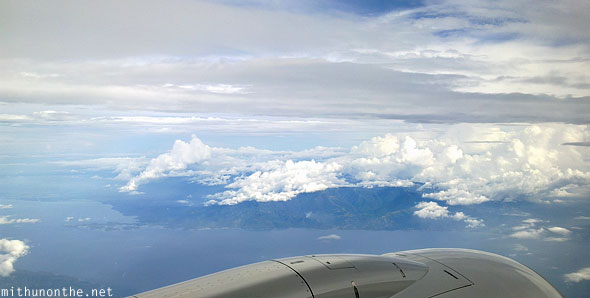
A lot of international travellers — families, the new markets, and in the case of most Indian tourists — travel on package tours, because it’s convenient (plus they’re too lazy to do all the research themselves — that’s my reasoning). Philippines is a tough country sell as a package tour, because you simply cannot do it in less than a week. Being a nation of over 7,000 islands, it’s not landlocked country like much of Thailand or Malaysia’s touristy half (KL, Penang and Langkawi). If you are in Manila and want to see the amazing Chocolate Hills, you have no choice but to fly. Palawan? Flight again. If not flights, then by ferry. In short, accessibility is an issue. Well, easy access that is. Package tourists prefer convenience, backpackers enjoy the challenge, tiring as it may be.
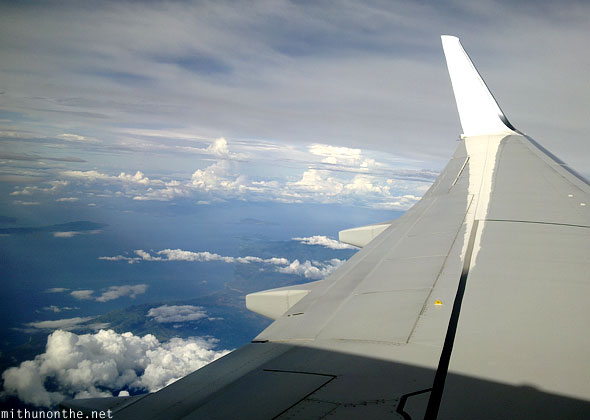
Would I go back for a second visit? If I had the chance (and the money), I would go back in an instant! Would I work there? Hmm, only if the work itself was interesting and the pay package makes it worthwhile. Would I live in Philippines? That’s… a bit tough for me to answer. Cebu maybe a preferred city for many retirees, but the only city I would only consider living in is still Manila. It’s a huge city, yes, but it’s the only city that would keep me entertained. K-pop stars drop in often and it’s global enough in its options. I could easily afford to buy an apartment in Manila with my current savings, something I can’t even do back in Bangalore. But cost of living aside, typhoon season scares me a bit. Typhoons hammer much of Philippines every year, and Manila is always hit. Everytime I see the footage, I can’t fathom what the poor slum dwellers must go through… every year!

Despite all the bad, one lasting impression I will always hold in positive view is the general attitude of the Filipino people. I really like them, they are very friendly and I love their mannerisms (the good ones). Everytime I was at store, the sales staff would approach me with a “♫ Hello sirrrrrrrrrrr ♪” — and it still resonates in my head 
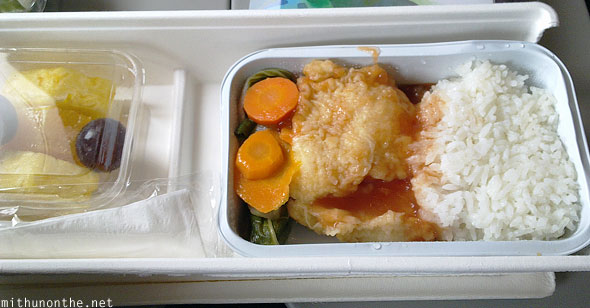
The only notion about Philippines that remained unanswered for me was… I still don’t know what Philippine culture is! I didn’t see much that seemed ethnically Filipino, or a heritage that is native to this country. Maybe it’s because of the 300 years of Spanish rule, succeeded by the years of ‘Americana’ that followed. Philippines has, in some way, lost its native identity — probably the only South East Asian country to do so. The last few generations of Filipinos absorbed a culture and influence America left behind, and it’s now very much become their own — like their love for basketball, the preferred genres of music, fast food, and even the English they follow.
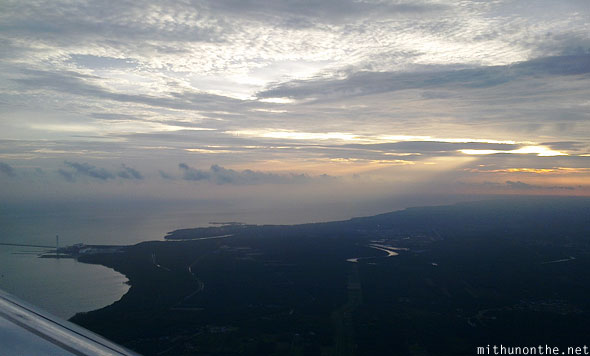
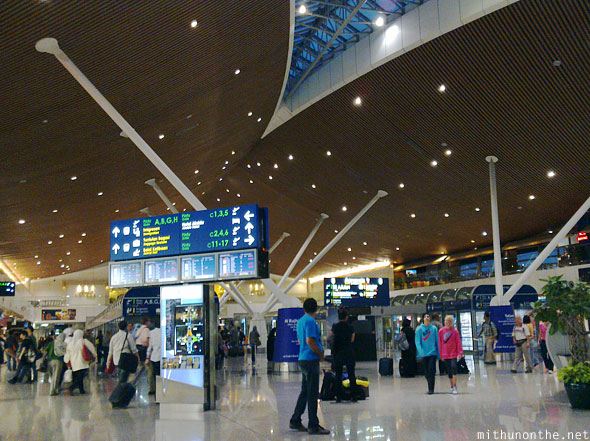


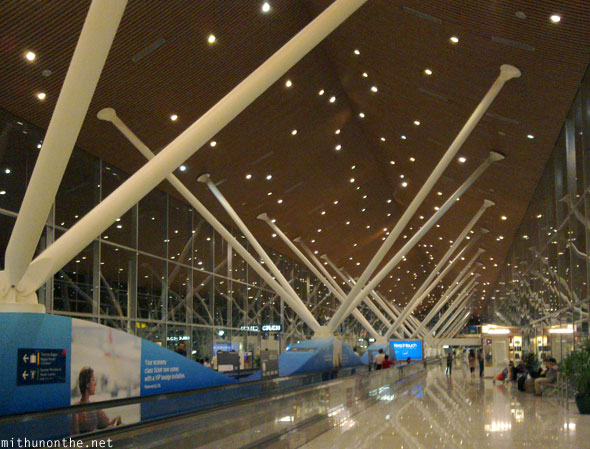
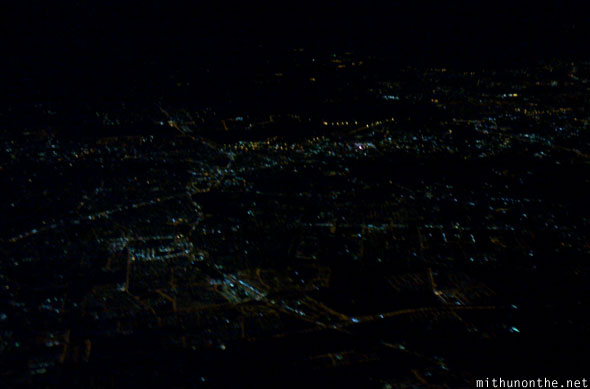
I began working on this Philippines series in June, after I got laid off from my company. Six months of sitting and writing 16 posts, nearly 2,068 photos used (out of over 5,000 clicked)… it was a lot of work, but it’s with immense satisfaction I conclude what has been the most satisfying international trip of my life so far! The response from my friends back in Bangalore when I showed them my photos of all the wonderful sights Philippines has to offer was nothing short of amazement. I guess I’ve played my small role in promoting the country.
What else can I say… hanggang sa muli Philippines!
Previous posts in this series:
Philippines 2011: Day 14 – El Nido island hopping tour A and sunset at Las Cabanas beach, Palawan
Philippines 2011: Day 13 – Puerto Princesa to El Nido by bus
Philippines 2011: Day 12 – Puerto Princesa Underground River tour, Palawan
Philippines 2011: Day 11 – Arriving in Puerto Princesa, Palawan
Philippines 2011: Day 10 – Bohol tour: Chocolate Hills, Loboc river cruise, Tarsiers, churches
Philippines 2011: Day 9 – Cebu: Fort San Pedro, Basilica of Santo Niño, Taoist Temple
Philippines 2011: Day 8 – Manila tour: Rizal Park, Intramuros, Manila Cathedral, China Town
Philippines 2011: Day 7 – Leaving Angeles City for Manila, Mall of Asia
Philippines 2011: Day 6 – Good Friday in San Fernando, San Pedro Cutud Lenten Rites
Philippines 2011: Leaving Sagada for Baguio, and arriving in Angeles city (Days 4 & 5)
Philippines 2011: Day 3 – Banaue town; heading to Sagada via Bontoc
Philippines 2011: Day 2 – Banaue rice terraces; trekking to Batad village
Philippines 2011: Day 1 — Manila American Cemetery and Memorial, Fort Bonifacio
Philippines 2011: Flying over South China Sea for the first time


